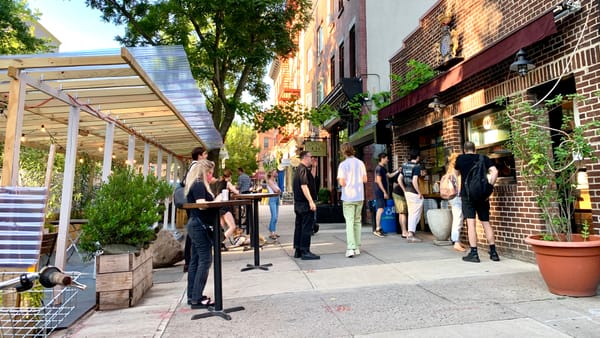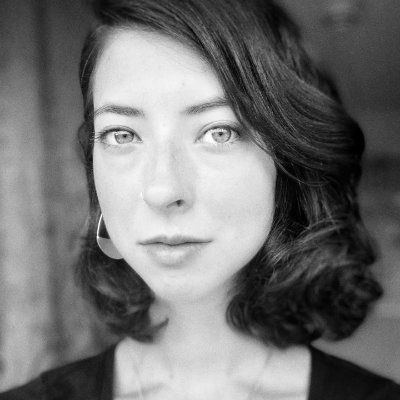Why the Public Square?
The public square is the heart of community. It is where people gather, celebrate, play, and enjoy life. It is where they make plans to meet friends for coffee, or get together to discuss the week by the fountain, or play frisbee with their families. A good square is somewhere that everyone feels drawn to when they want a place to get together because it is the natural focal point of town and a magnet for social life.
What Exactly is a Square?
Public squares go by many names around the world: plaza in Spain and Latin America (and sometimes the U.S.), piazza in Italy, platz in German-speaking countries, and simply "square" in many other places. In many small towns they are referred to as village greens.
Squares are many things. They can be parks and gardens, or even clearings nestled into sidewalks. Their defining feature is that they are public places where people gather.
Larger squares often center around a church, government building, or cultural hub (like an opera house), and frequently feature monuments and statues of prominent cultural and historical figures. Some squares double as markets, and many have activated edges with cafes, shops, and seating. The majority or entirety of a square is without cars. It is a human (and pets) only space.
Takeaways From Our Biggest Projects
We have worked on many squares around the world over the past few decades, turning them from fine to outstanding, and we've learned what makes them come alive. As we share these findings with you, we hope they inspire interventions for a square(s) in your community. We need to bring the heart back to our communities if we are to have joyful and prosperous futures.
Detroit - Campus Martius
In 2004, Campus Martius Park brought Detroit's downtown back to life and changed its trajectory. Nearly twenty years later, we see the remarkable results persist. Just this year, the square was awarded best square in the United States by USA Today. It has served as a catalyst for the transformation of the entire city and as an inspiration for many others.
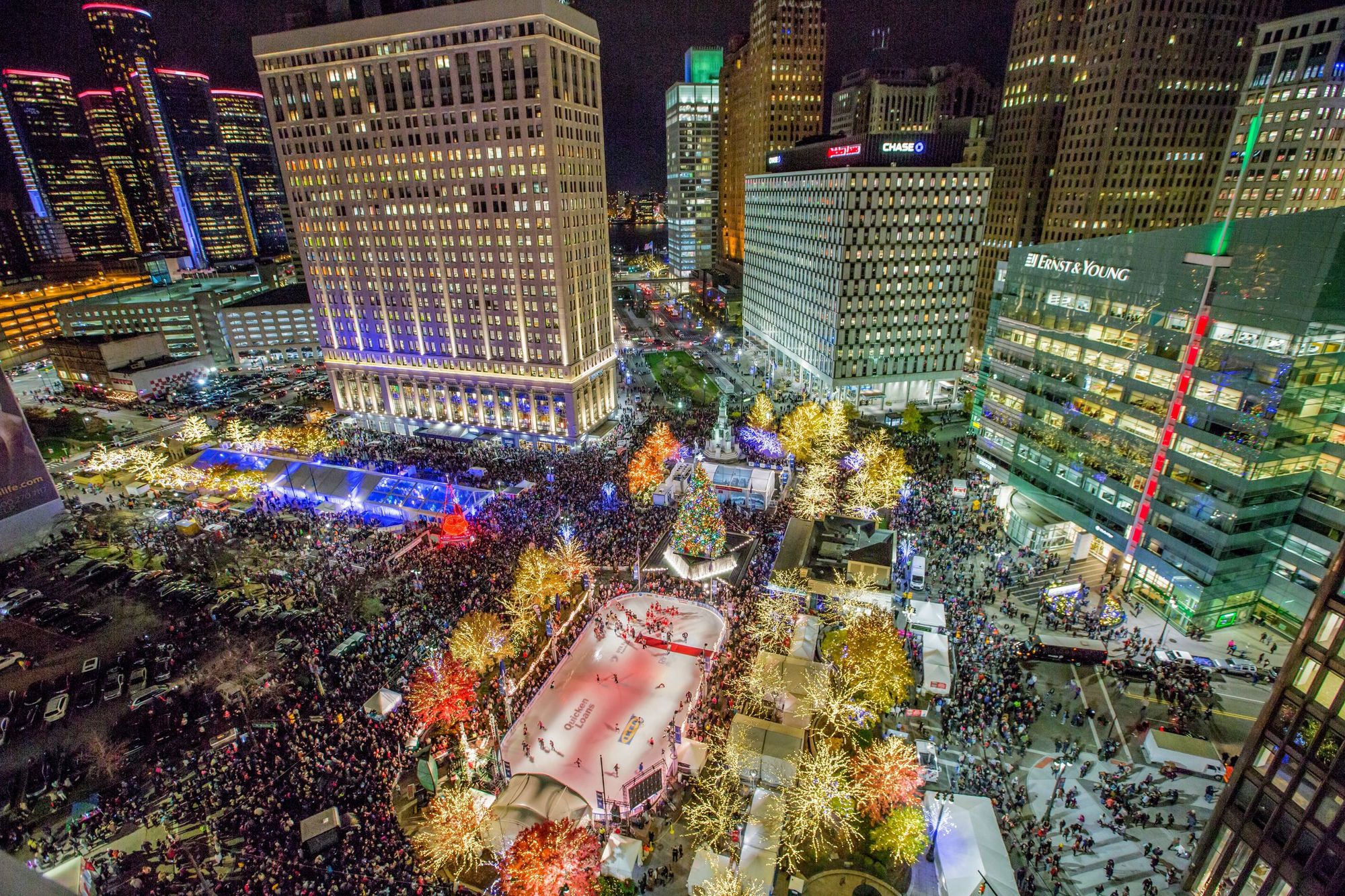
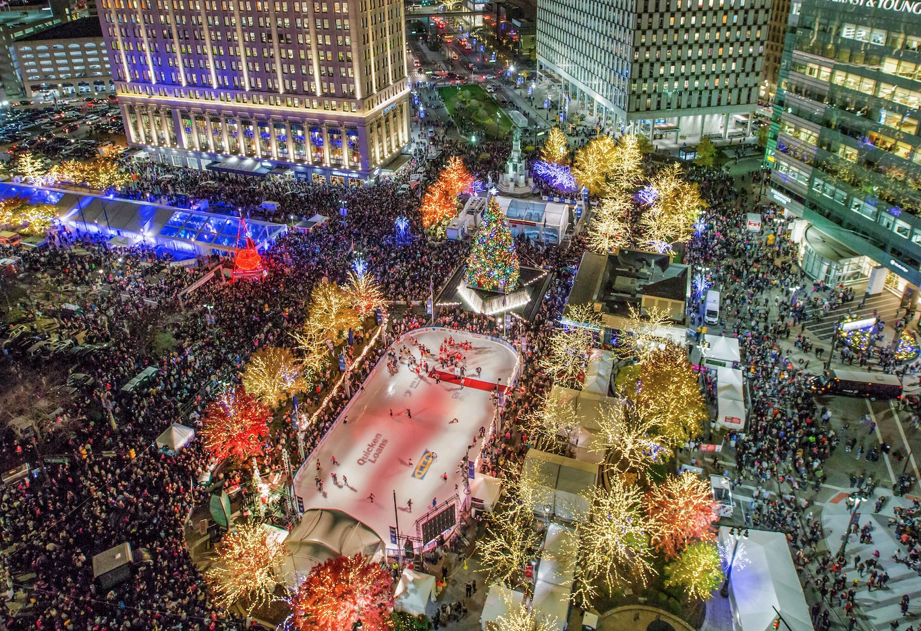
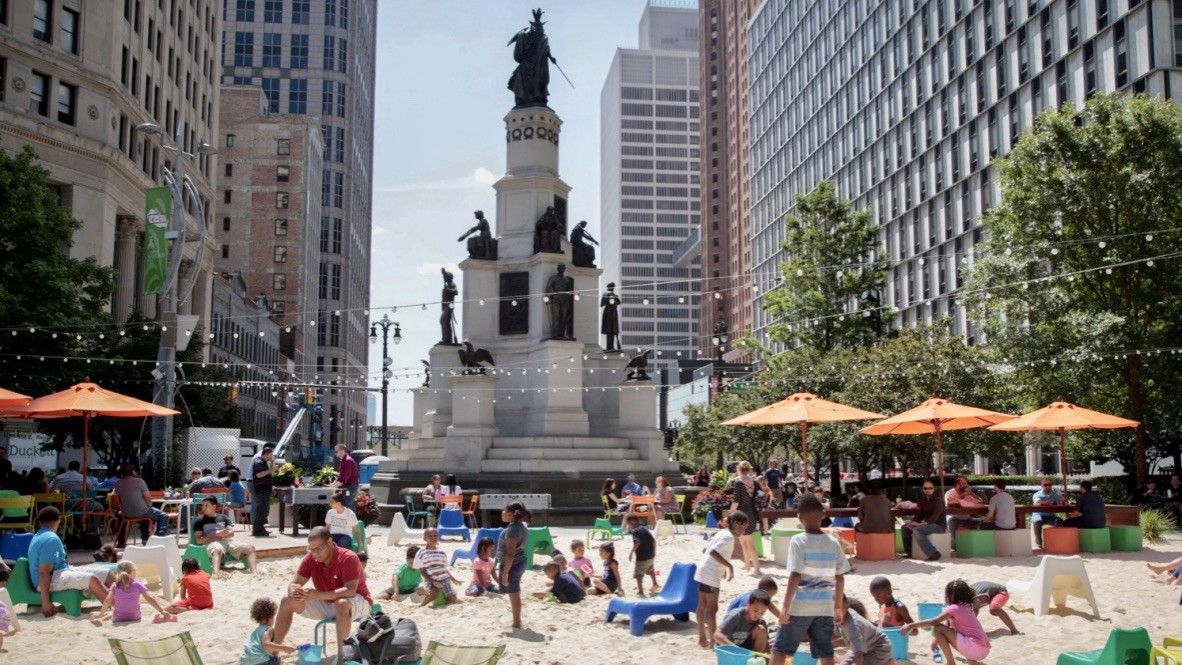
In 1999, Campus Martius, the city's once vibrant retail and transportation hub, had been completely emptied out and taken over by car traffic...becoming one of the biggest "killer intersections" in Detroit.
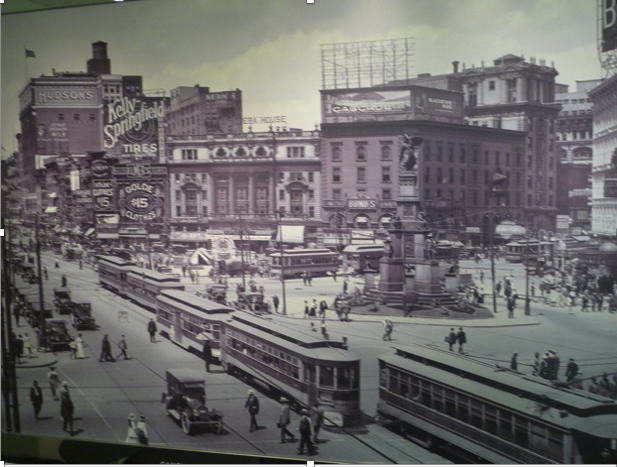
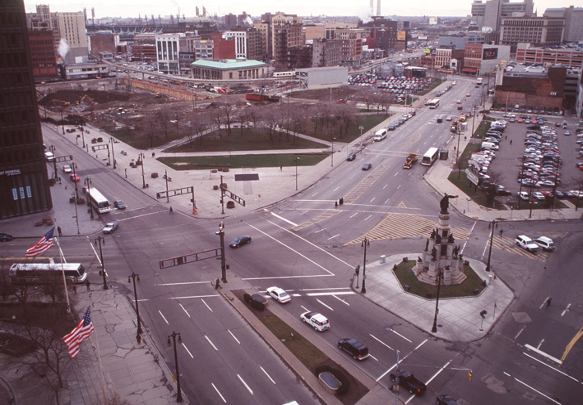
Photos from the earlier days of the current site of Campus Martius: A monument that became surrounded by cars.
But in 2004, Campus Martius Square opened after renovations in honor of the city's 300th anniversary. The new square rose like a phoenix from the ashes of the old one, offering numerous amenities and activities that attracted people, businesses and vibrancy. The square featured a restaurant, holiday and seasonal activities like ice skating, and programmed activities like movie nights, music events, outdoor yoga and more. From the moment it opened, Campus Martius became the heart of a "New Detroit."
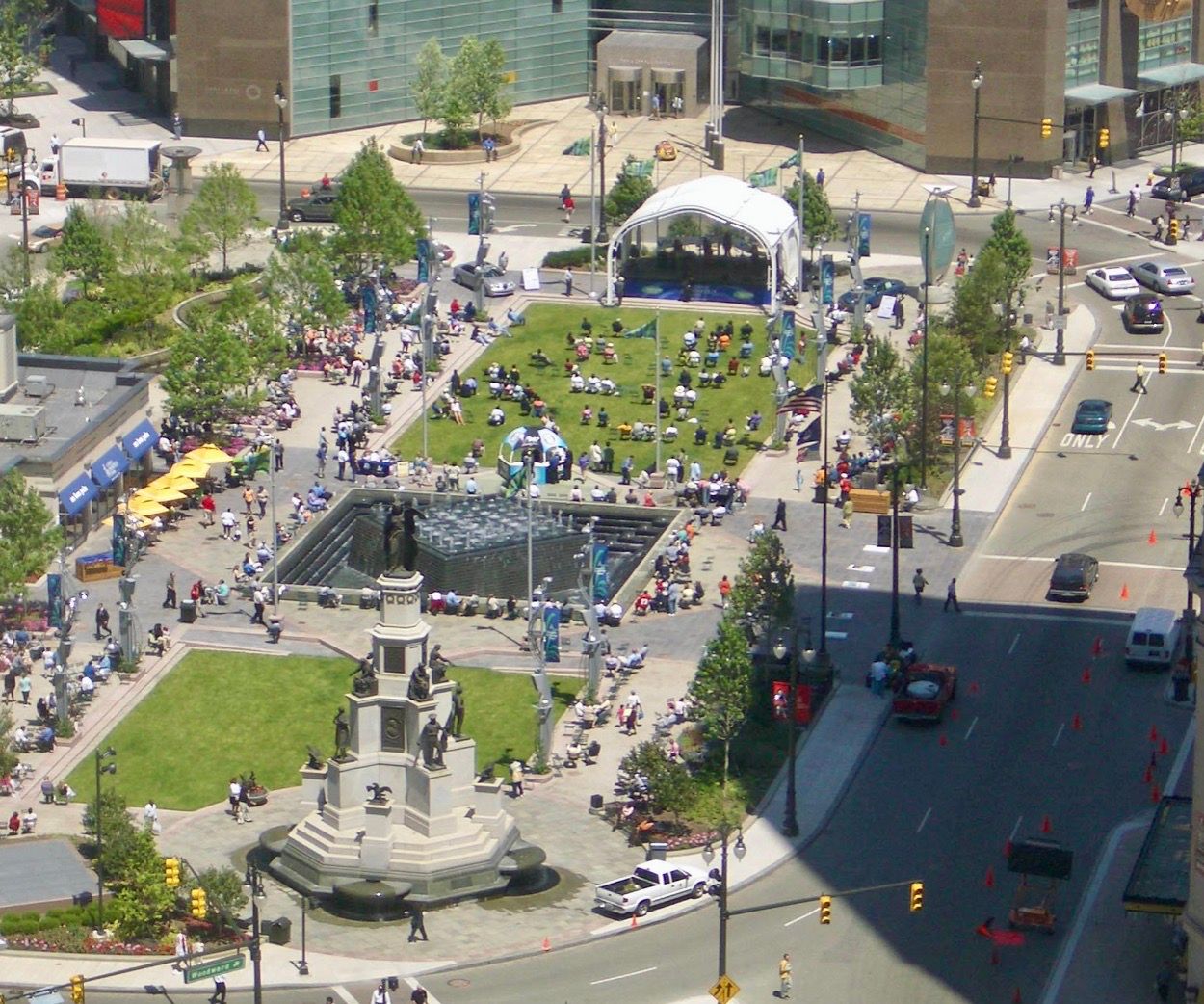
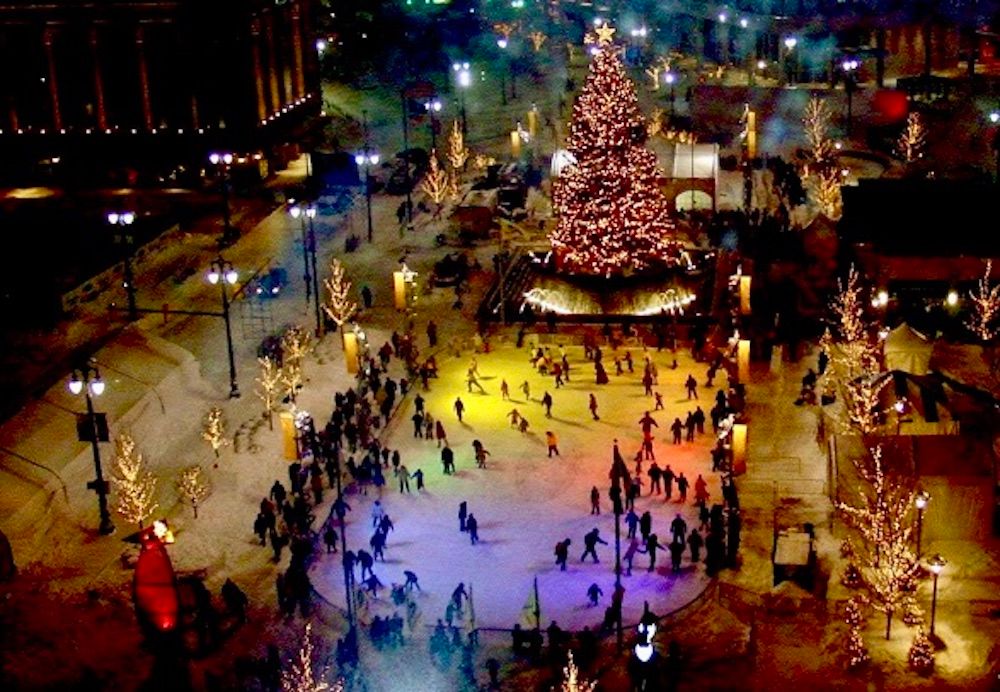
A second transformation in 2013 included an “urban” beach space in the center of Campus Martius sponsored by Southwest Airlines. Once an experiment that raised eyebrows, it is now a beloved permanent destination.
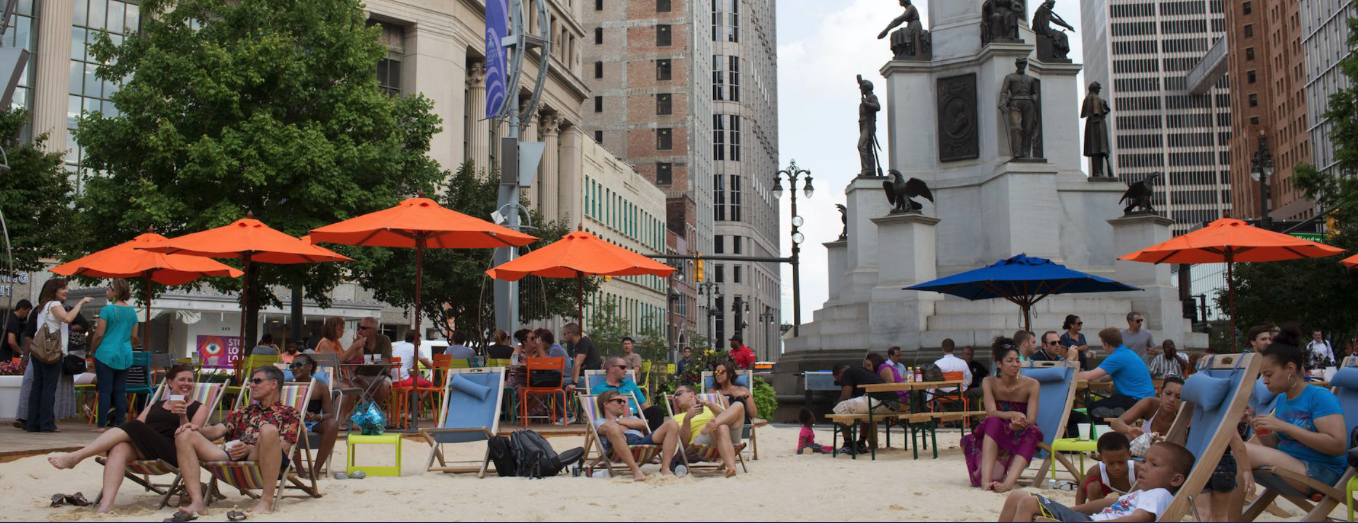
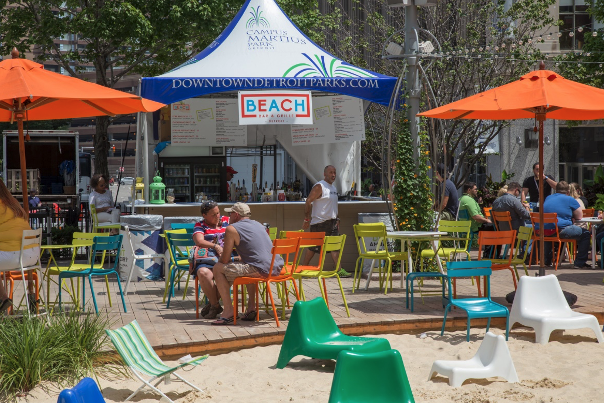
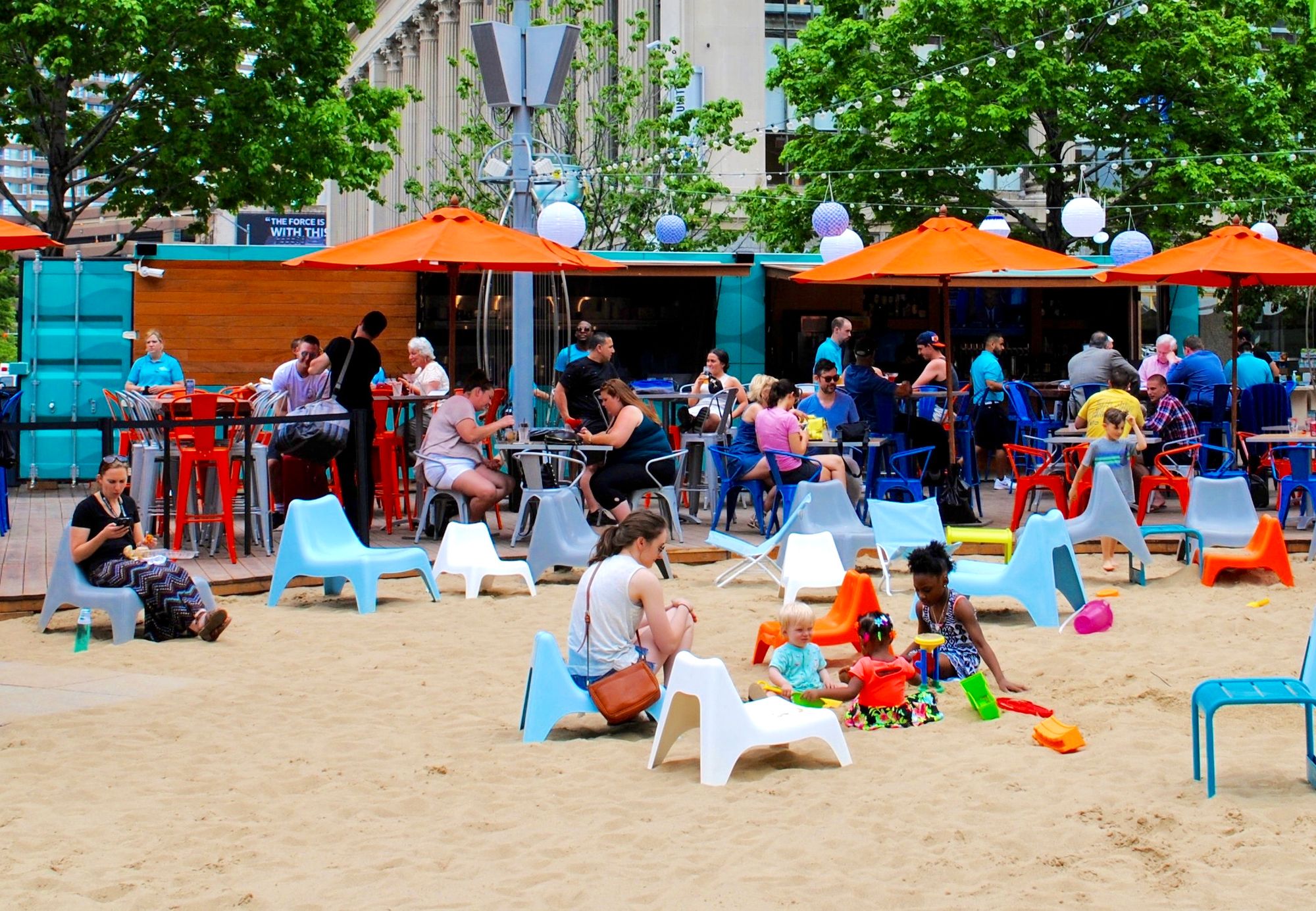
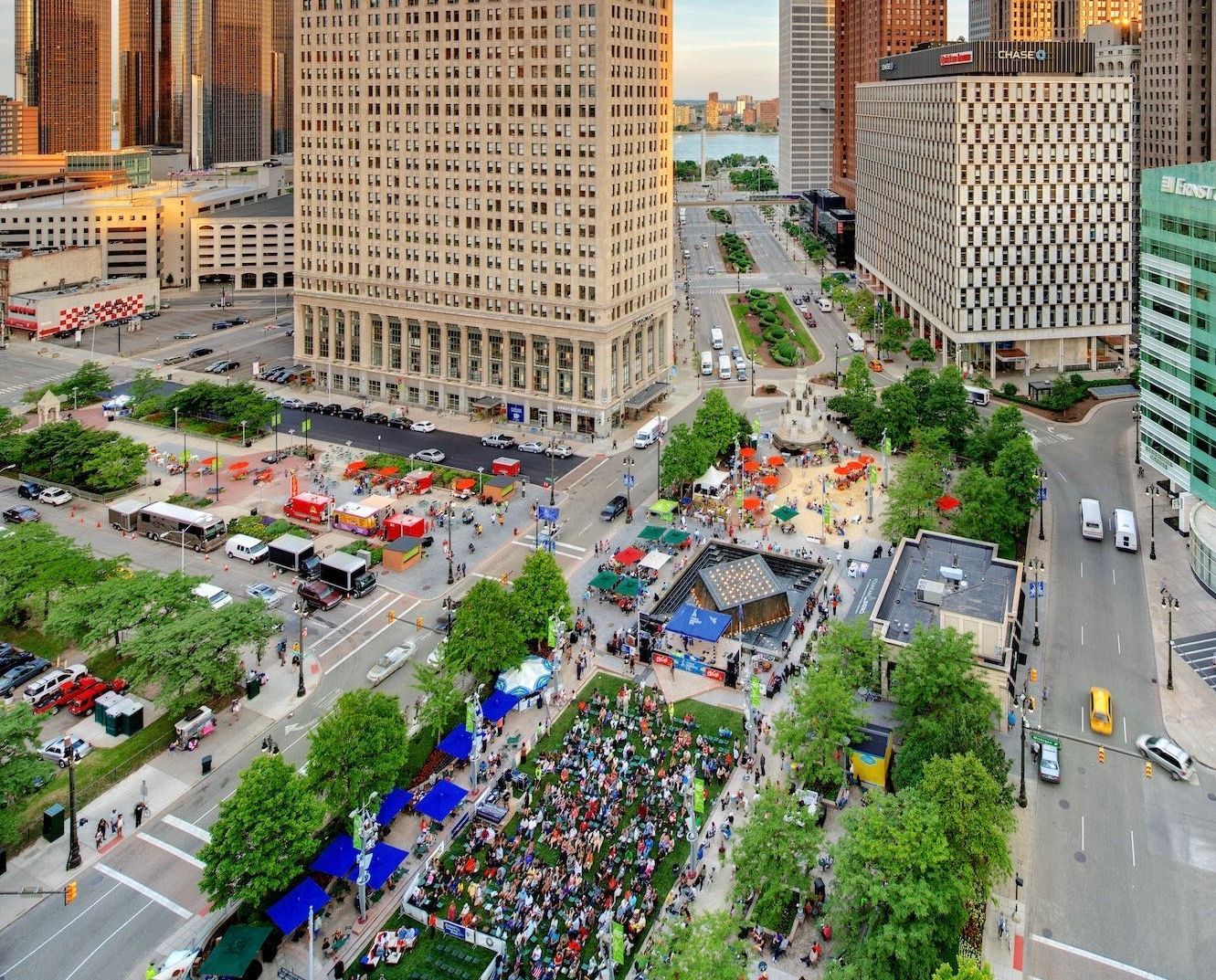
Takeaways
1) It's never too late – Even a square that becomes completely overtaken by cars and traffic can be brought back to life. The first big step is taking out the cars. The second is making it appealing to people by filling the space with activities and amenities that people love.
2) The "craziest" ideas are sometimes the most successful – Who would have thought that a beach in the center of Detroit would have been so revolutionary? Those who take creative, unconventional approaches often reap great rewards.
3) Have an "anchor" – A restaurant on a square, like Campus Martius' Beach Bar, can anchor it and provide an important stream of revenue for its management and upkeep. This is a takeaway that other famous squares like Bryant Park have applied successfully.
Bryant Park
In the 1980's, we mapped the location of activities in Bryant Park. We found that a lot of drug dealing and few wholesome activities were taking place. We also found that the reason for this was a profound lack of programs, activities and amenities. In other words, there was nothing wholesome or interesting for people to do there. On top of it all, key locations were shielded from outside view, creating the perfect environment for shady activity and not much else. So we did what we do best – we turned everything upside down to change the place from inadequate to extraordinary.
We worked with the Bryant Park Restoration Corporation (BPRC), led by Dan Biederman, the park’s management entity, to open up entrances and remove shrubs that prevented people from seeing into the park. We added movable seating, installed food kiosks, introduced performances and games, launched an outdoor movie series, added an outdoor reading room, a small carousel, ping pong tables, and hosted regular markets. That was just the start. Bryant Park is now one of the most beloved places in the city, and a landmark for what other cities would like for their future.
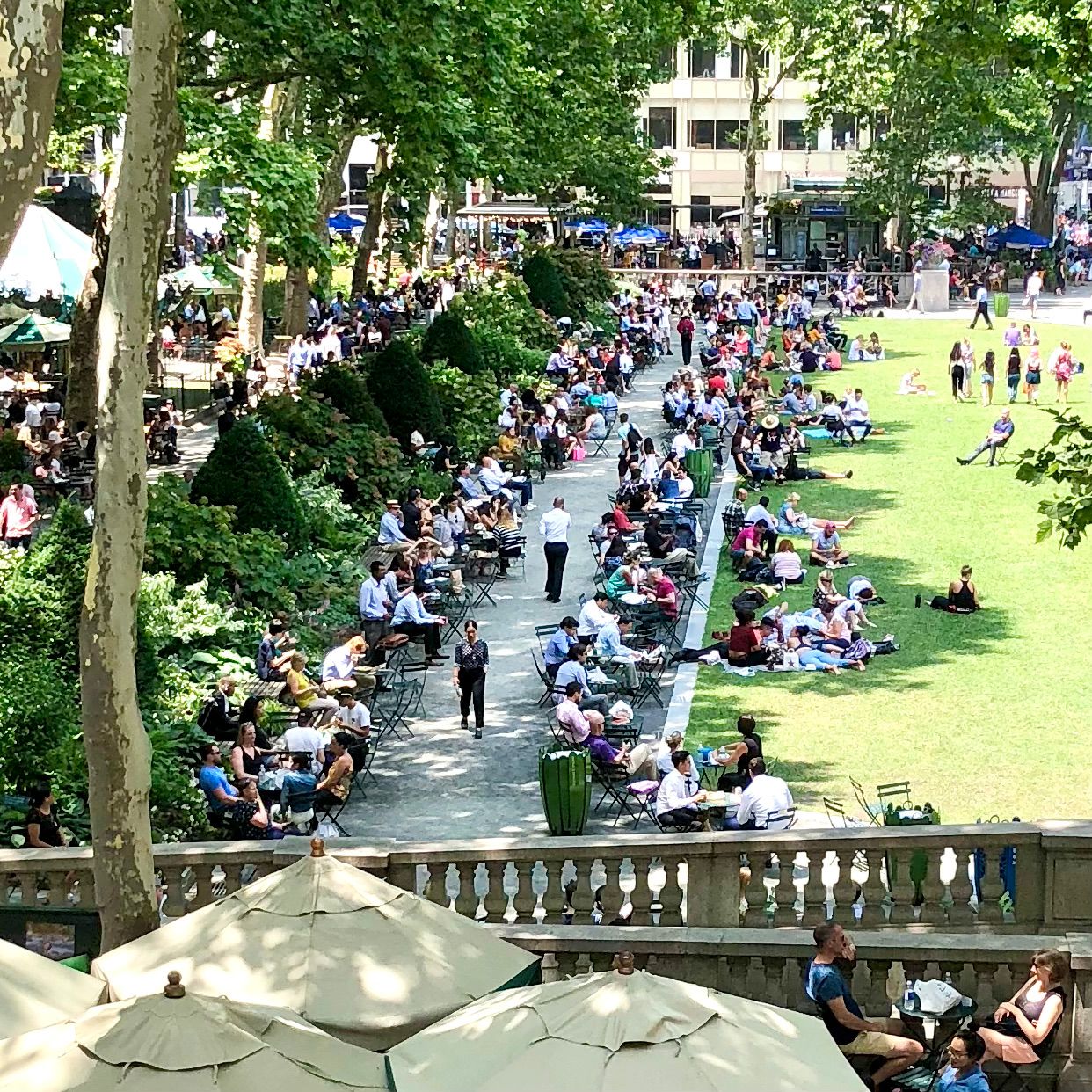
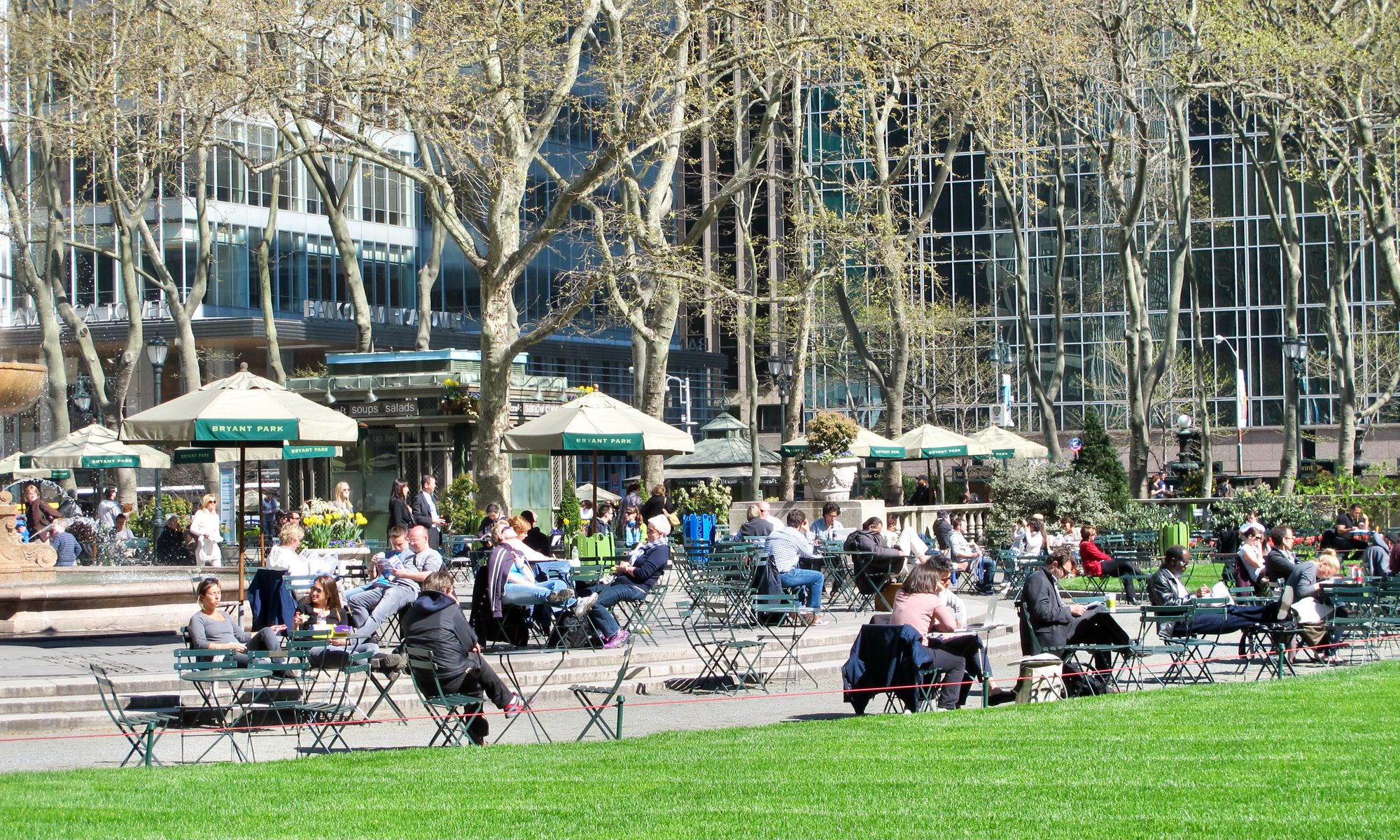
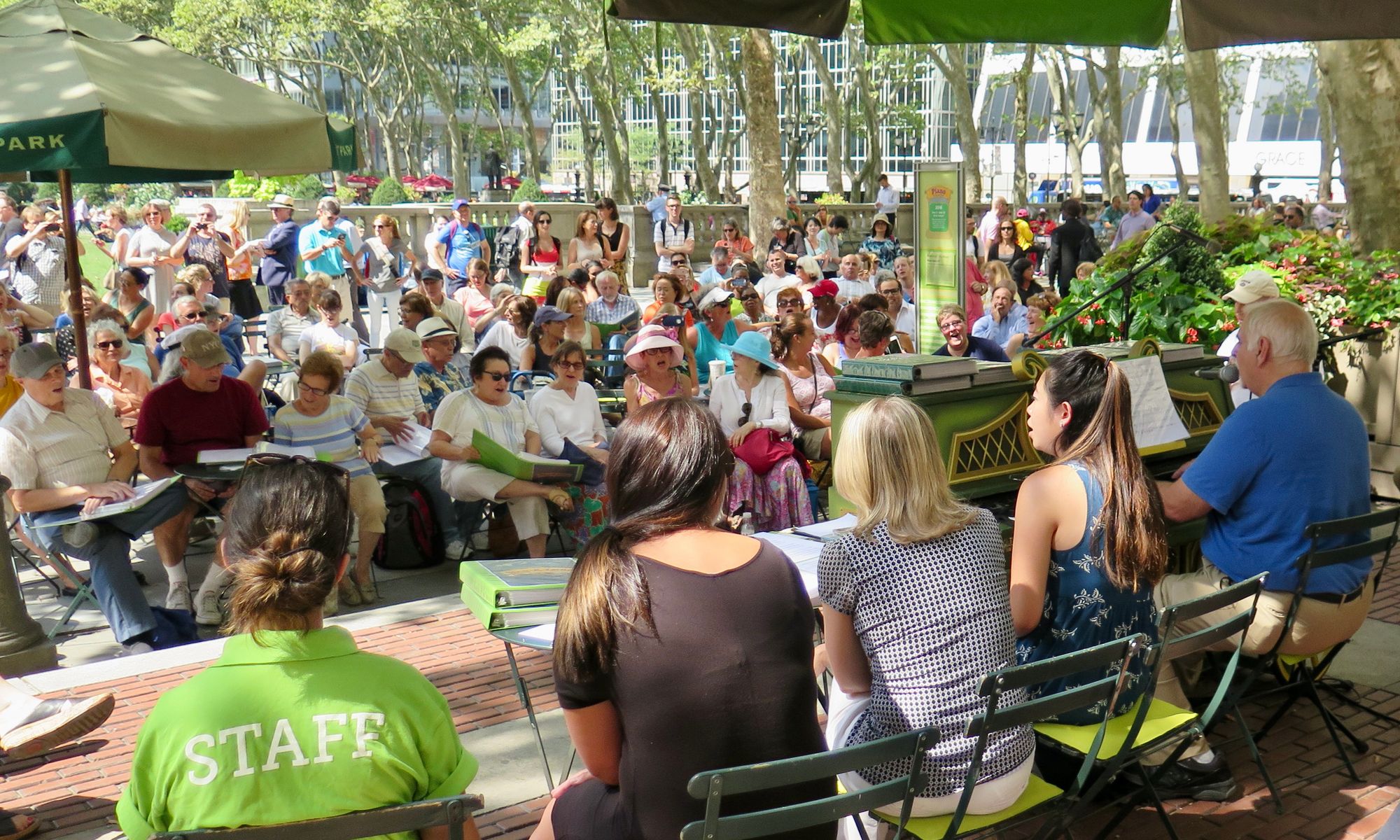
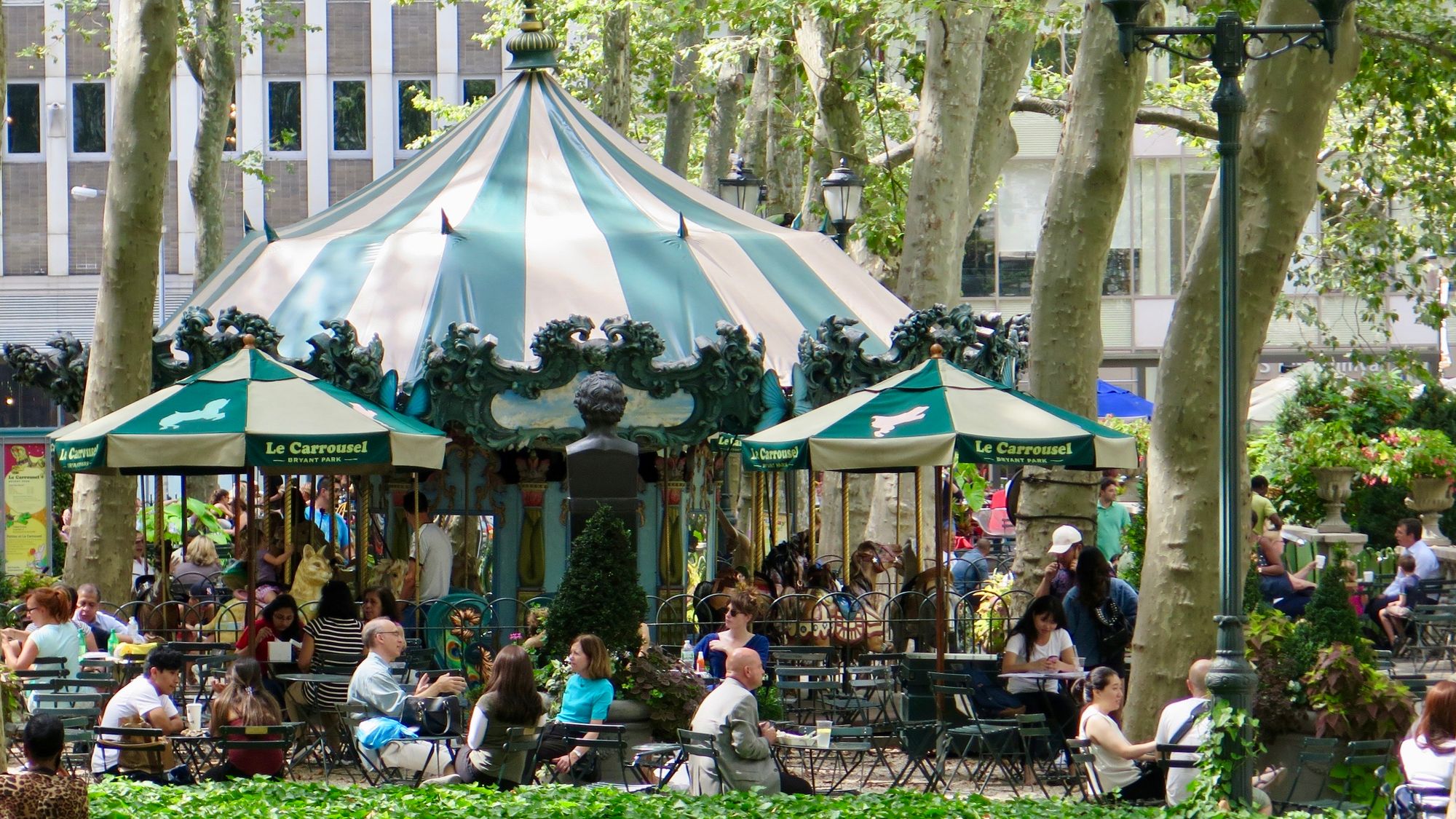
On any given day, a visit to Bryant Park means coming across lively activities such as piano performances, board game and art supply carts, tournaments, Tai Chi, and story times for kids. All this offers ongoing excitement in combination with the goings-on in and around other mainstays like food carts and the Fever Tree Porch Bar, which is equipped with swings and lounge furniture, a full bar and restaurant, and fire pits.
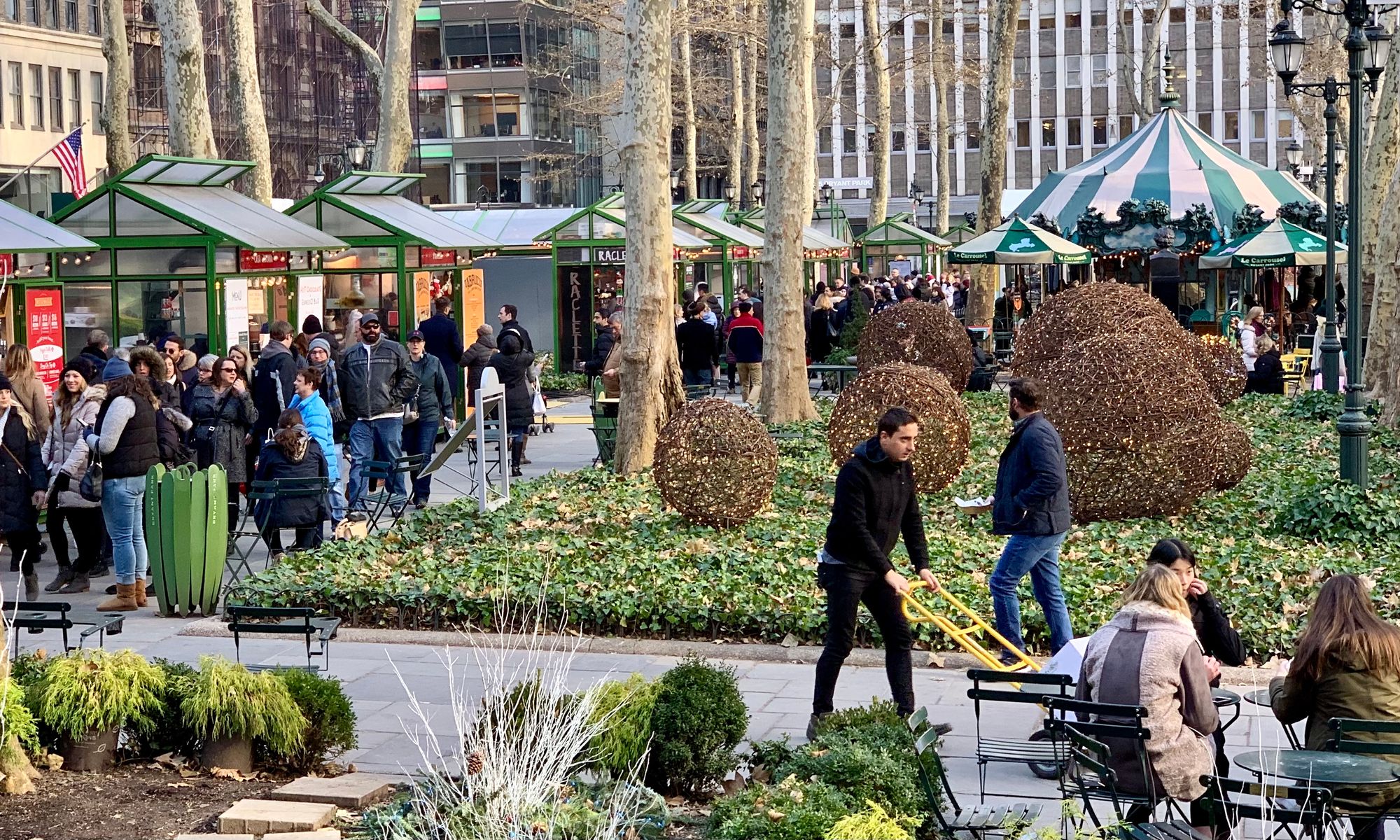
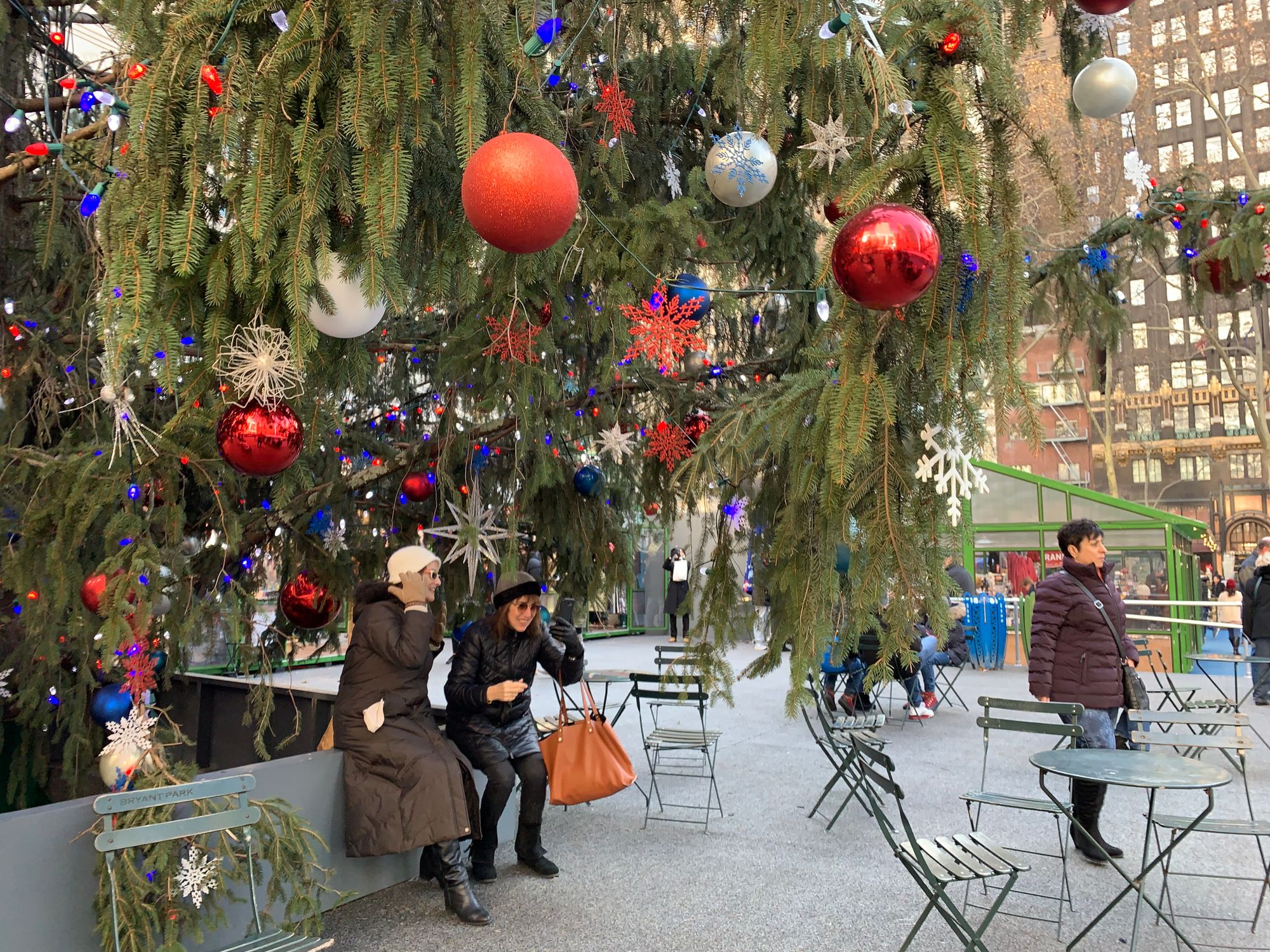
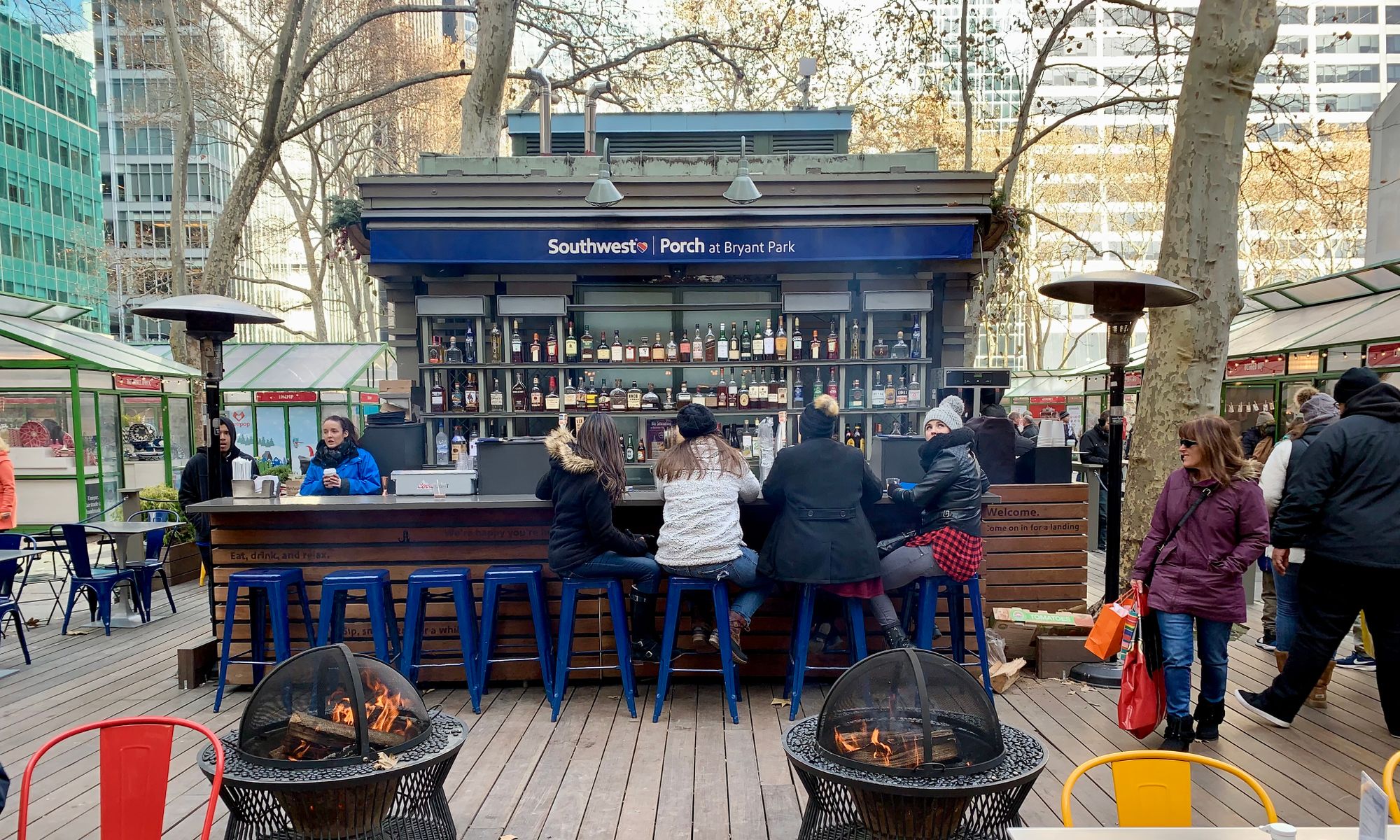
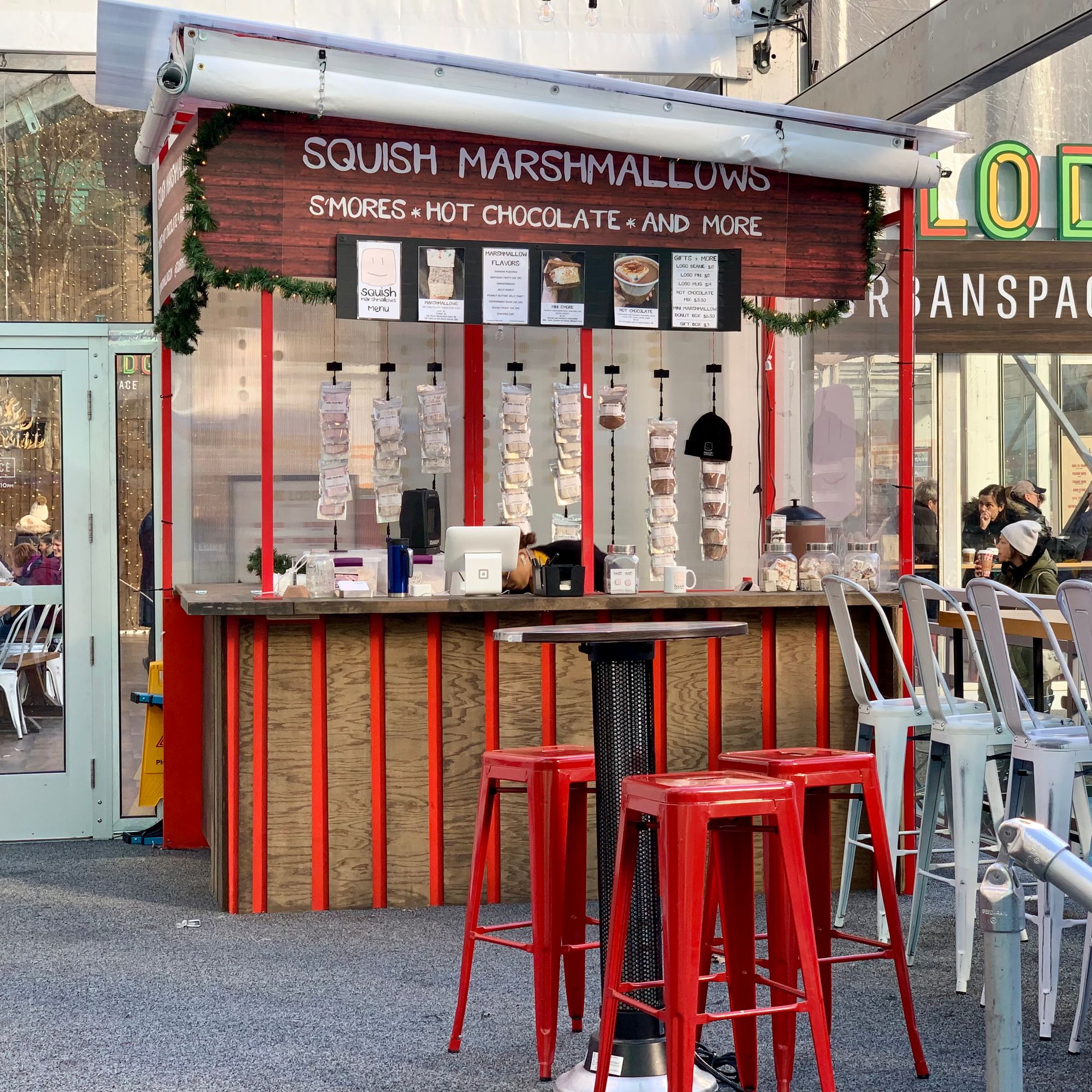
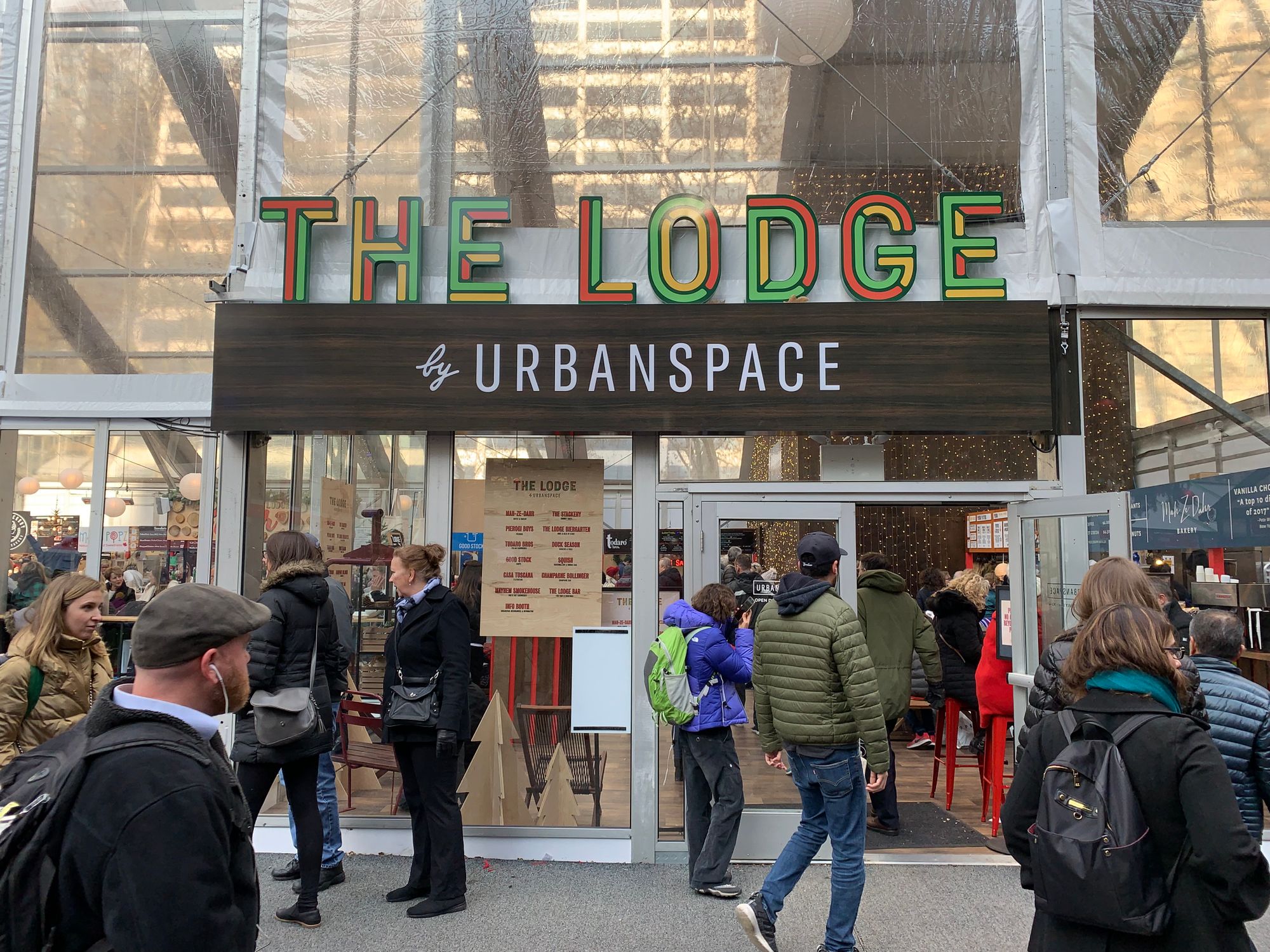
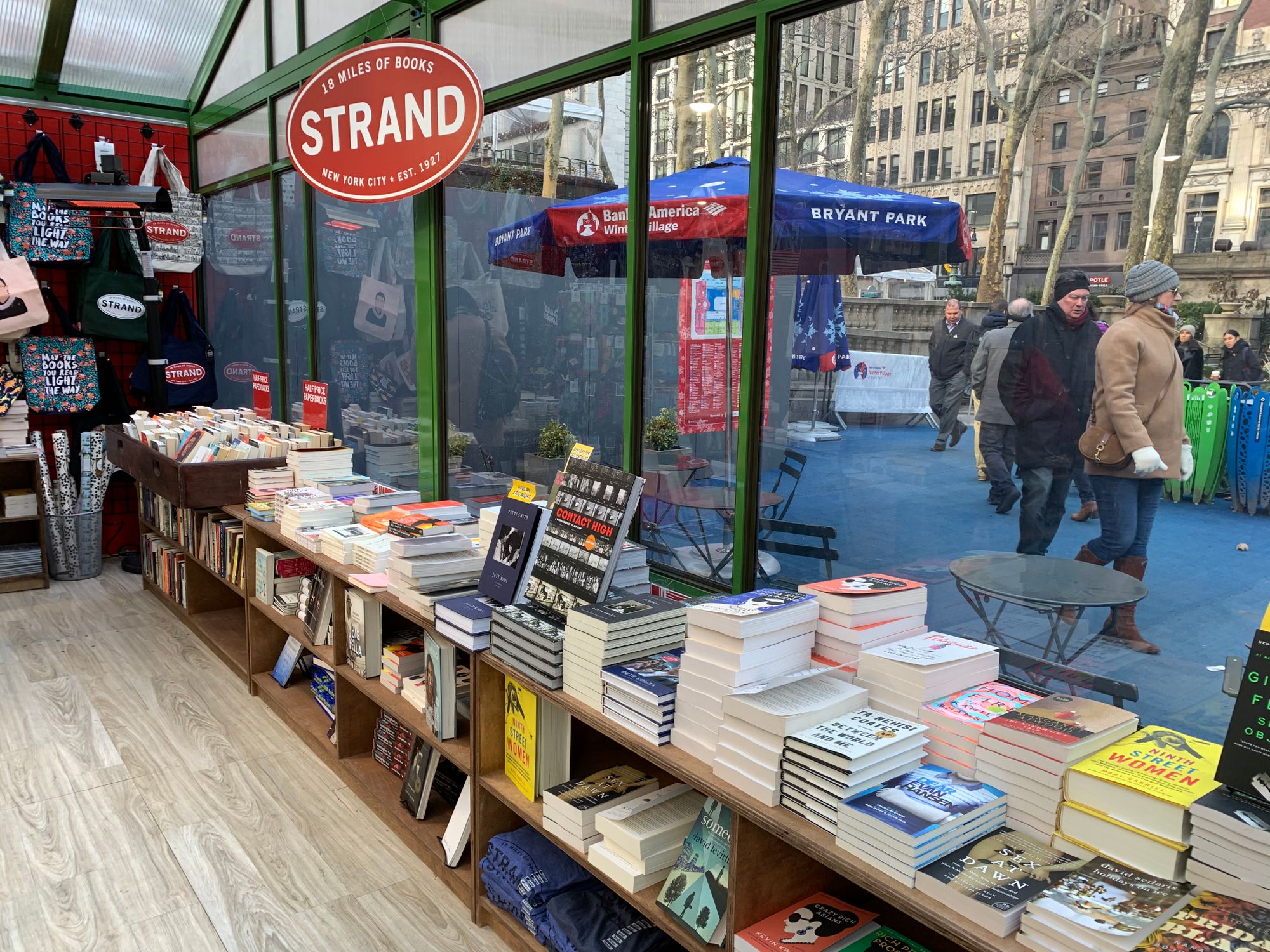
Takeaways
1) It isn't design that makes a square great – it's programming. The design of Bryant park has remained pretty much the same for decades. What transformed it from a place people avoid to a place people flock to are all the programs and activities that it offers in a compact space.
2) Variety is key. If you want to attract all different kinds of people, you need to offer all different kinds of activities. Some people like sports, others like art, and still others prefer reading, relaxing, or playing games. A great place needs to offer choices that satisfy the likes and interests of a broad variety of people.
3) Visibility and entrances are very important. One of the main obstacles that held Bryant Park back from its full potential was that the entrances provided low visibility into the park and didn't encourage people to enter. The low visibility also hid shady activity happening within the park, making it a safe haven for crime. Increasing visibility from the street and decorating the entrance with pleasant amenities like food kiosks and seating was instrumental to increasing visitation and security.
Perth Cultural Centre, Australia
When we arrived in Perth, the collection of cultural institutions, including a State Library, museums and historical facilities that were barely used. Each entity worked independently, and because of its stark architecture, it repelled rather than attracted visitors. When we finished our intervention, the relationship between the buildings and the square was entirely different. They talked about it being the "Pavilion" of the Centre.
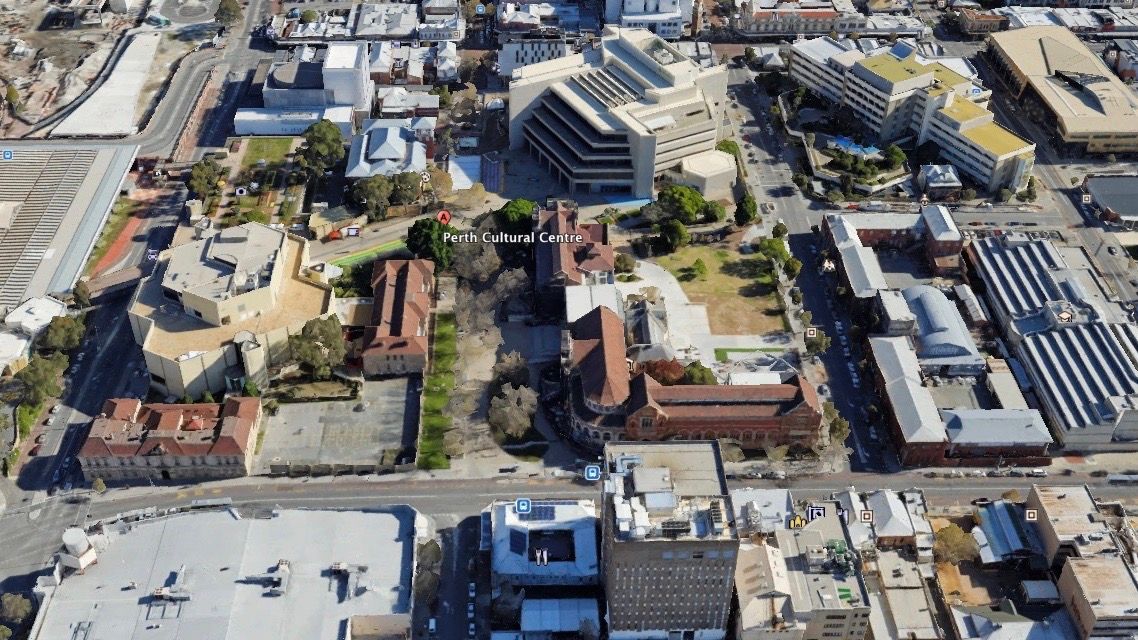
The first steps were simple, as they often are. They involved LQC interventions like adding structures for shade, seating for comfort, a big screen for movies and art, and free WiFi. As interest and excitement about the space grew out of these initial moves, community support and involvement increased. This led to bigger and more permanent changes such as a play space being built, an abandoned water feature being transformed into native wetland, and rooftop parking becoming a community garden.
And perhaps most importantly, programs such as movie screenings and concerts were launched. The Metropolitan Redevelopment Authority encouraged the surrounding institutions to "turn inside out" and bring their programs and activities outdoors. This led to various engaging exhibitions year-round. The state librarian even moved most of her library functions to the mezzanine level and made the ground floor the "main indoor square" in the Centre.
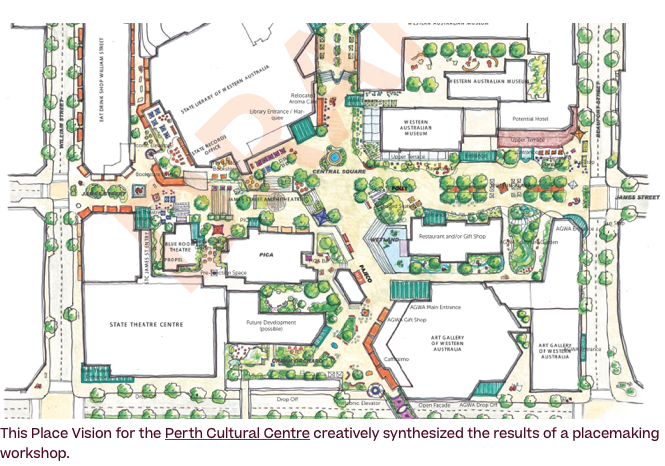
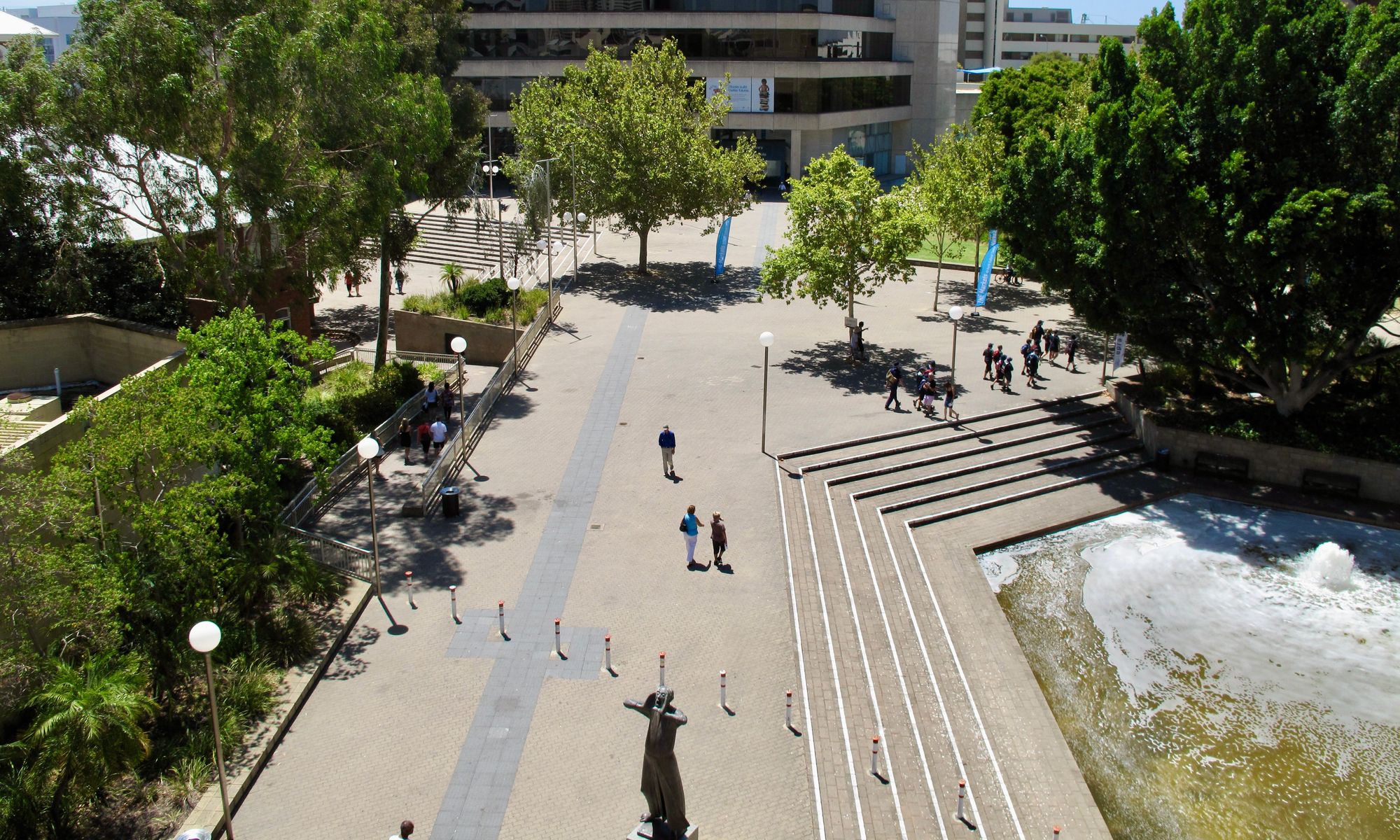
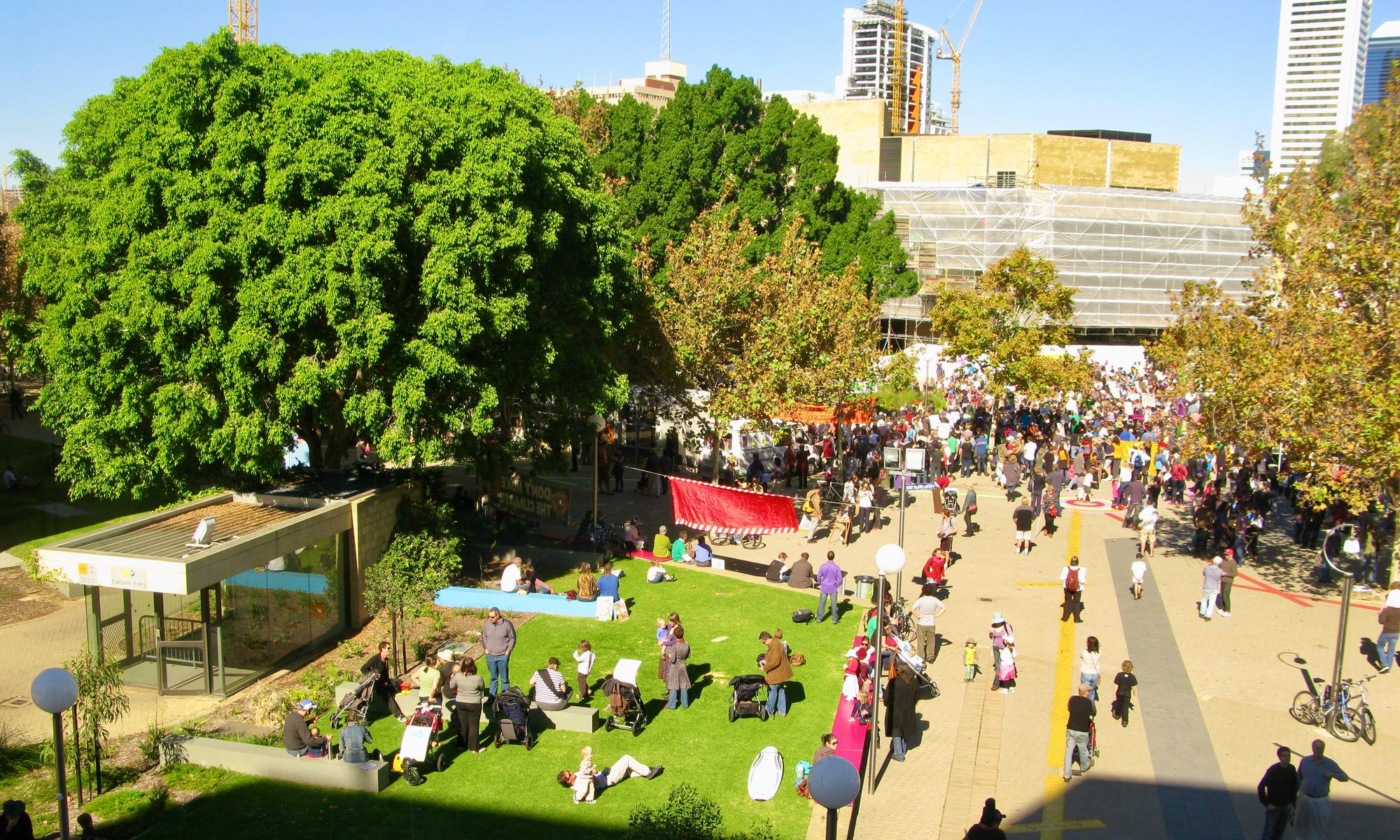
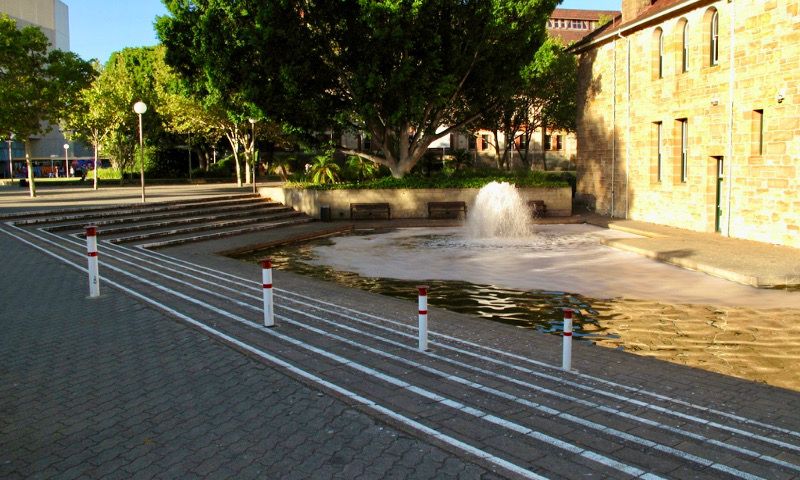
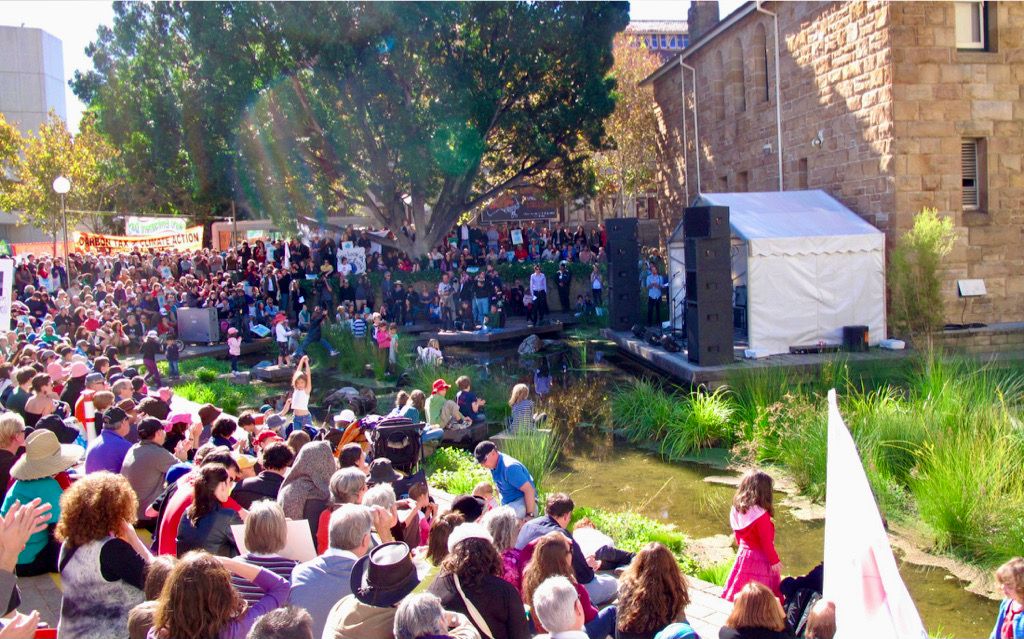
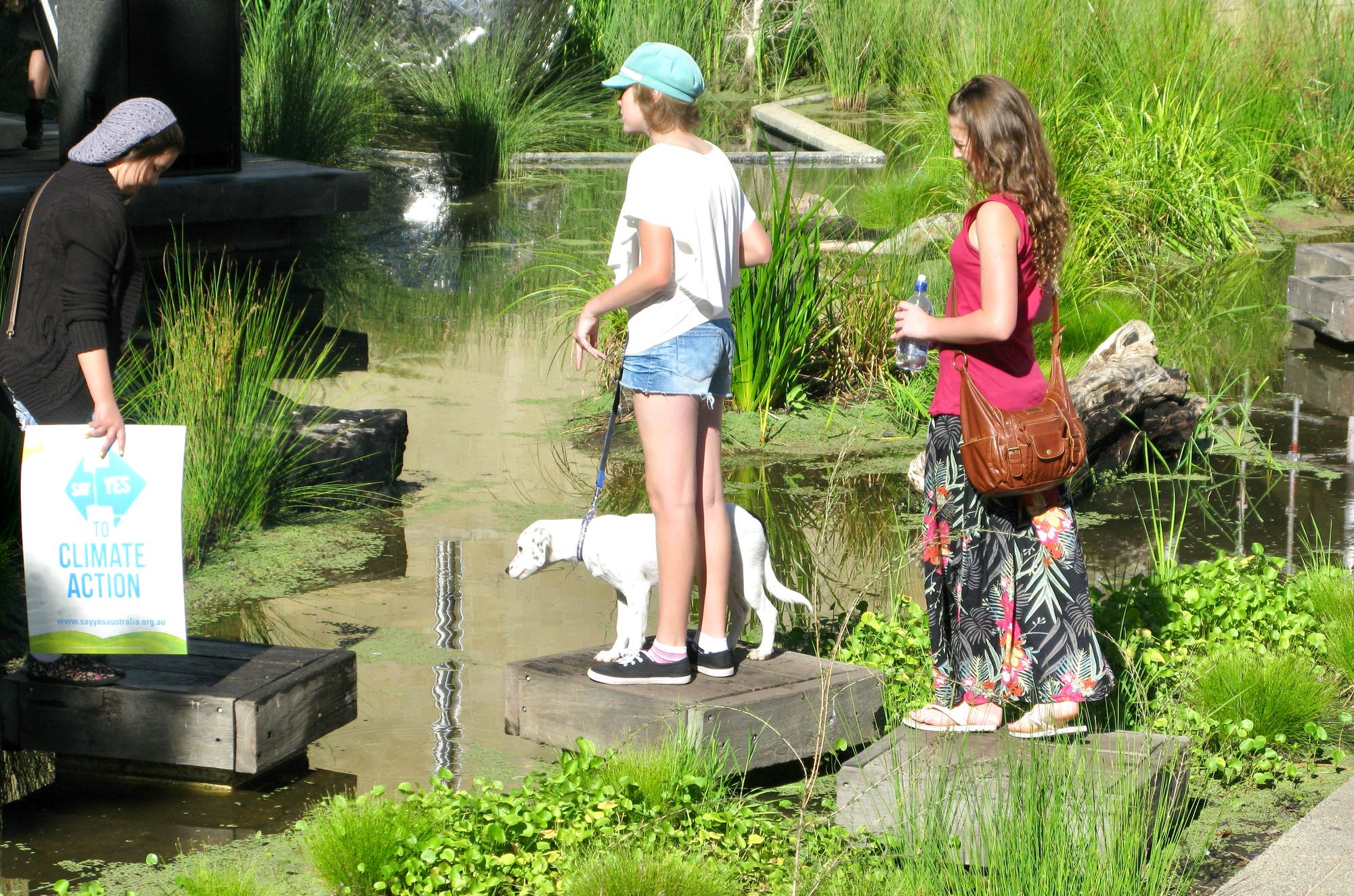
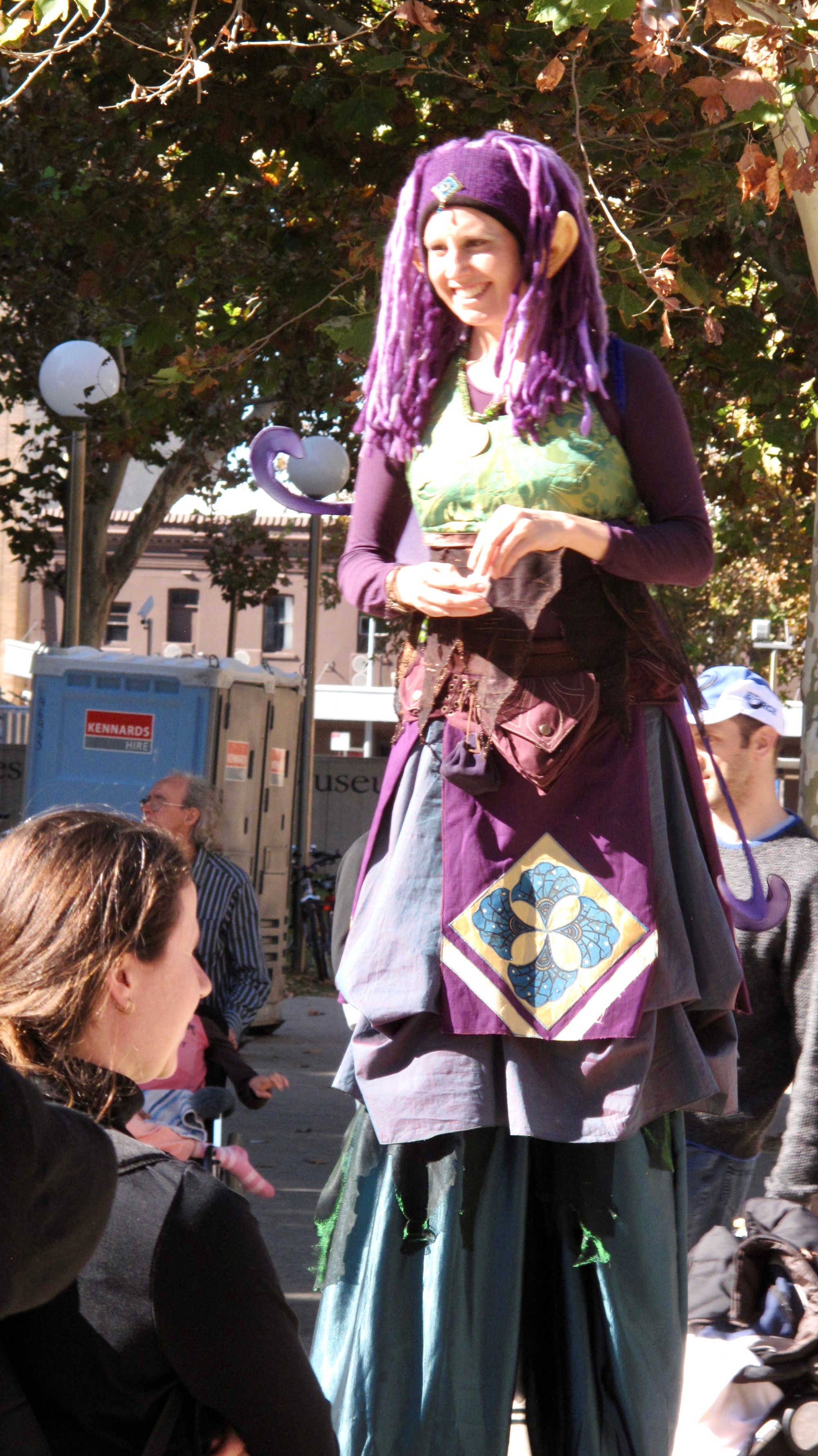
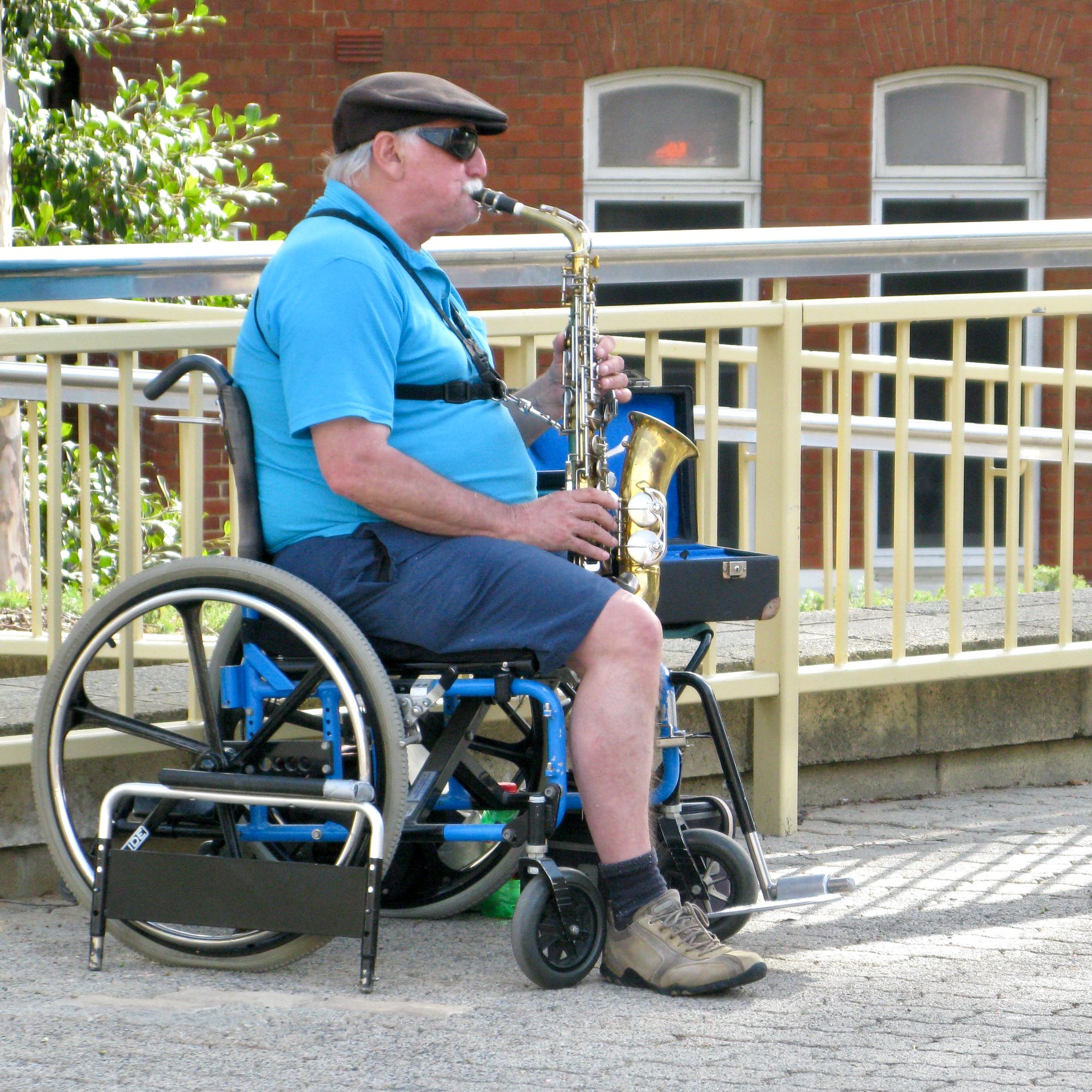
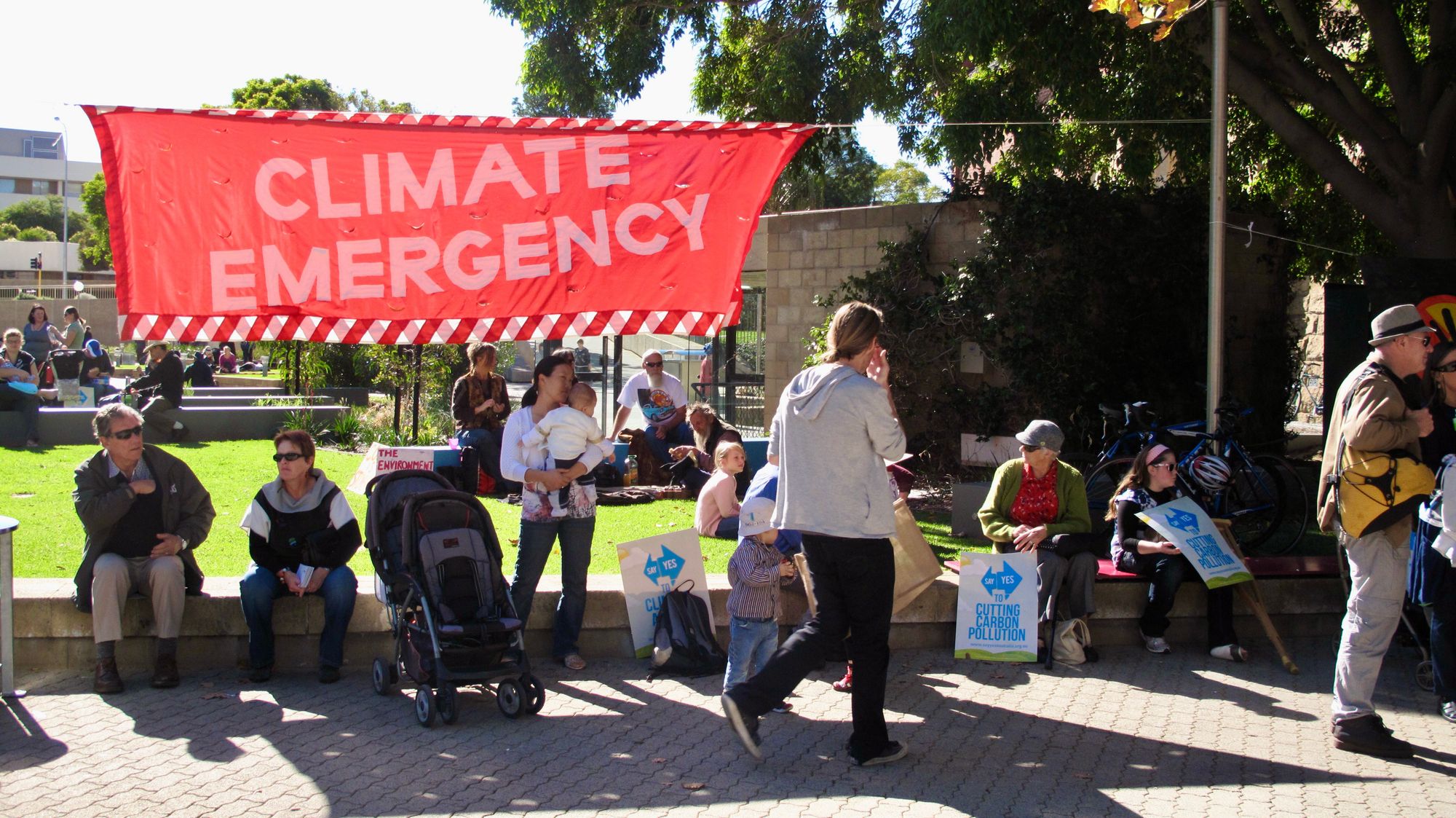
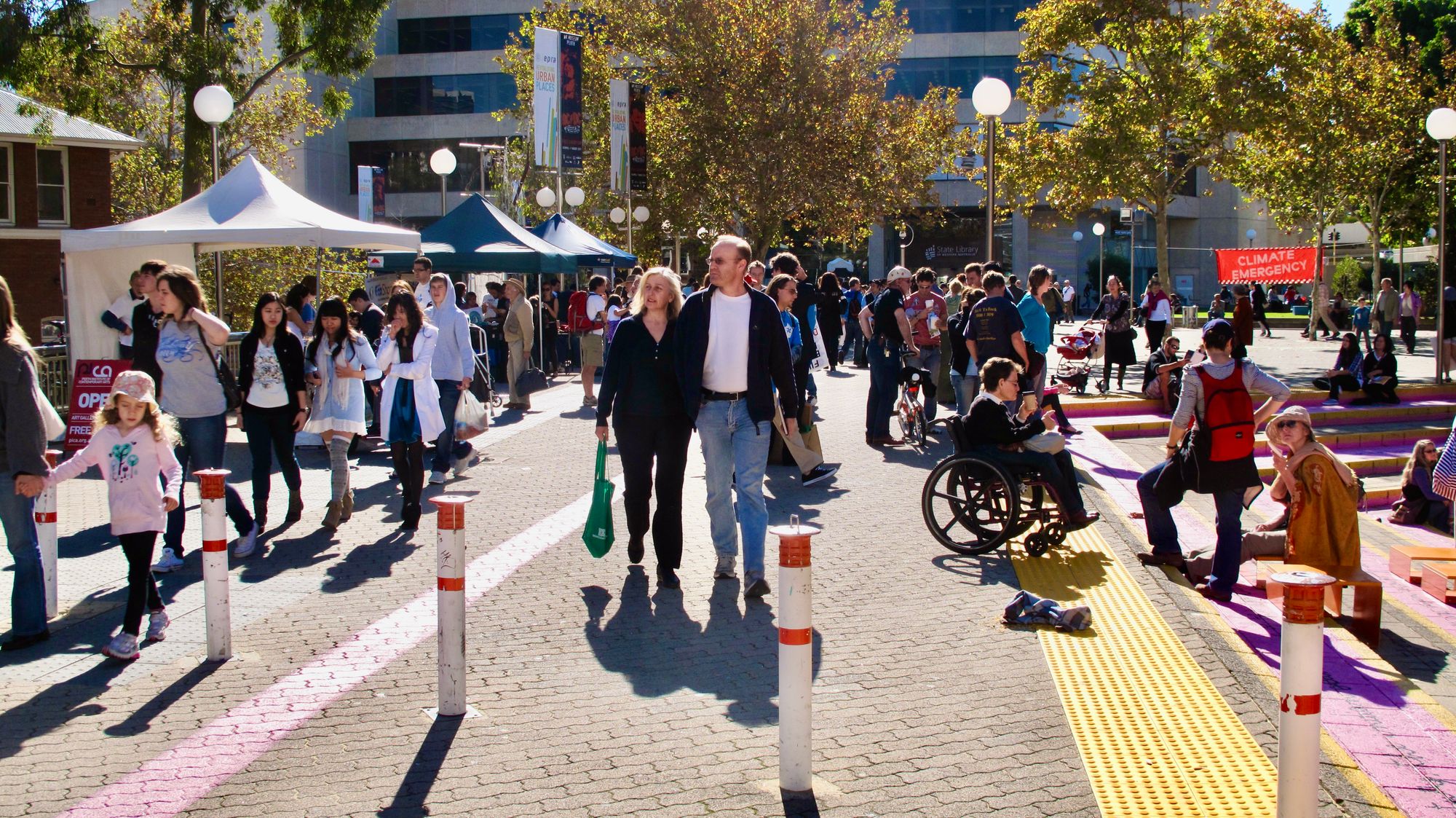
Takeaways
1) LQCs are the way to start – In the beginning of a square's transformation, when you are trying to understand what to change and add to make it great, Lighter Quicker Cheaper interventions provide welcome insights. Try something, observe how people respond to it, and build up on it if it's successful or replace it with something else if it isn't.
2) Water features are great focal points in squares – the transformation of the abandoned water feature in Perth was a big moment for this square. People naturally gather around water features, so adding water to a square through ponds or fountains takes it to the next level.
3) "Inside Out" design is important for squares – When the buildings that surround a square spill out into the square, they create interesting and engaging public spaces. If the buildings "keep to themselves," they isolate the public realm and everyone in it. Whatever lines a square should interact with it. Both the building and the square will benefit.

Markets
Like squares, markets are wonderful ways to connect the community and stimulate the local economy. What's especially great about markets is that they are flexible and can adapt to the needs and capabilities of any public place. They can range from simple and temporary constructions like tents to more complex and long-lasting venues like specially made structures (see Ithaca Market). The design of a market doesn't really matter because its stars are the vendors, artisans, performers and community members.
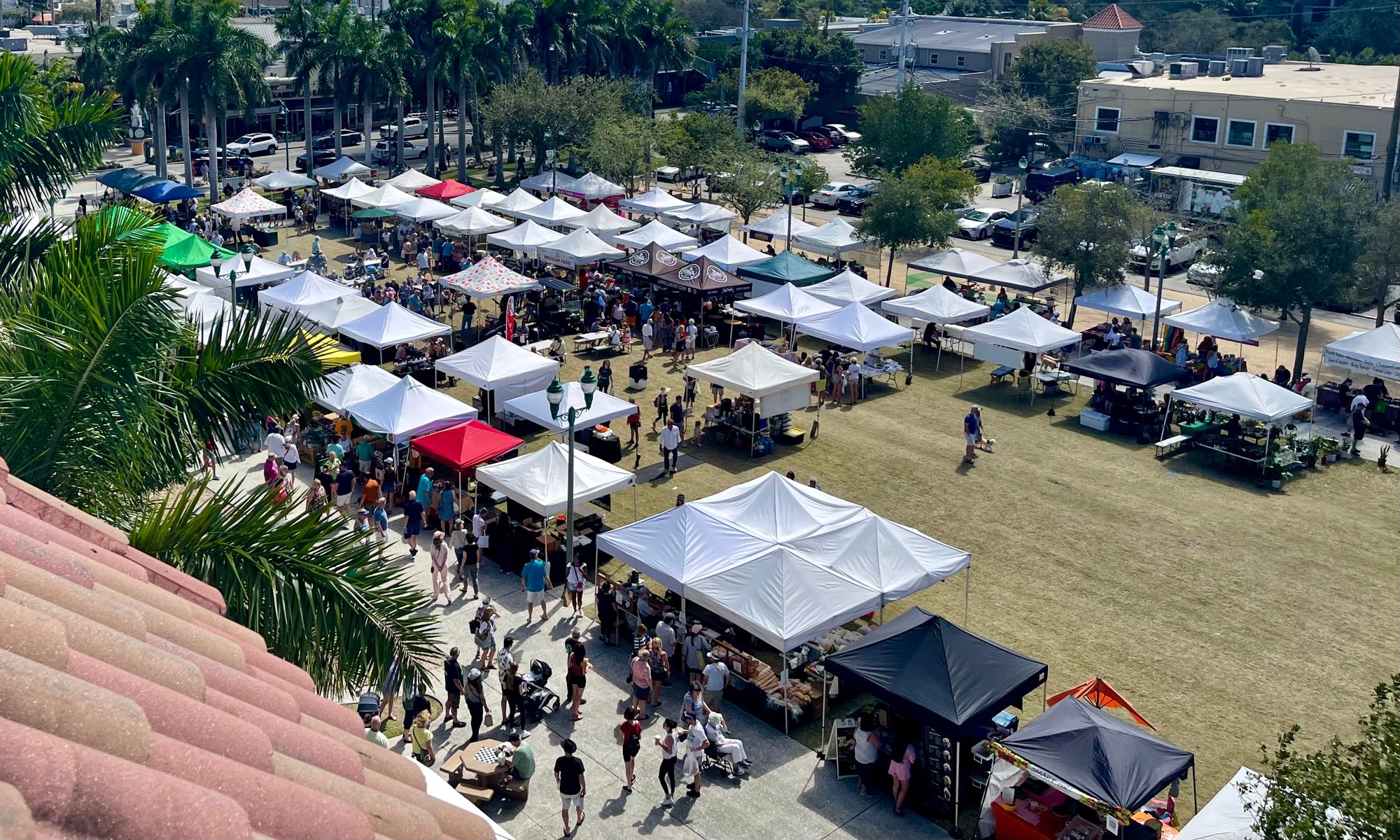
Great Markets Around the World
Granville Island - Vancouver, Canada
Granville Island is Canada’s biggest visitor destination thanks to a stunning array of cultural facilities, markets, play areas, water activities, restaurants and waterfront views. The public market anchors the activity on the island.
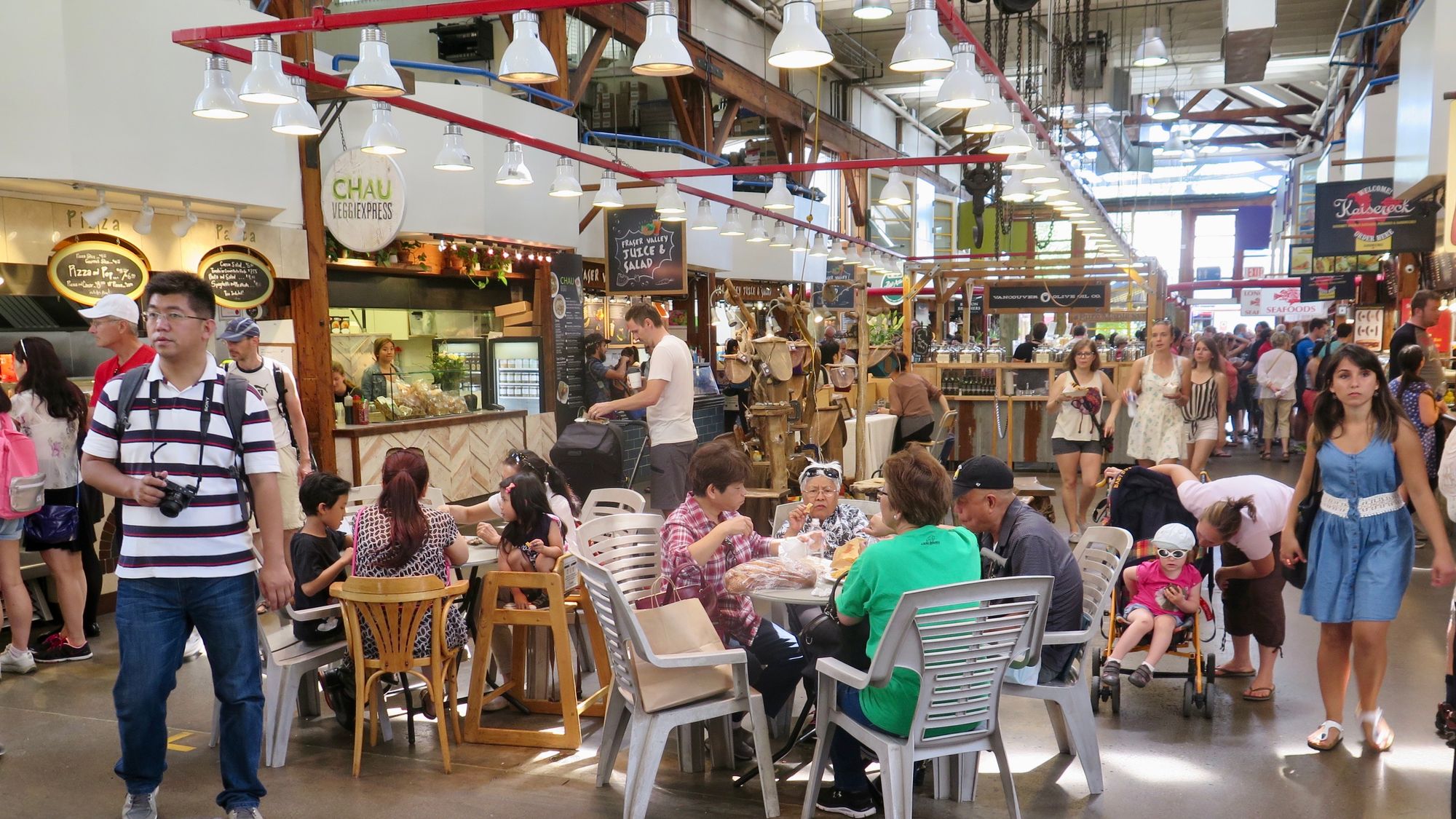
The market interior
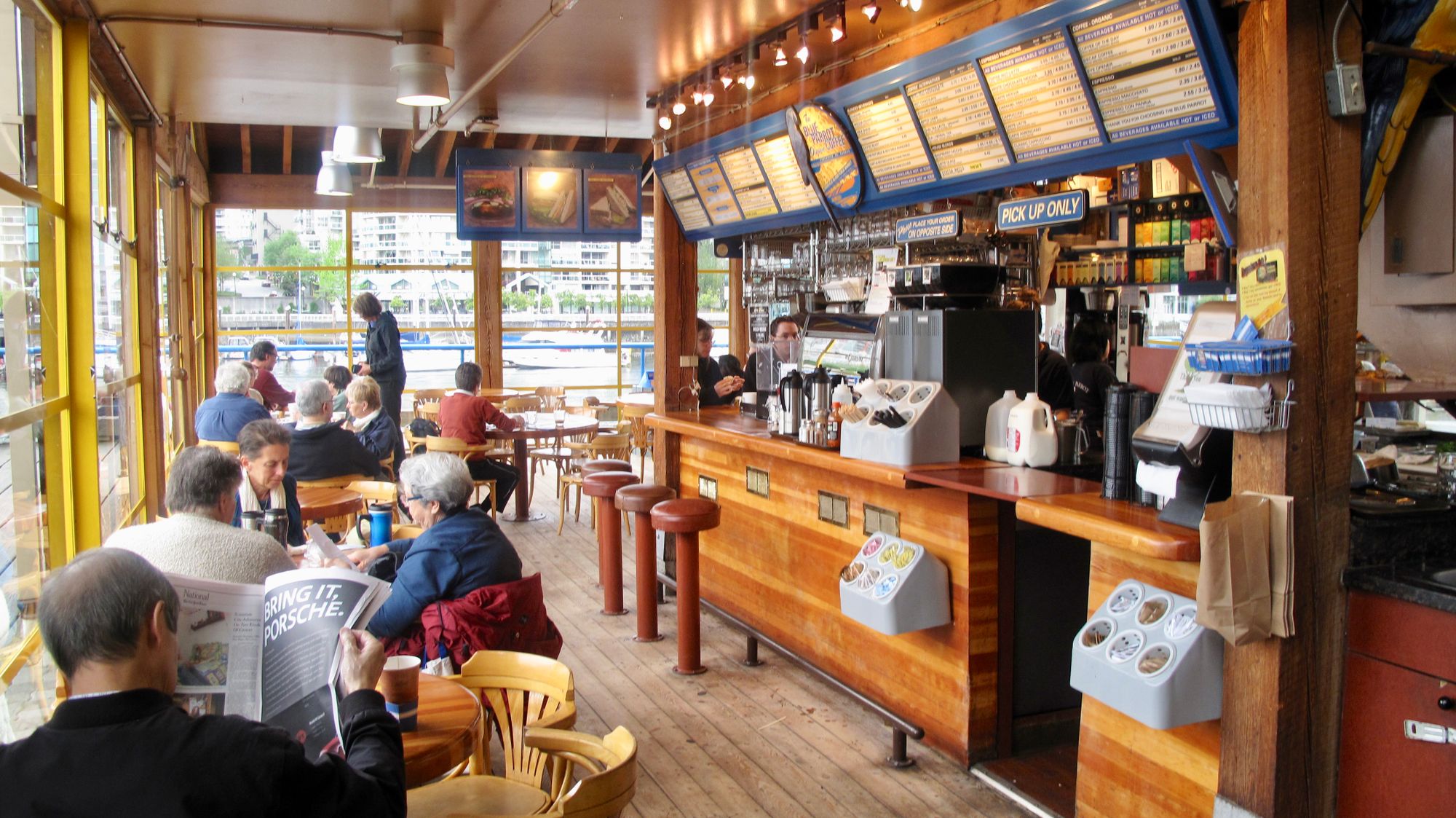
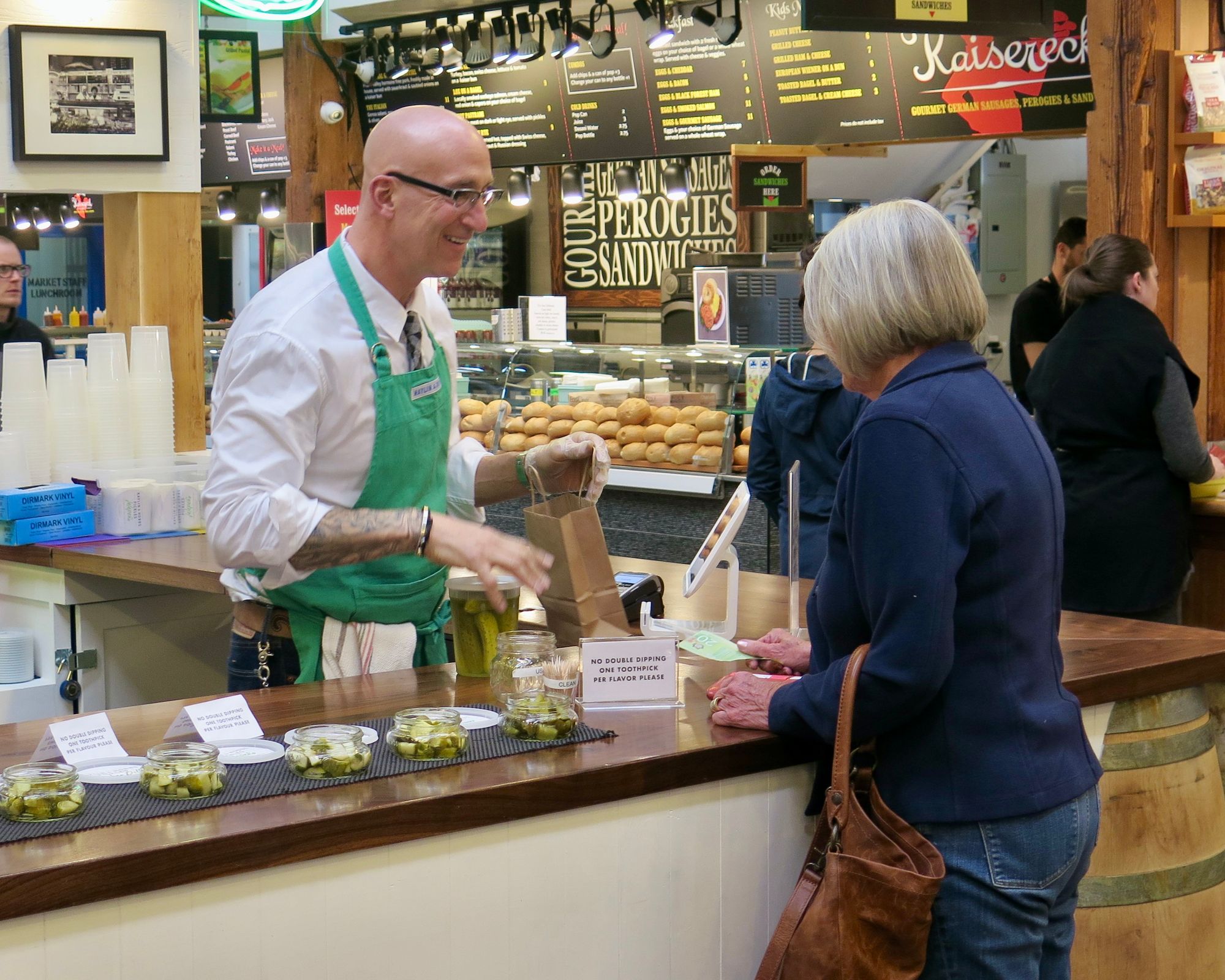
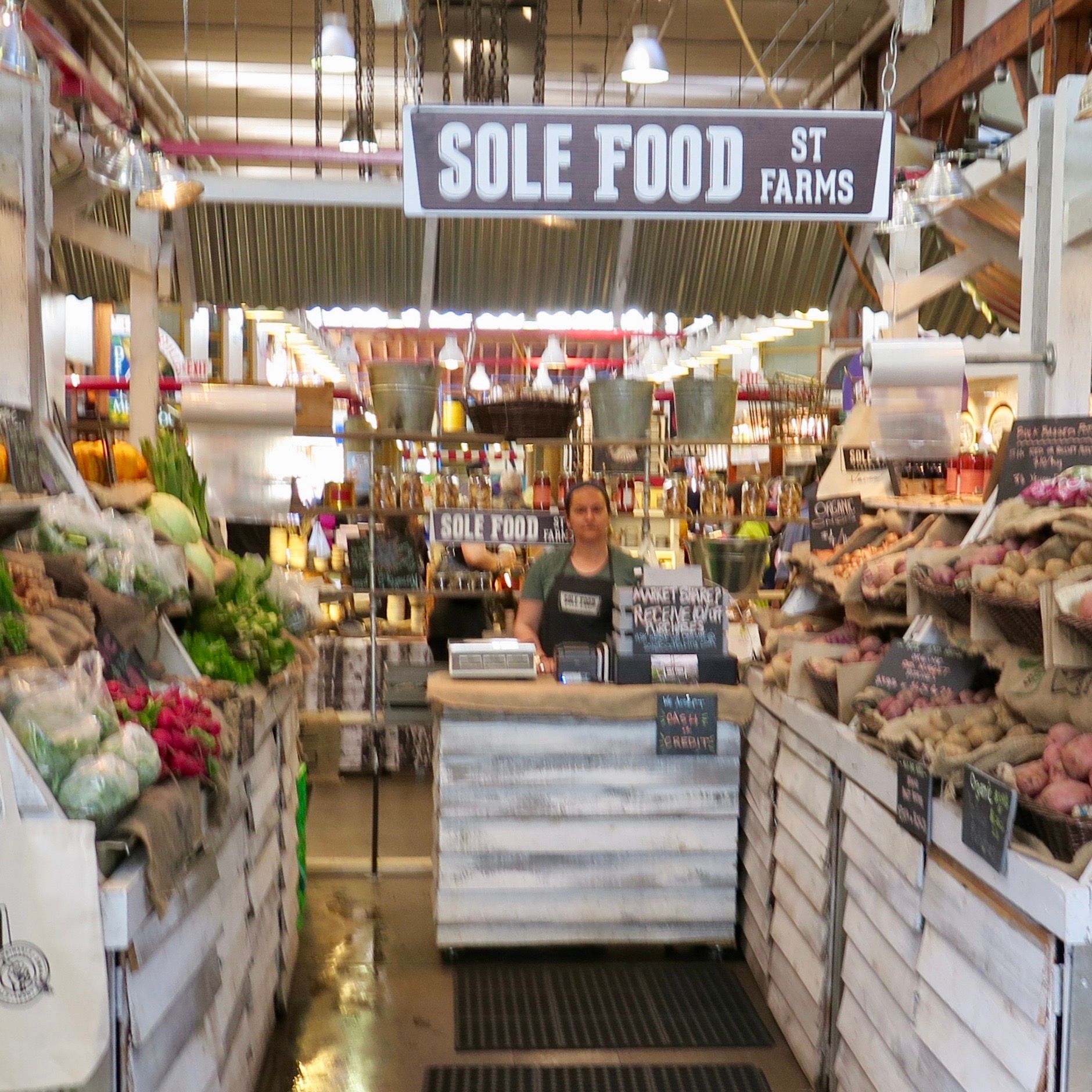
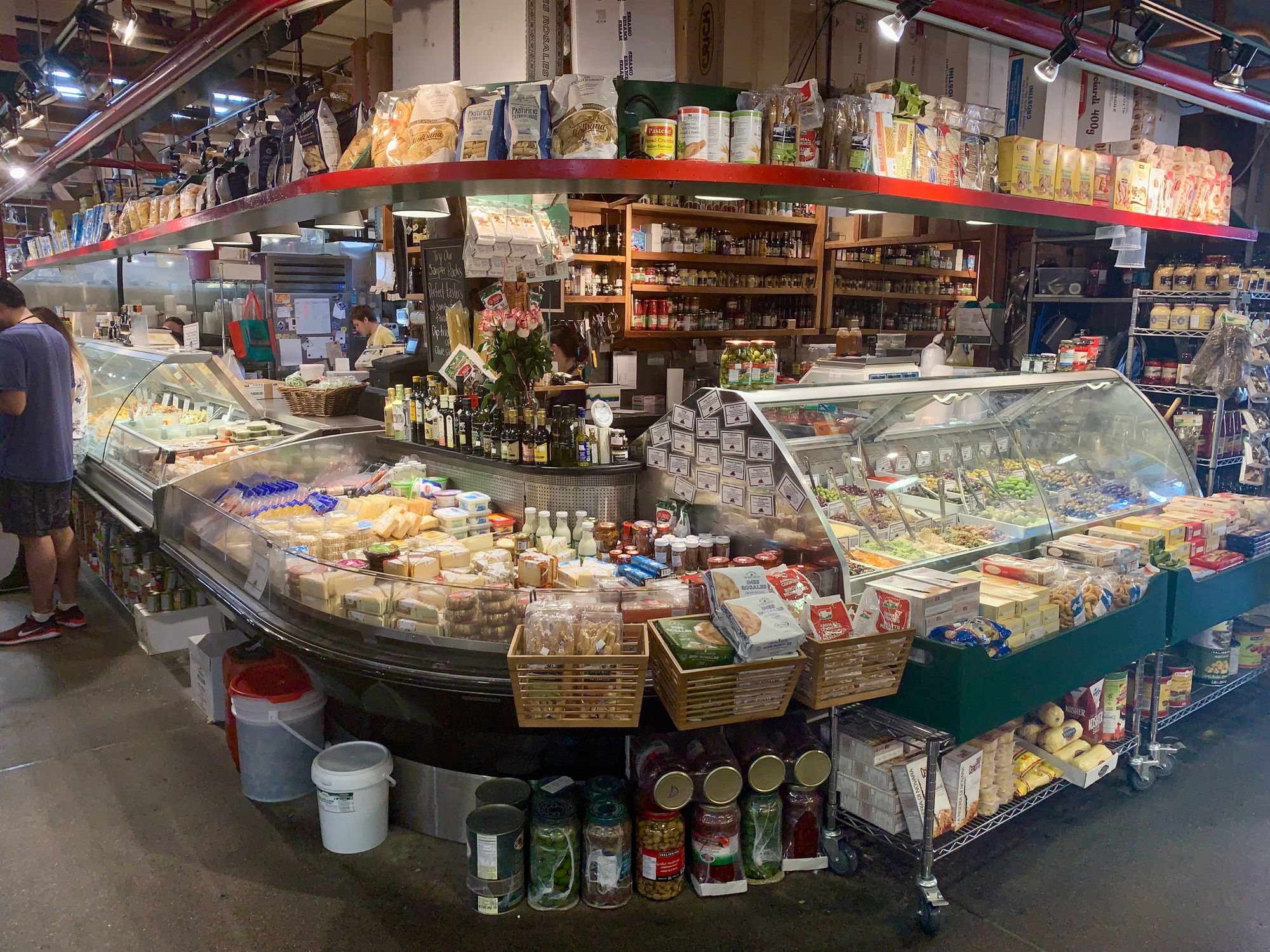
Railspur Artist Alley
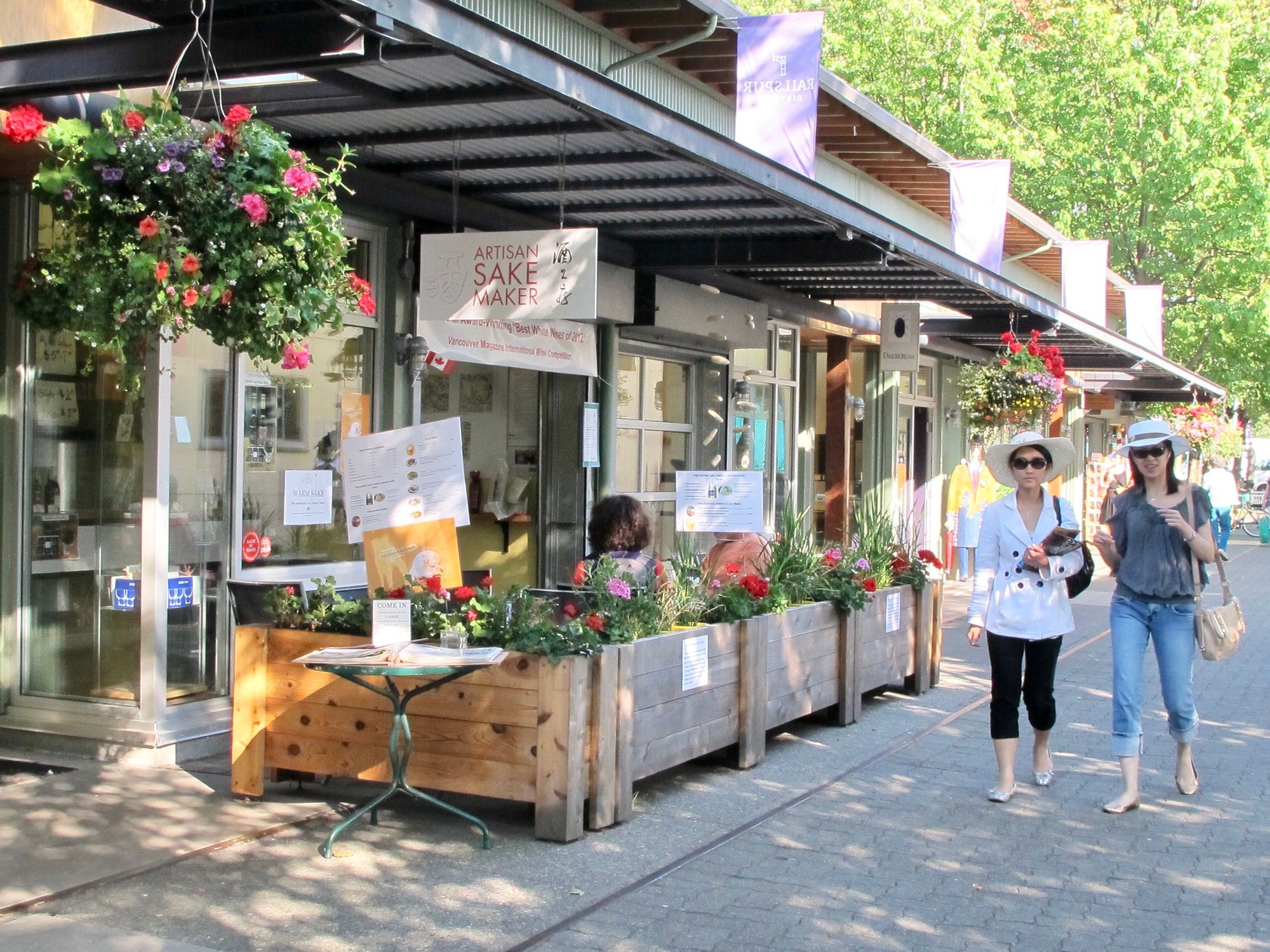
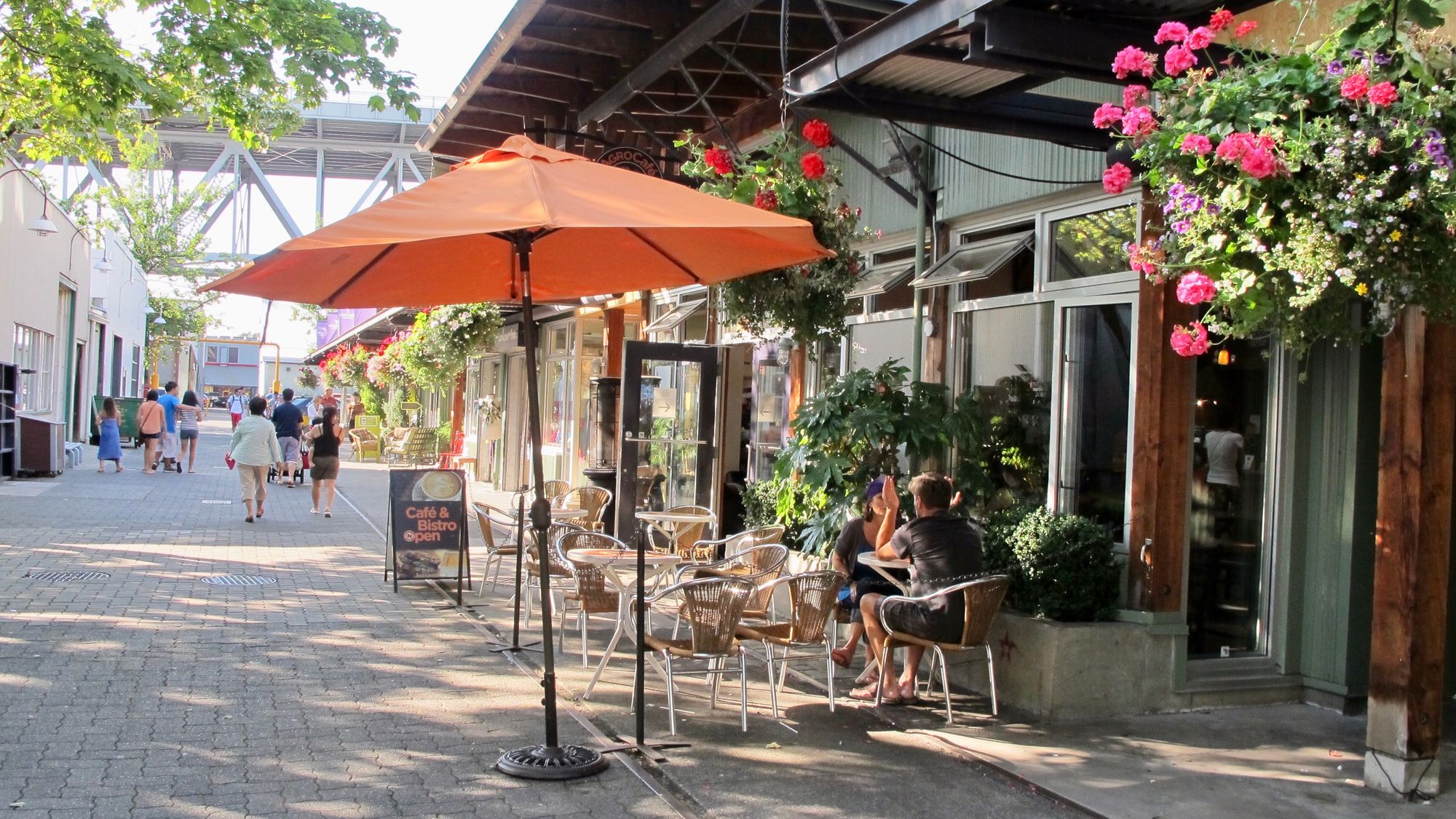
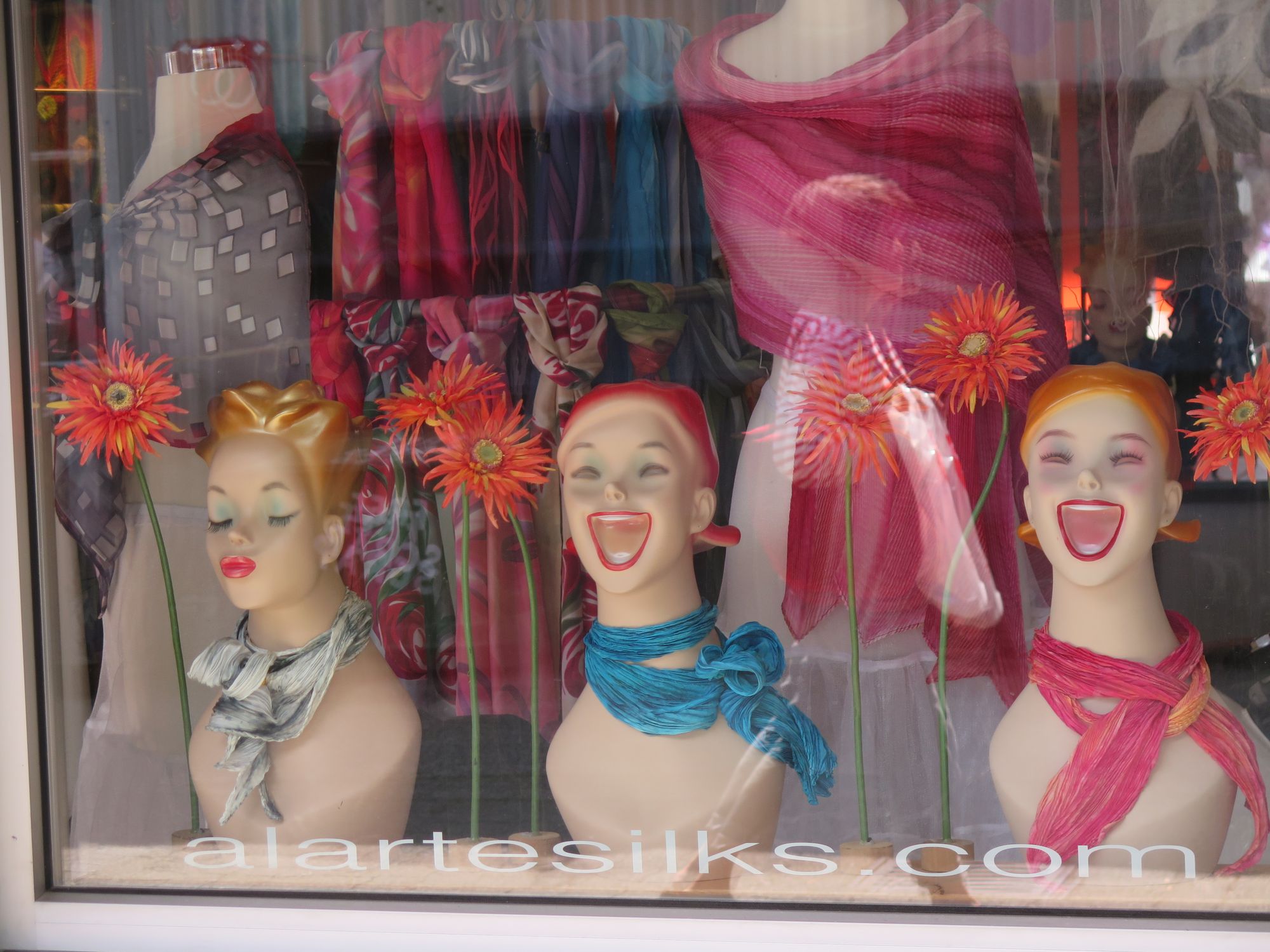
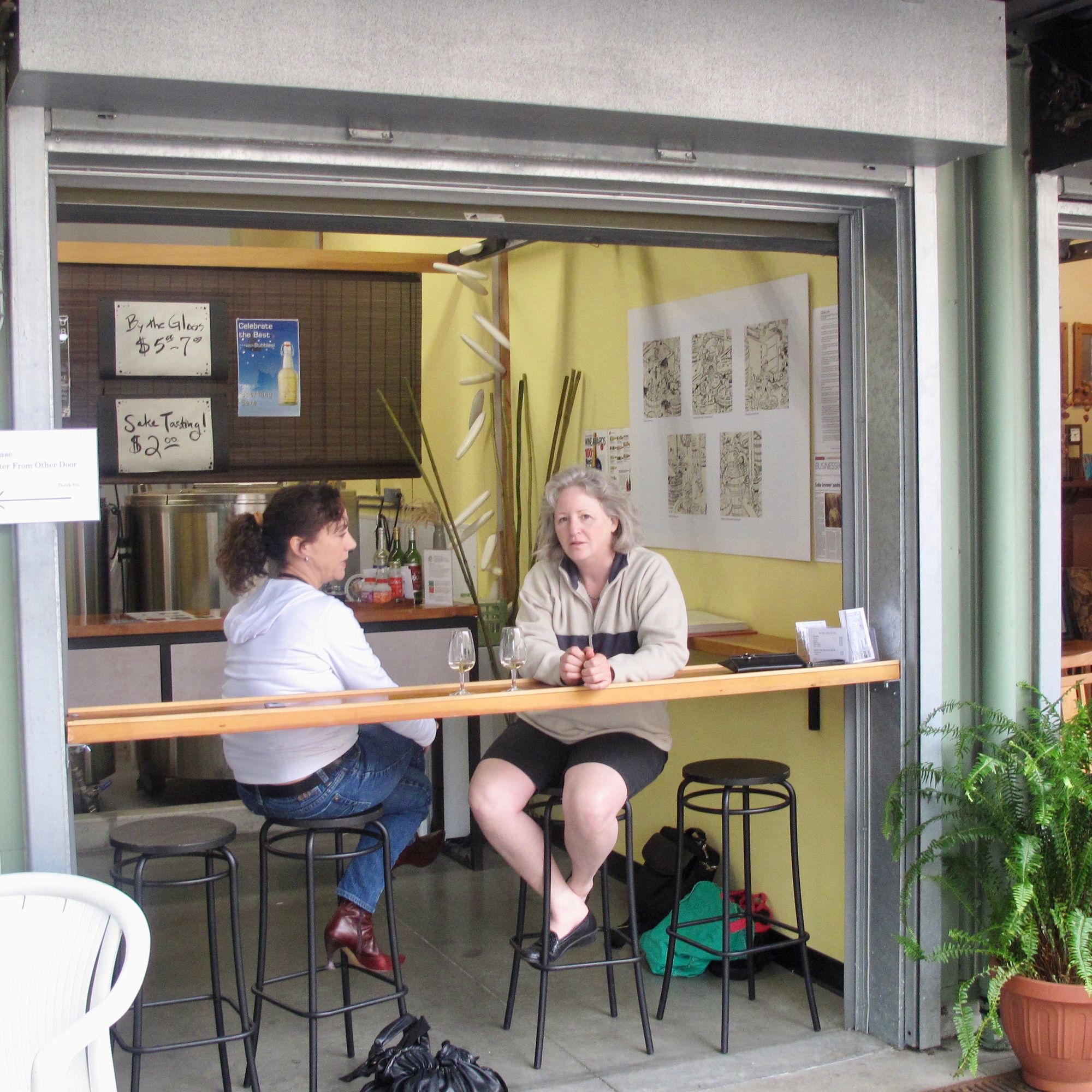
Kids' market
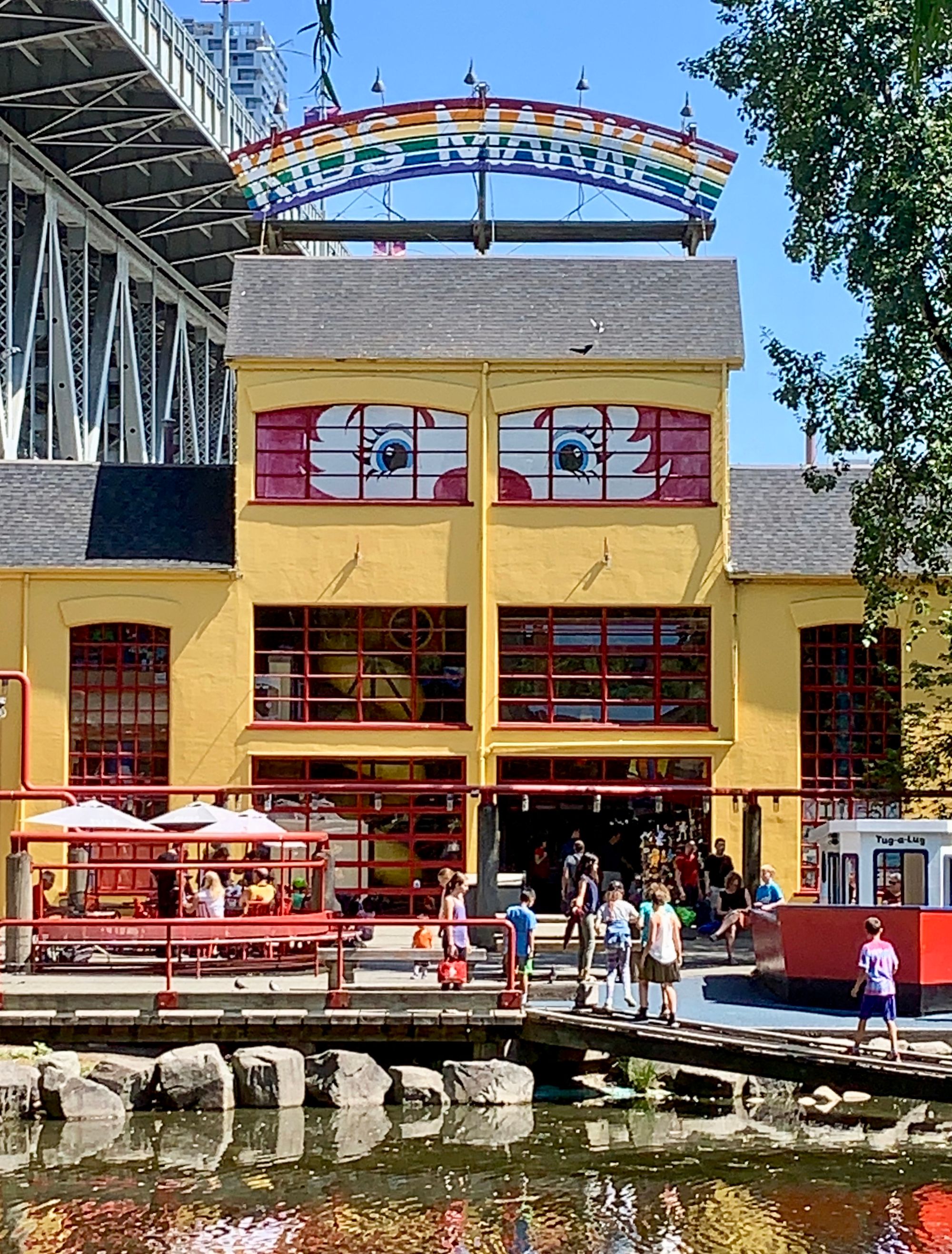
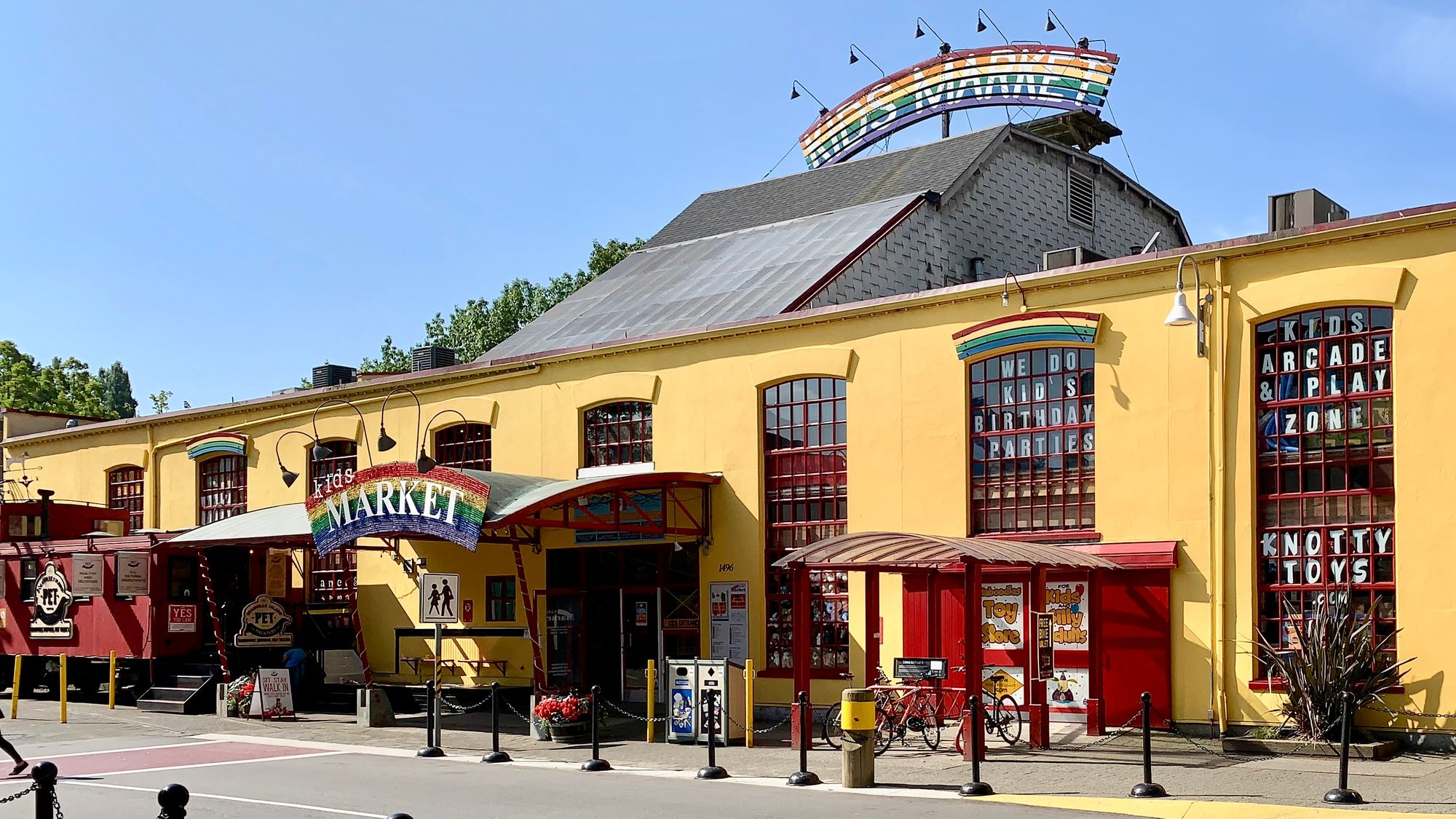
People are the real attraction at the market
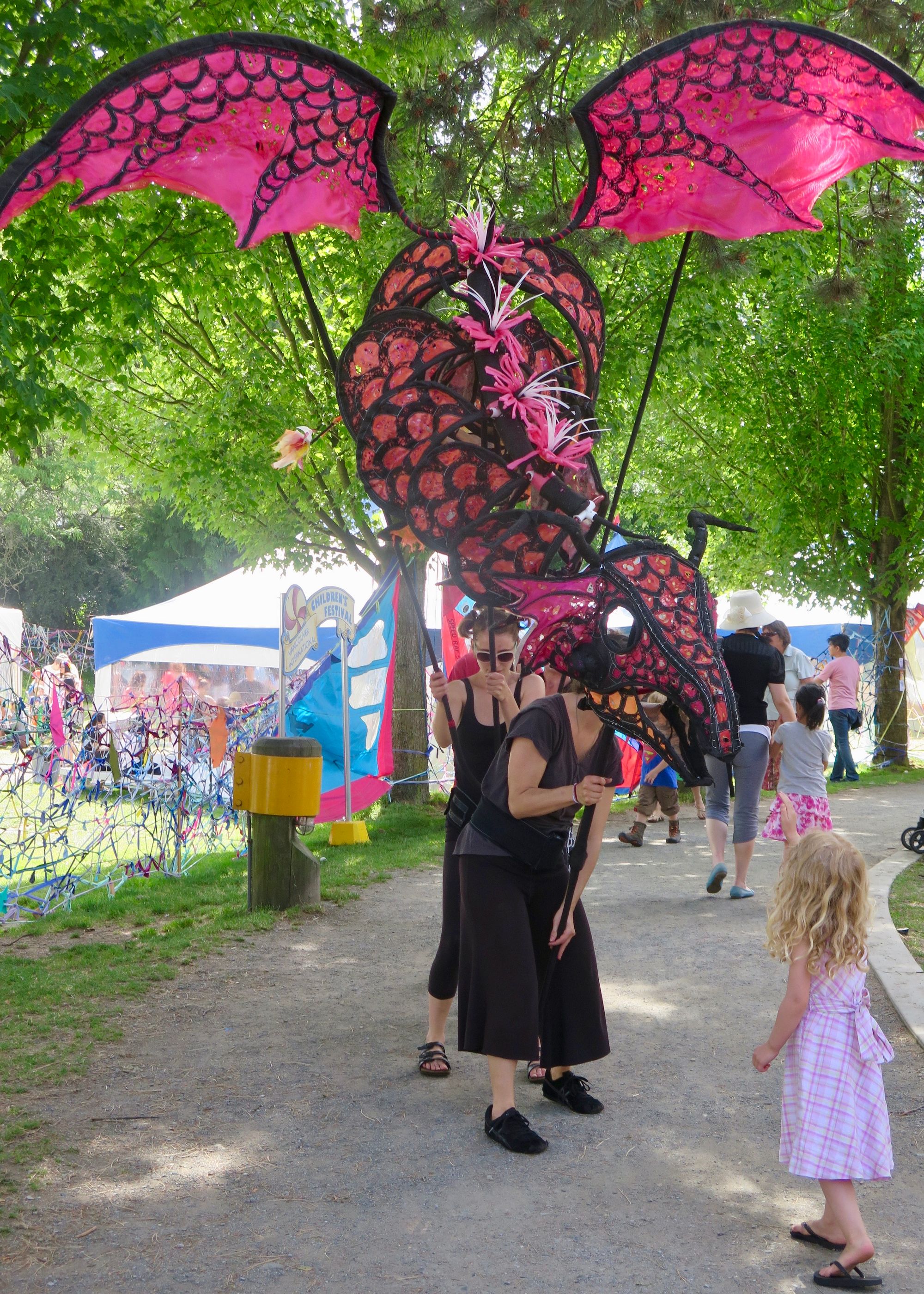
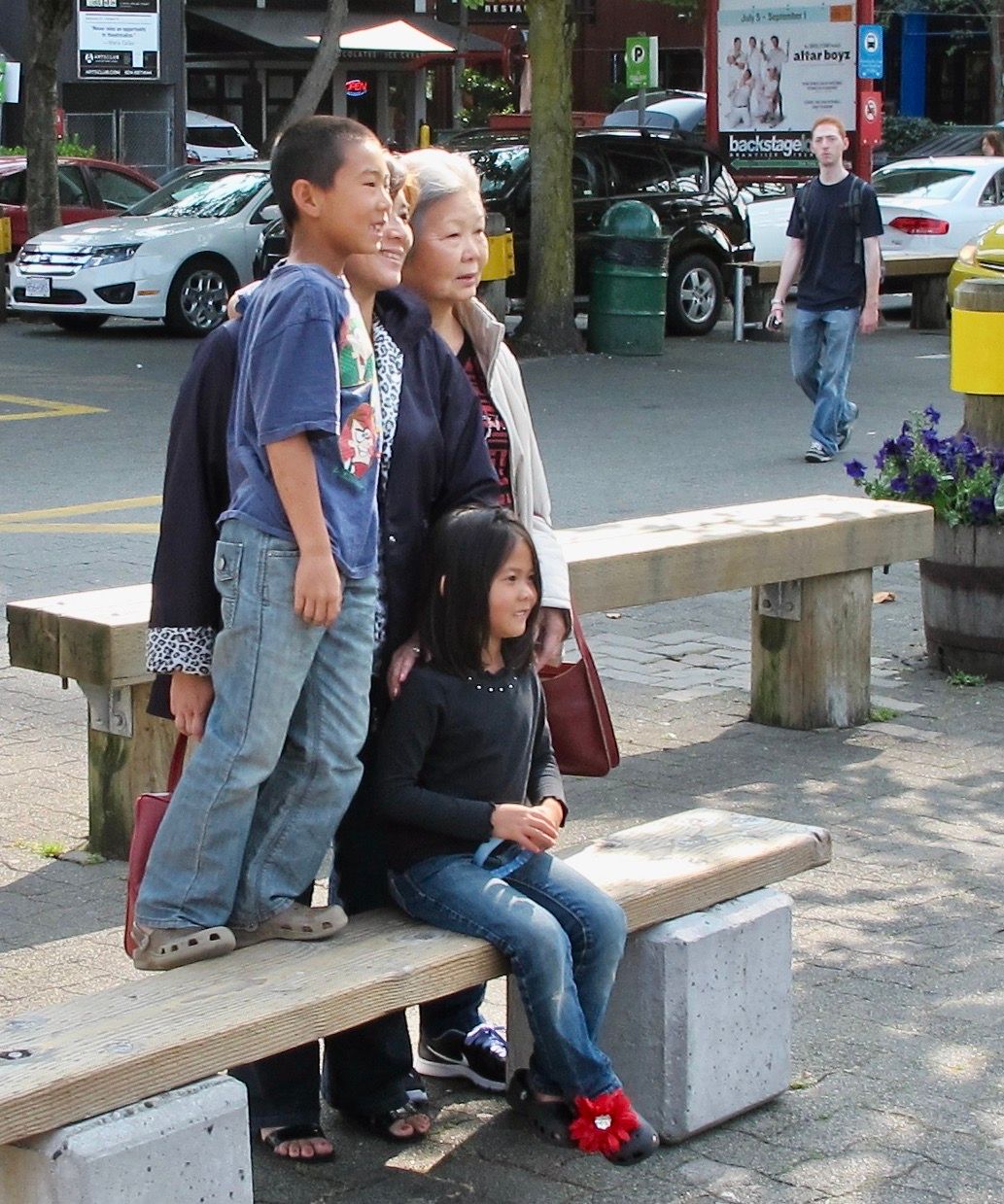
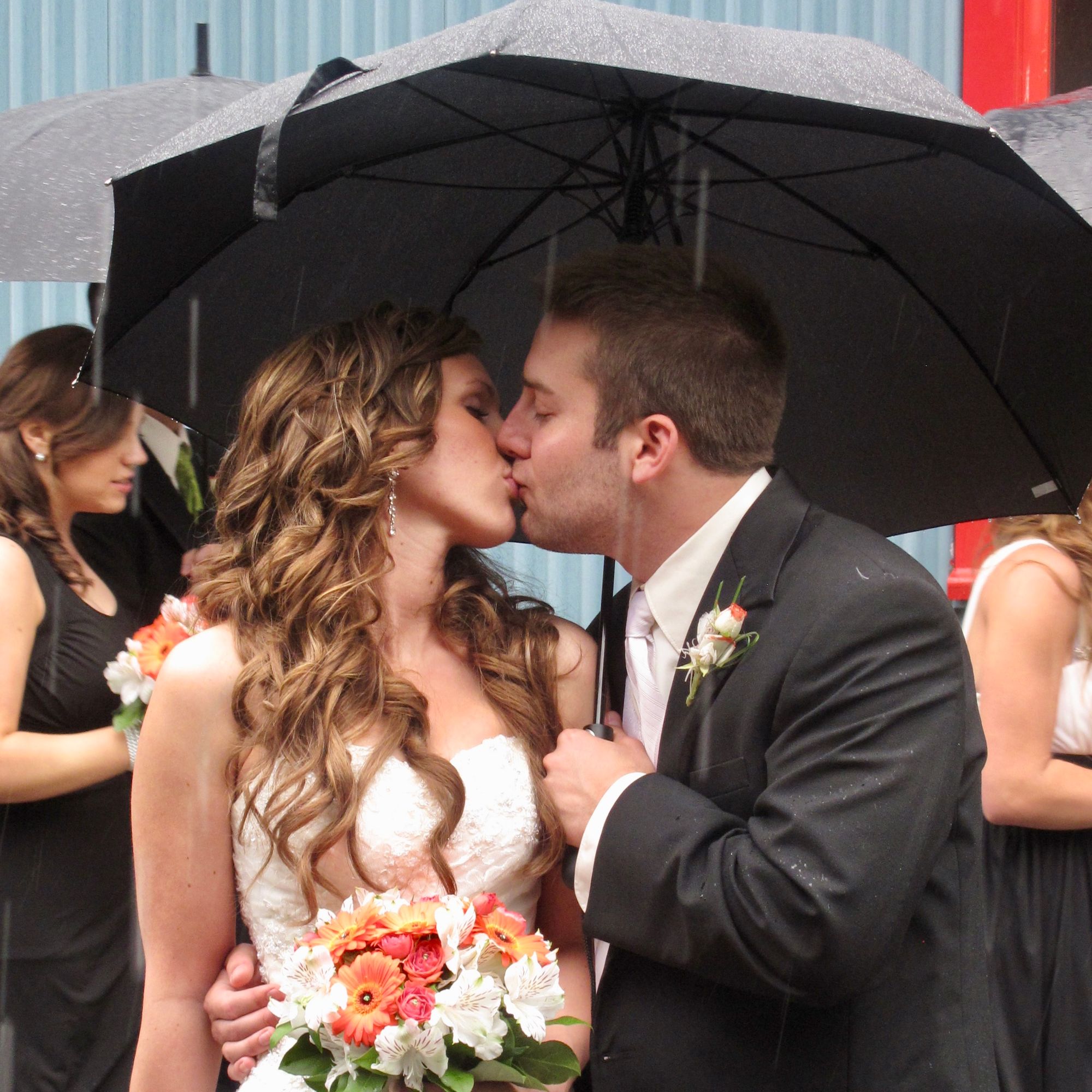
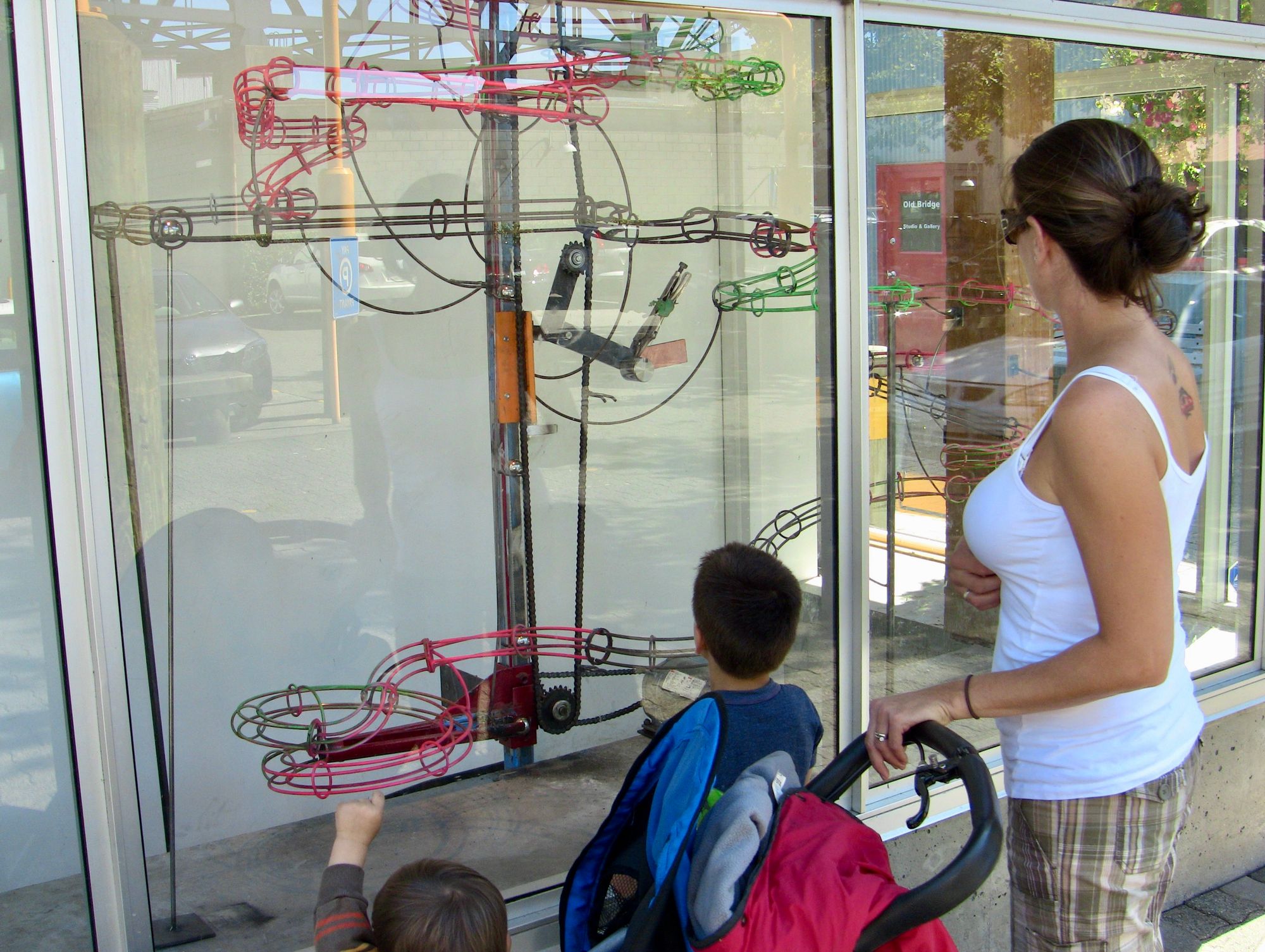
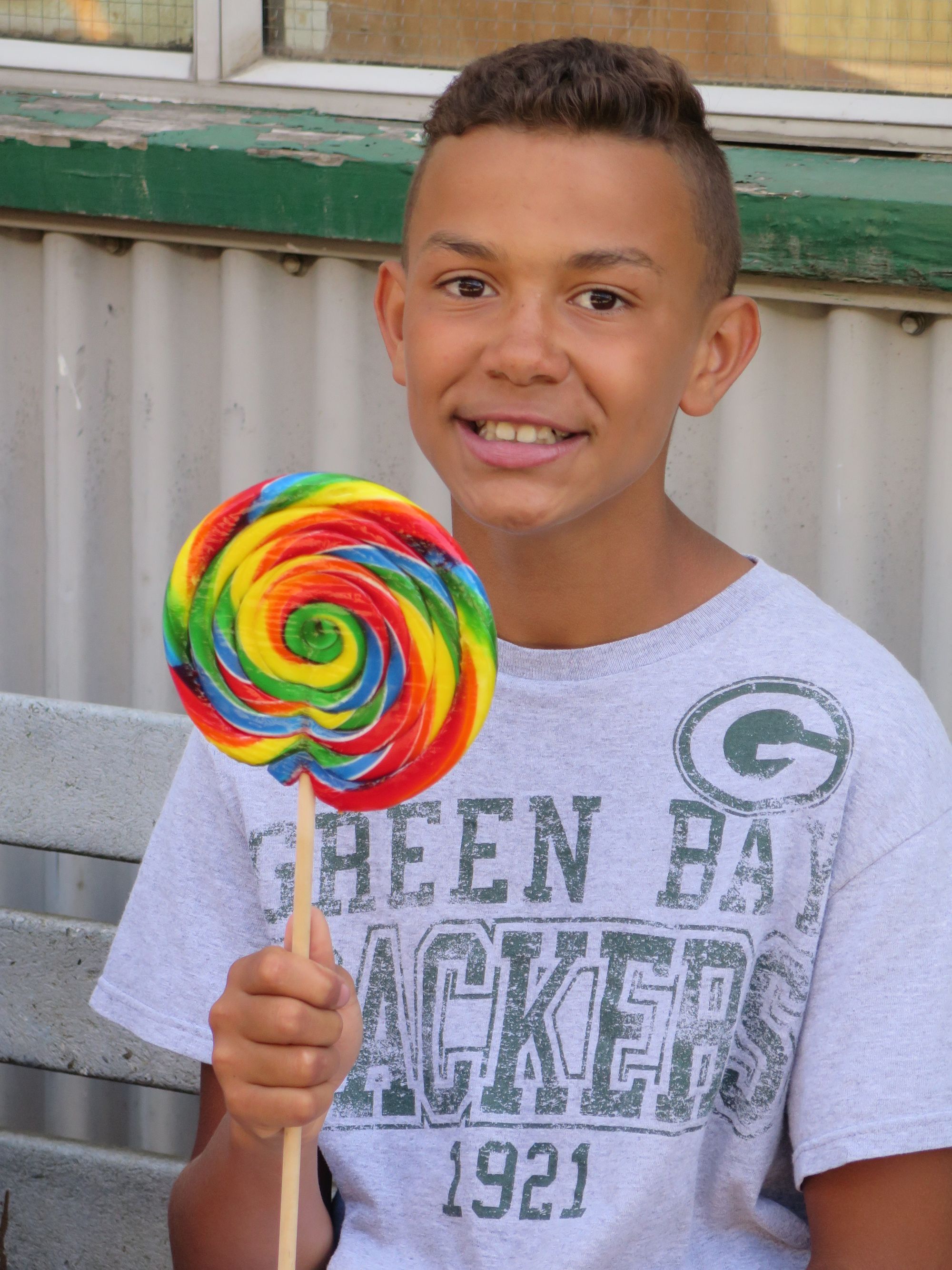
Buenos Aires - Plaza Dorrego and the Sunday Antique Market
Plaza Dorrego is one of the oldest squares in the whole of the city, and its weekly antique market is full of curiosities and local handicrafts. It is a major gathering place just to hang out and see the show.
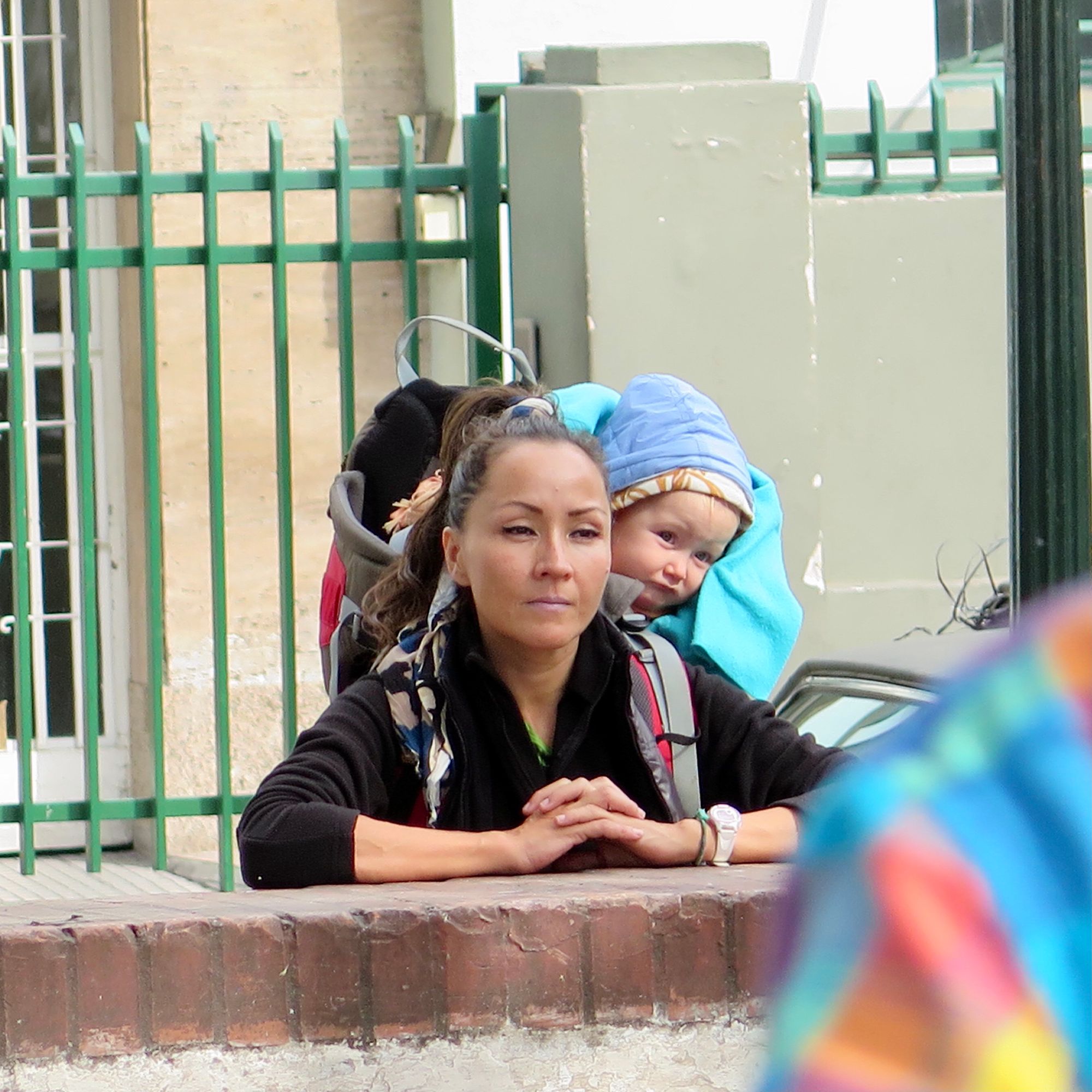
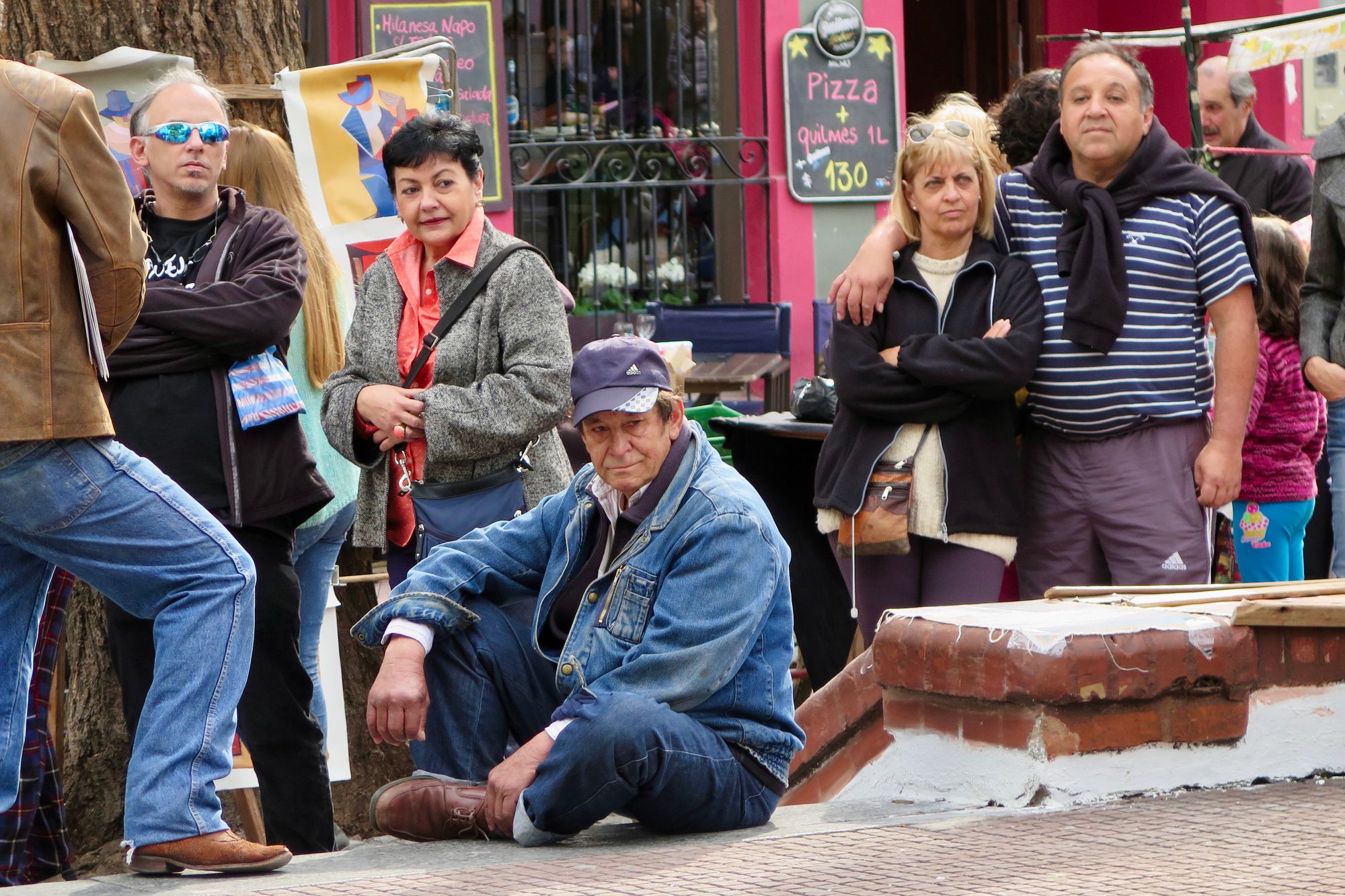
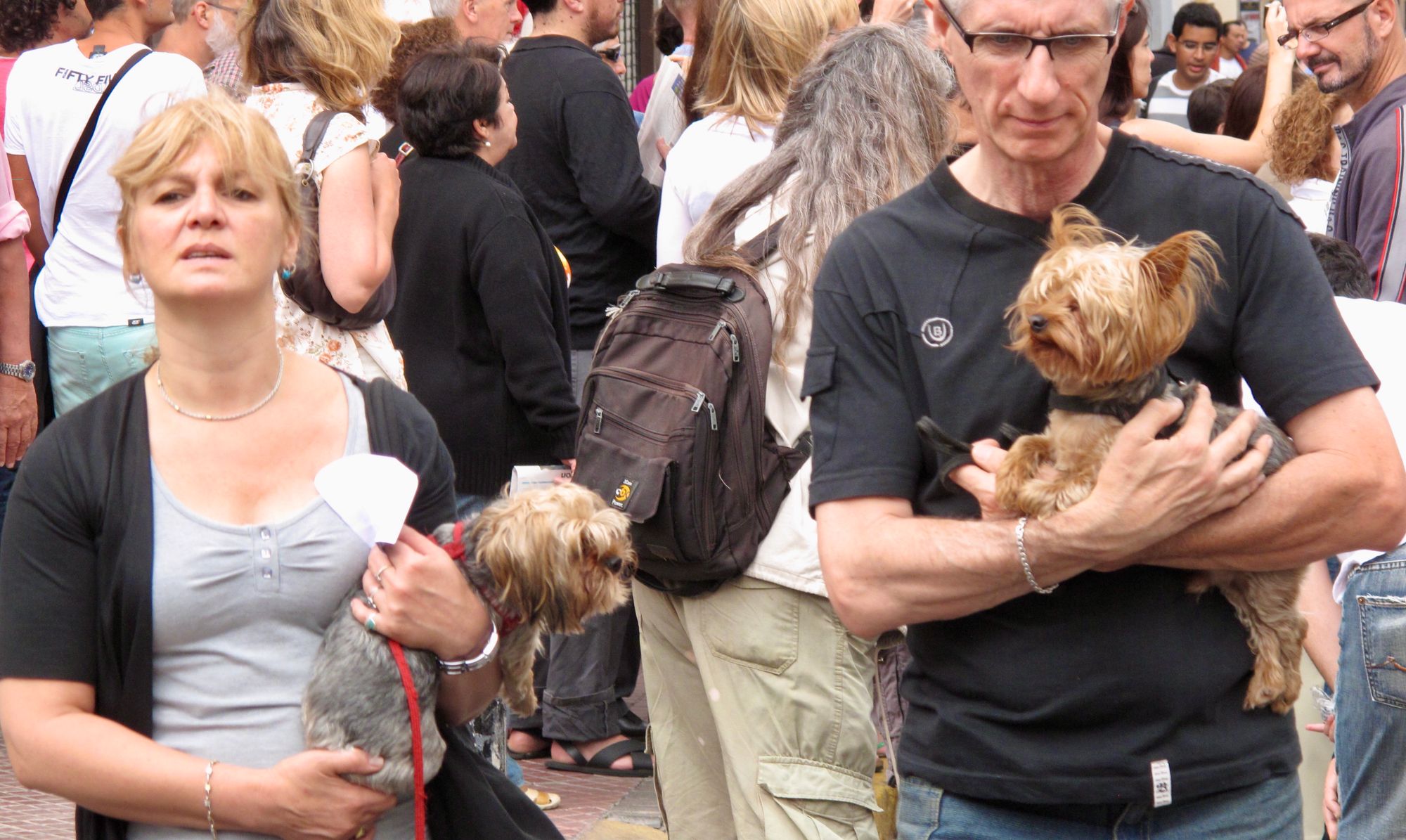
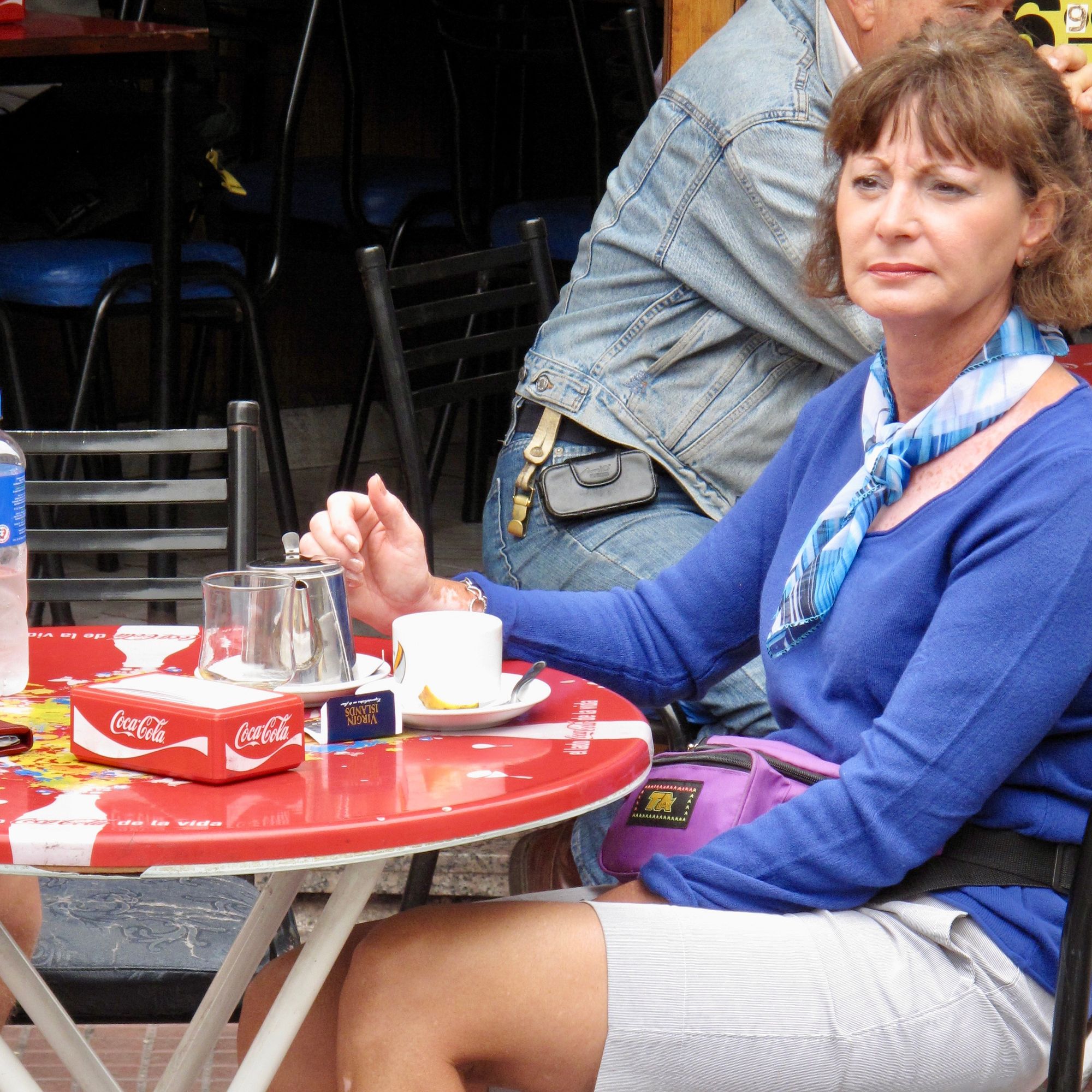
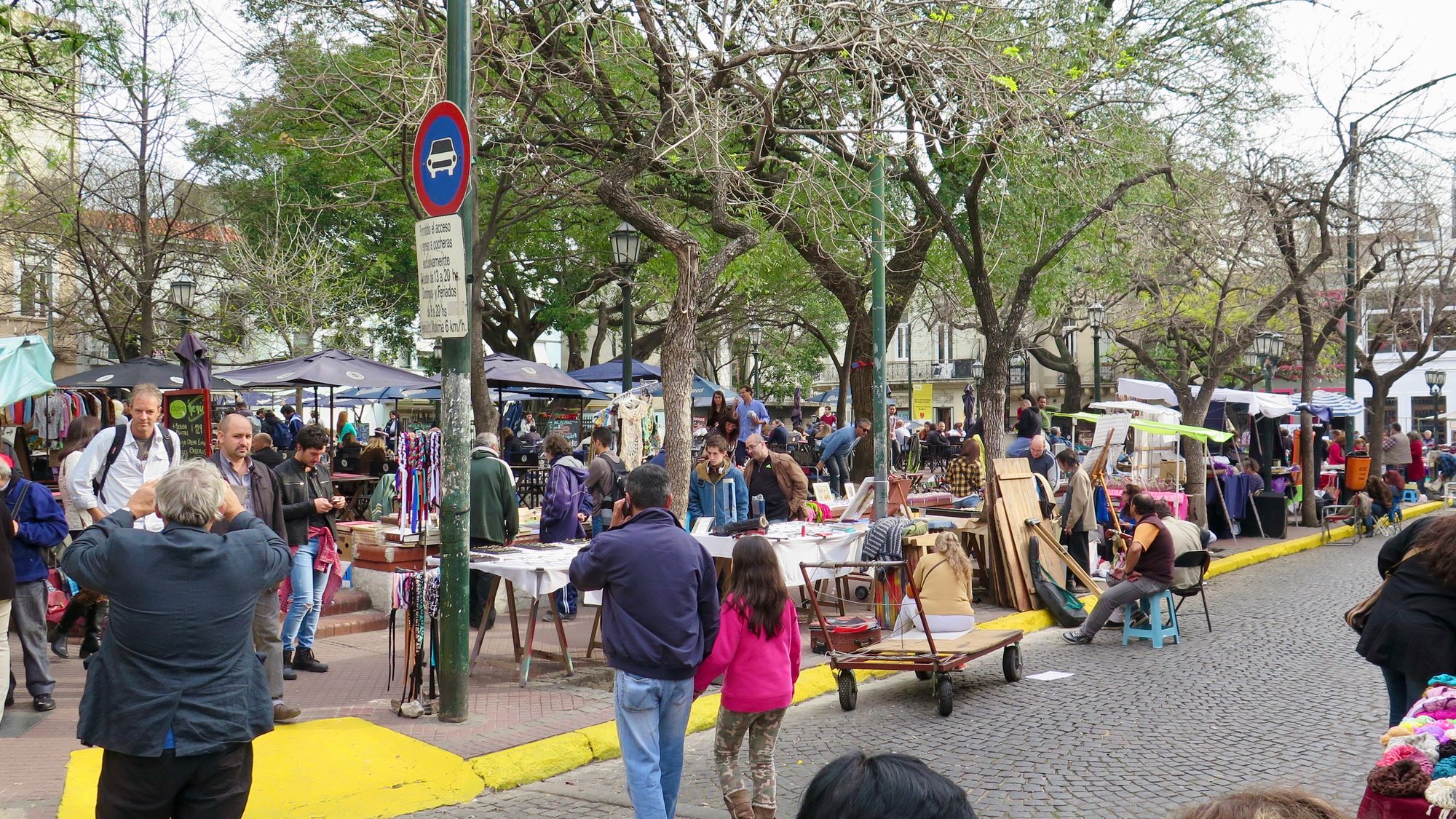
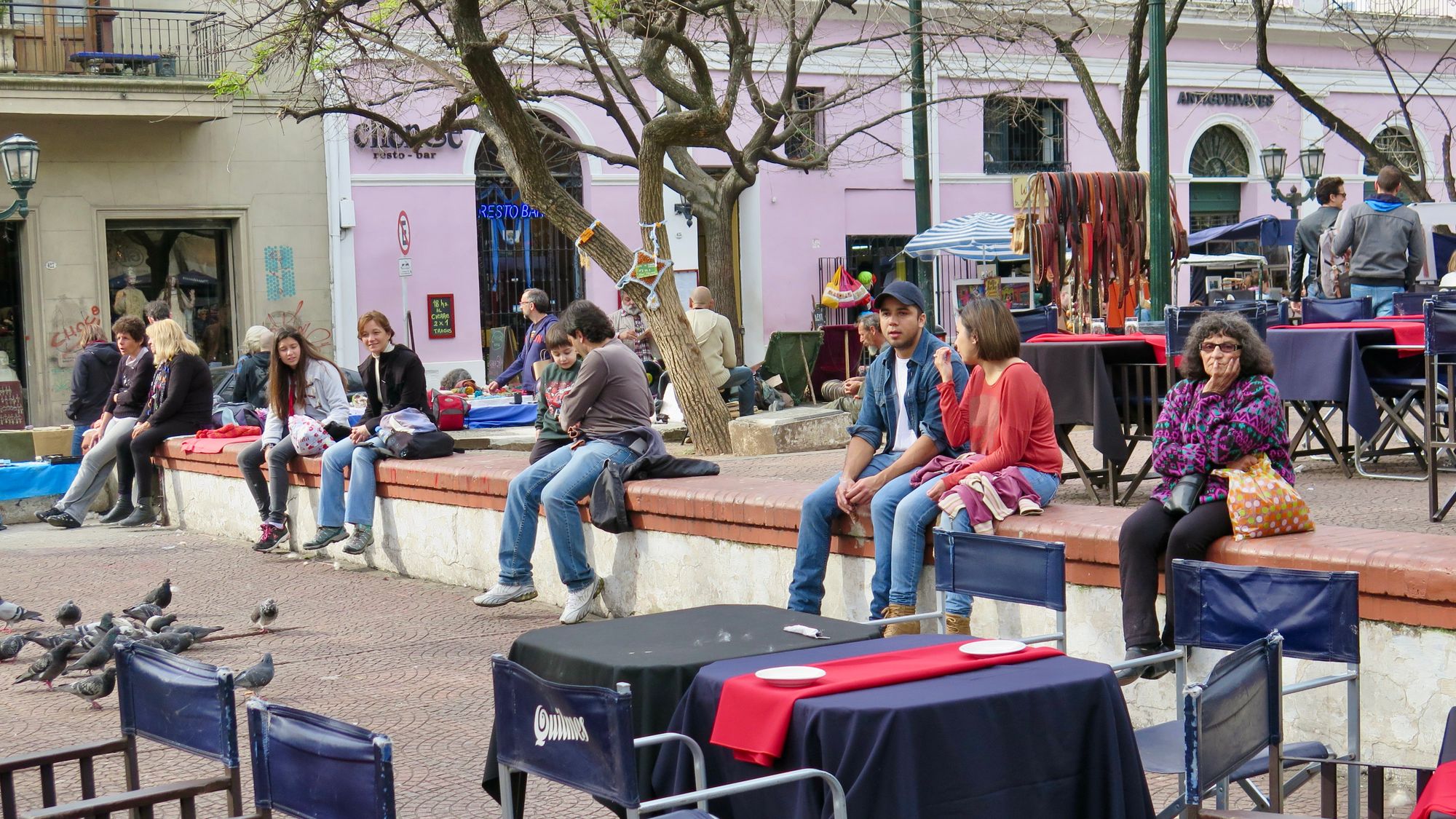
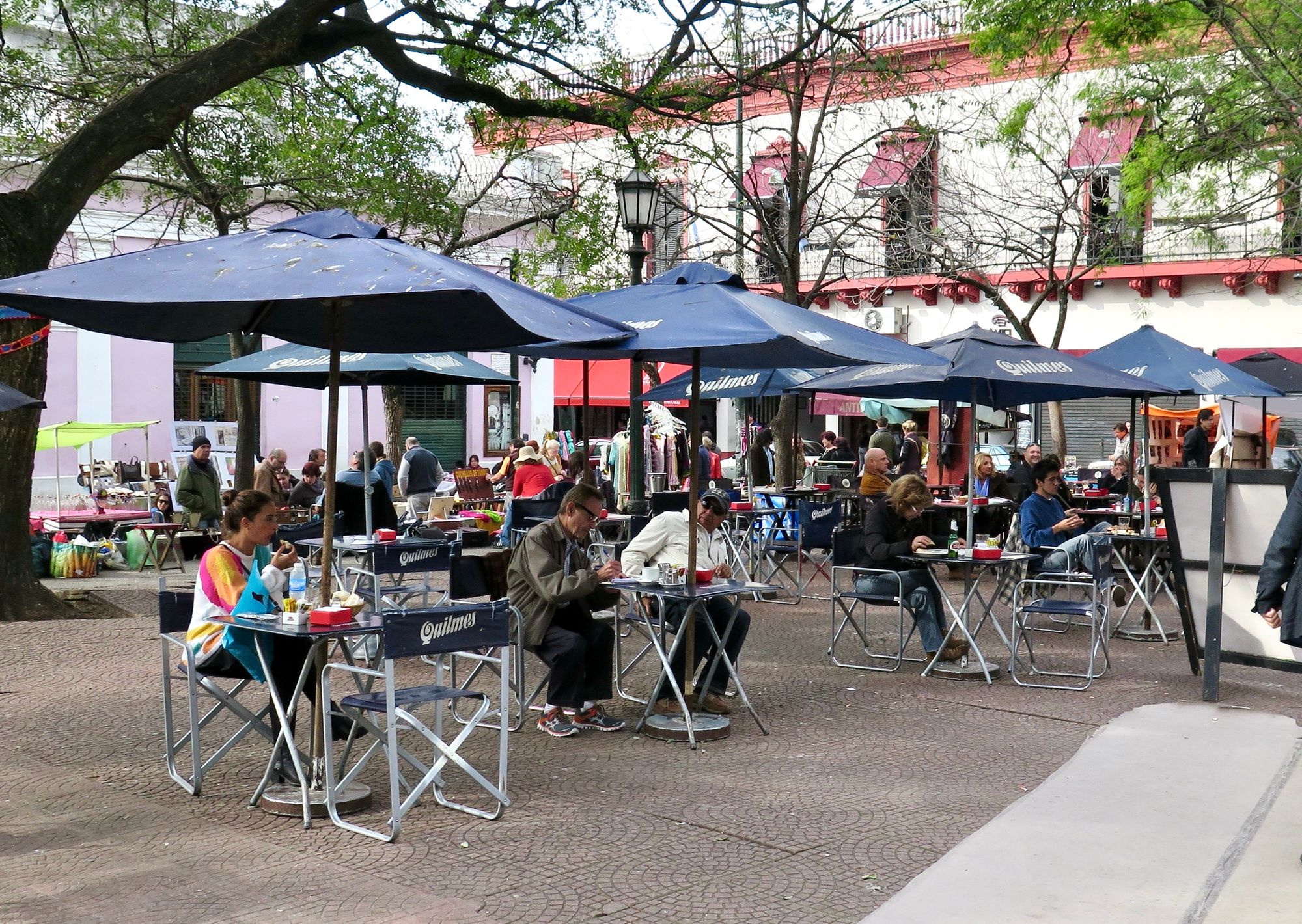
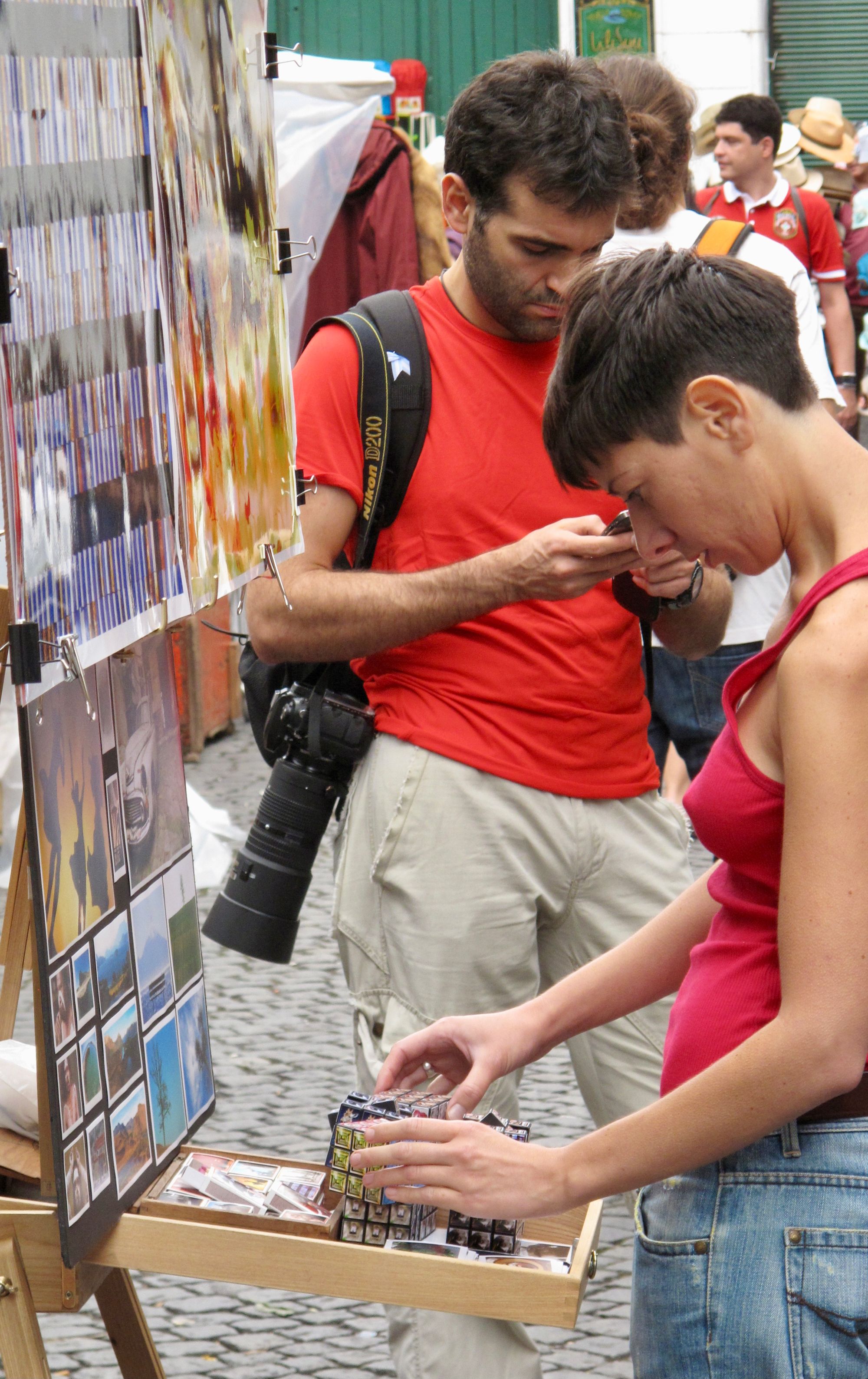
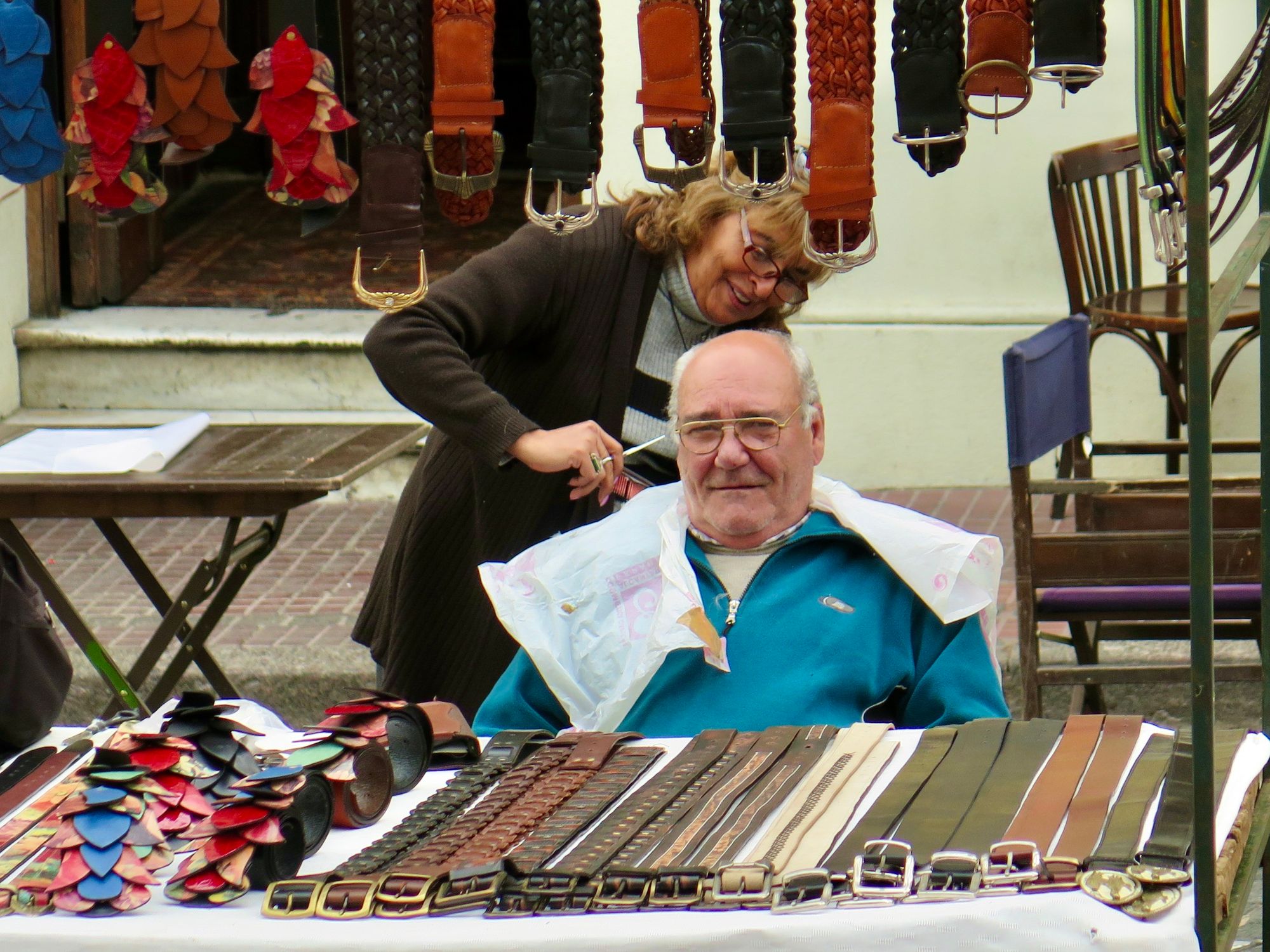
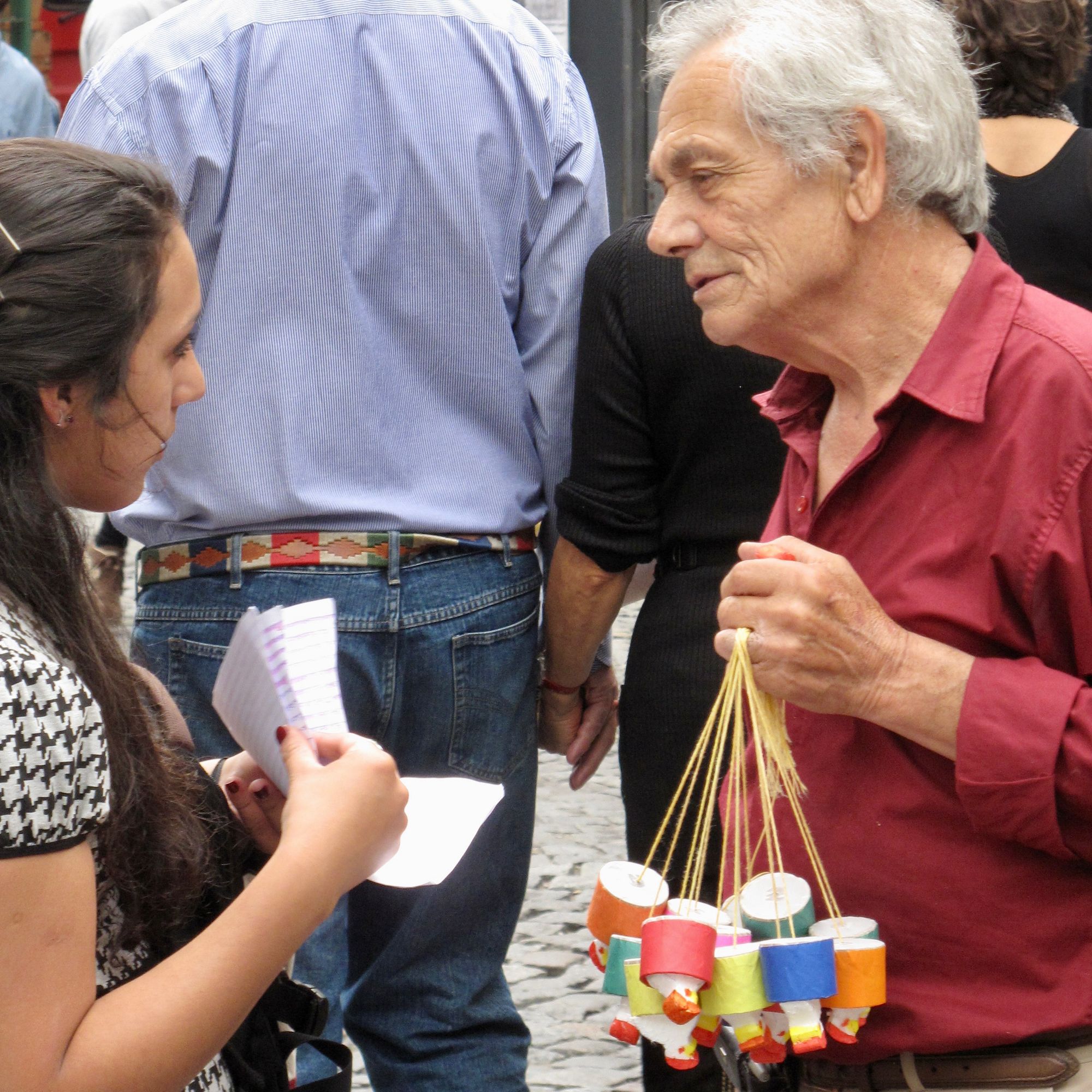
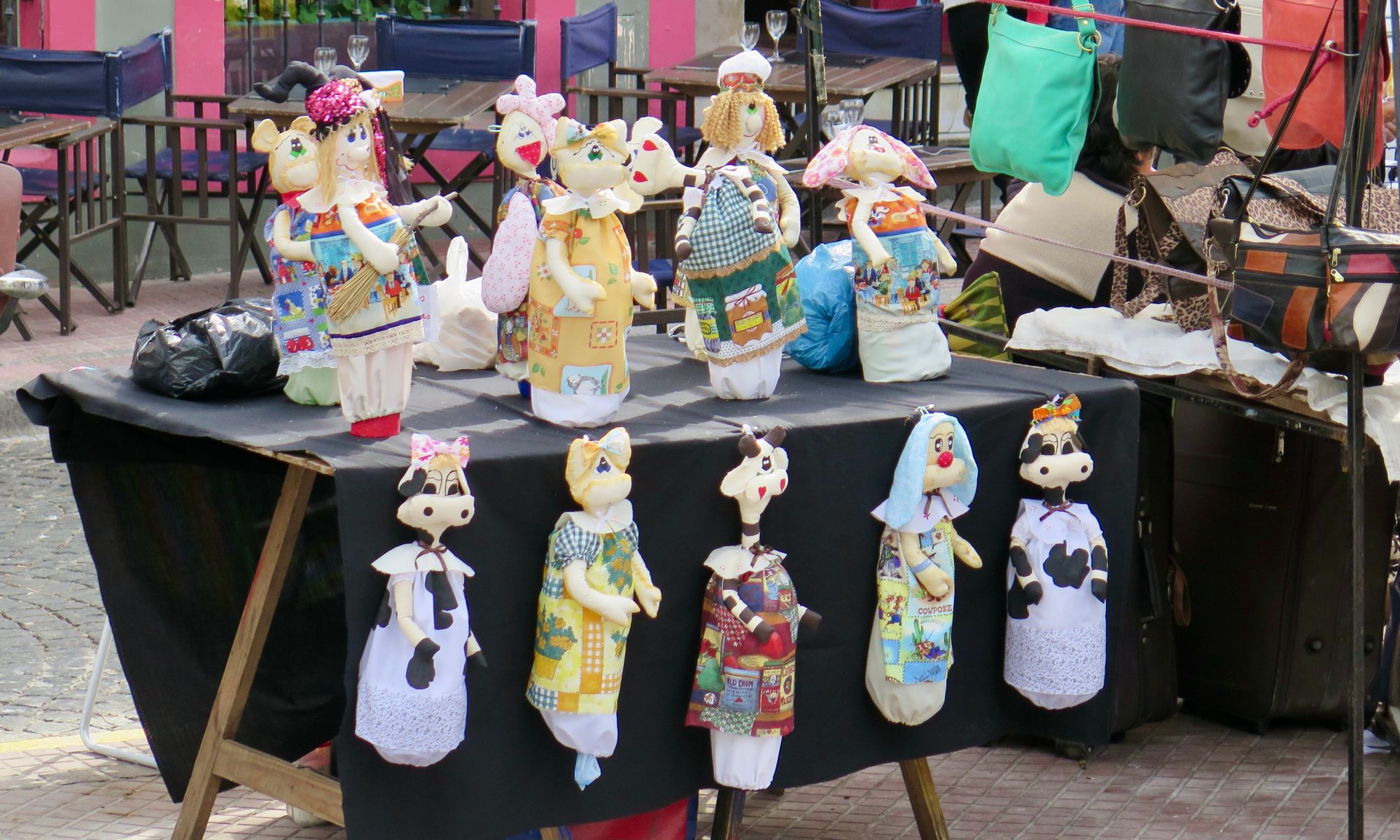
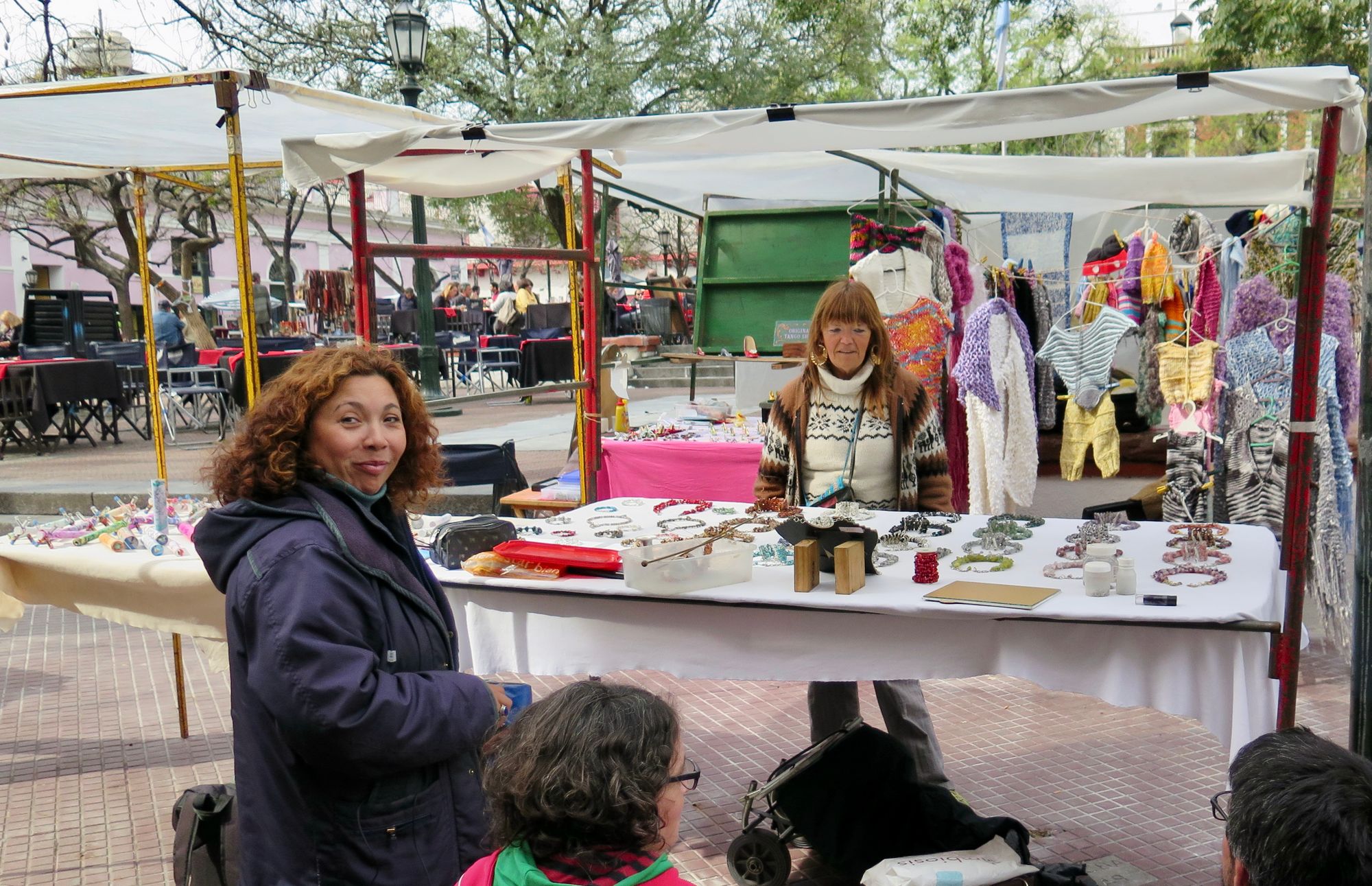
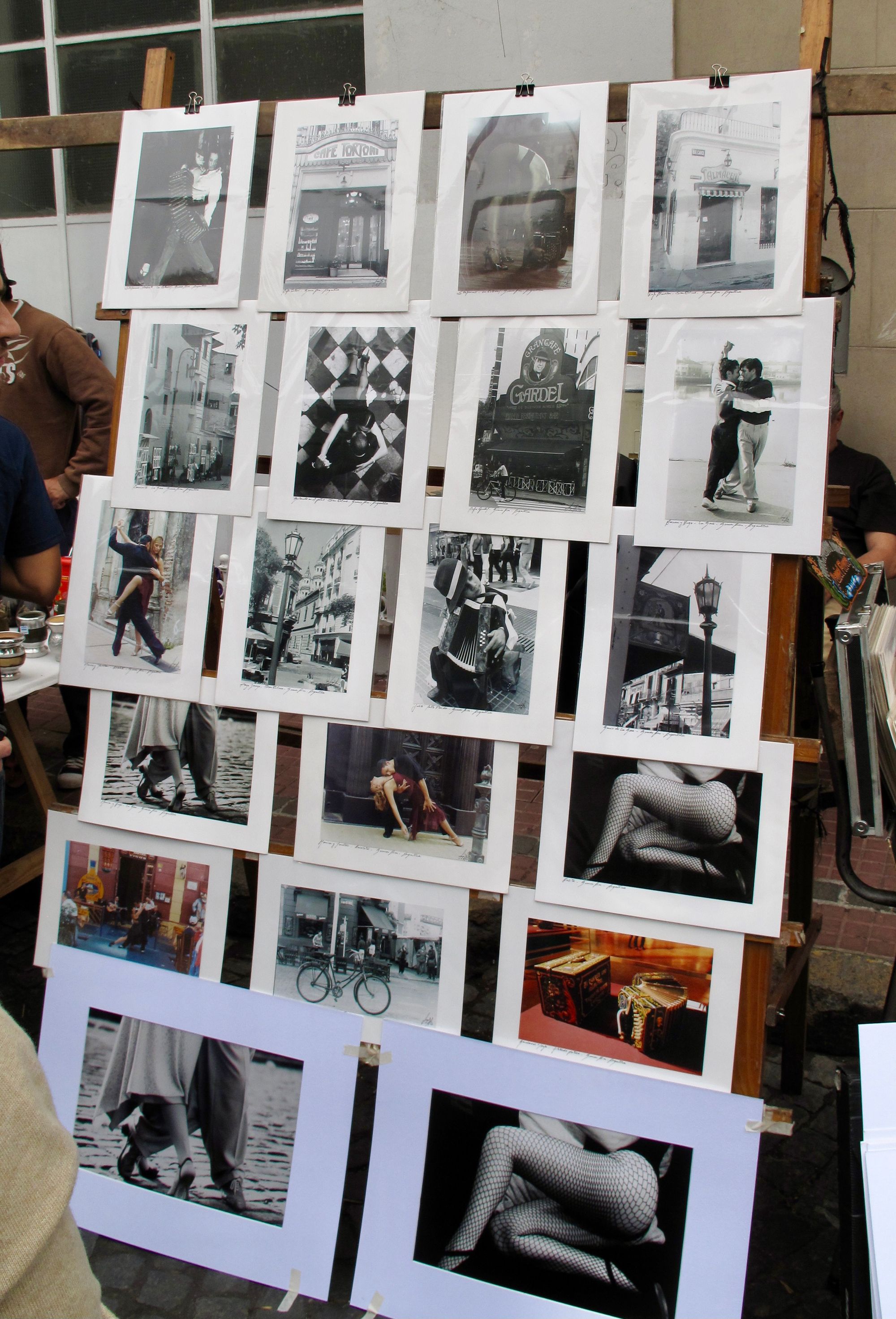
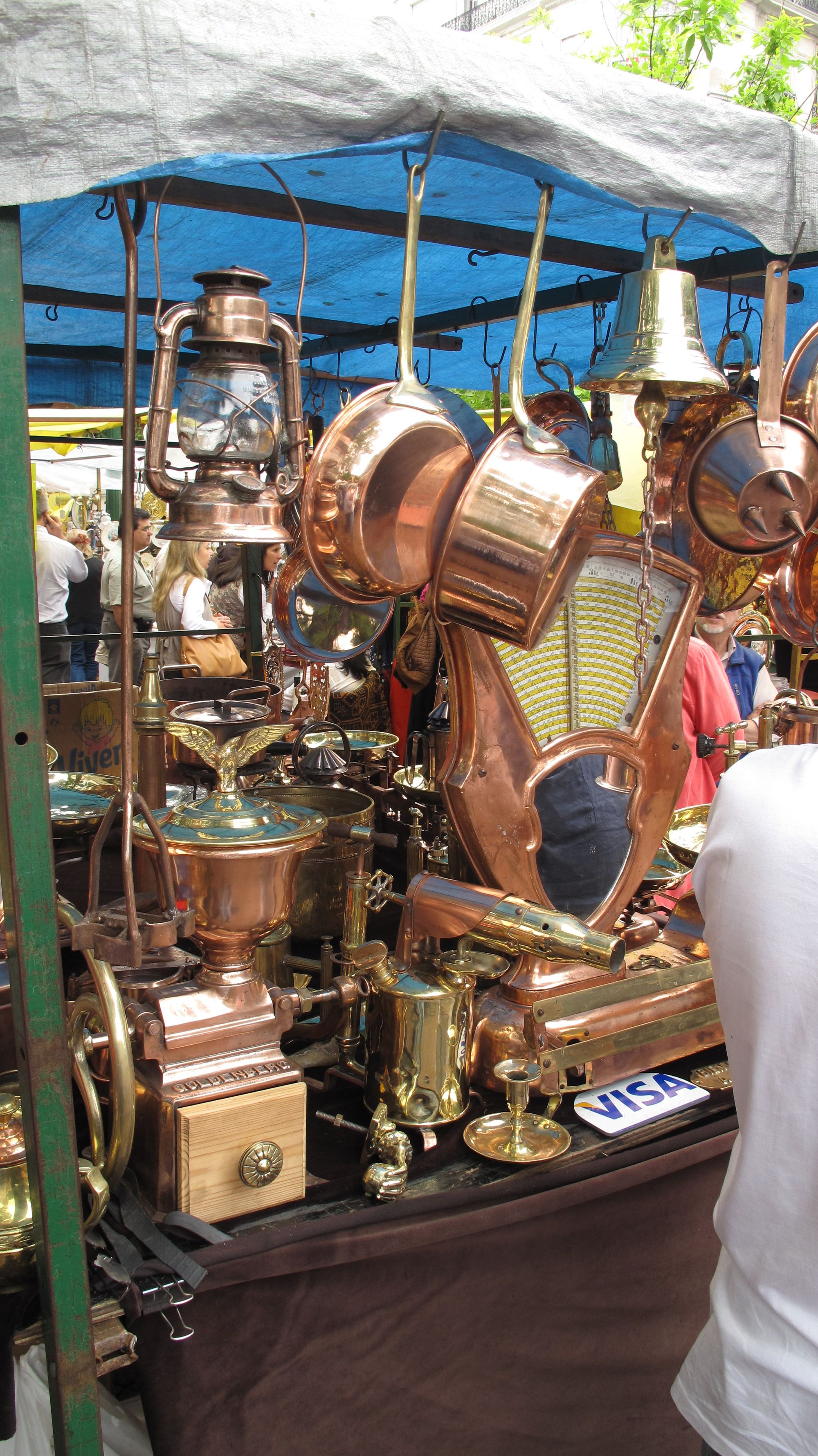
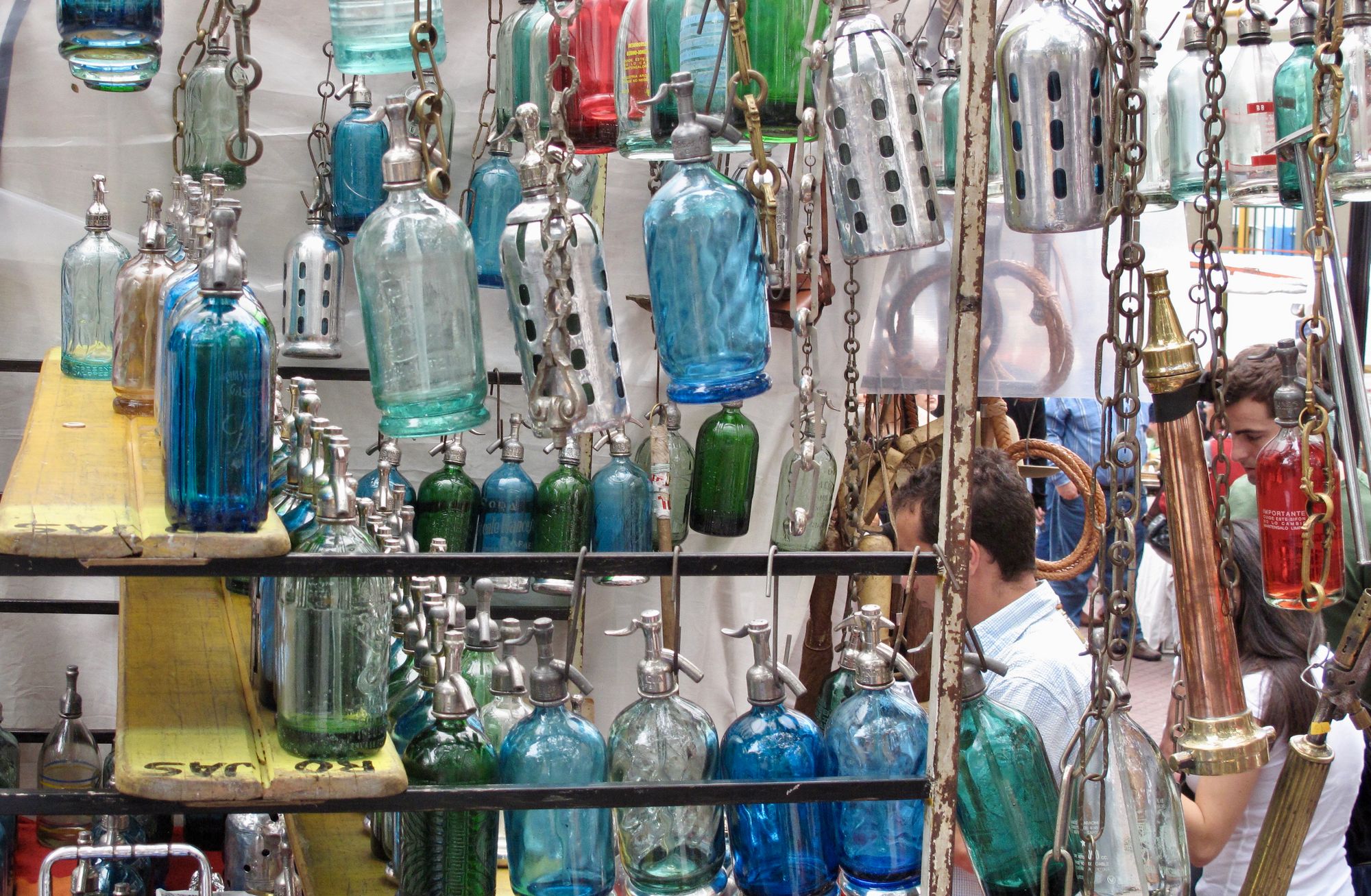
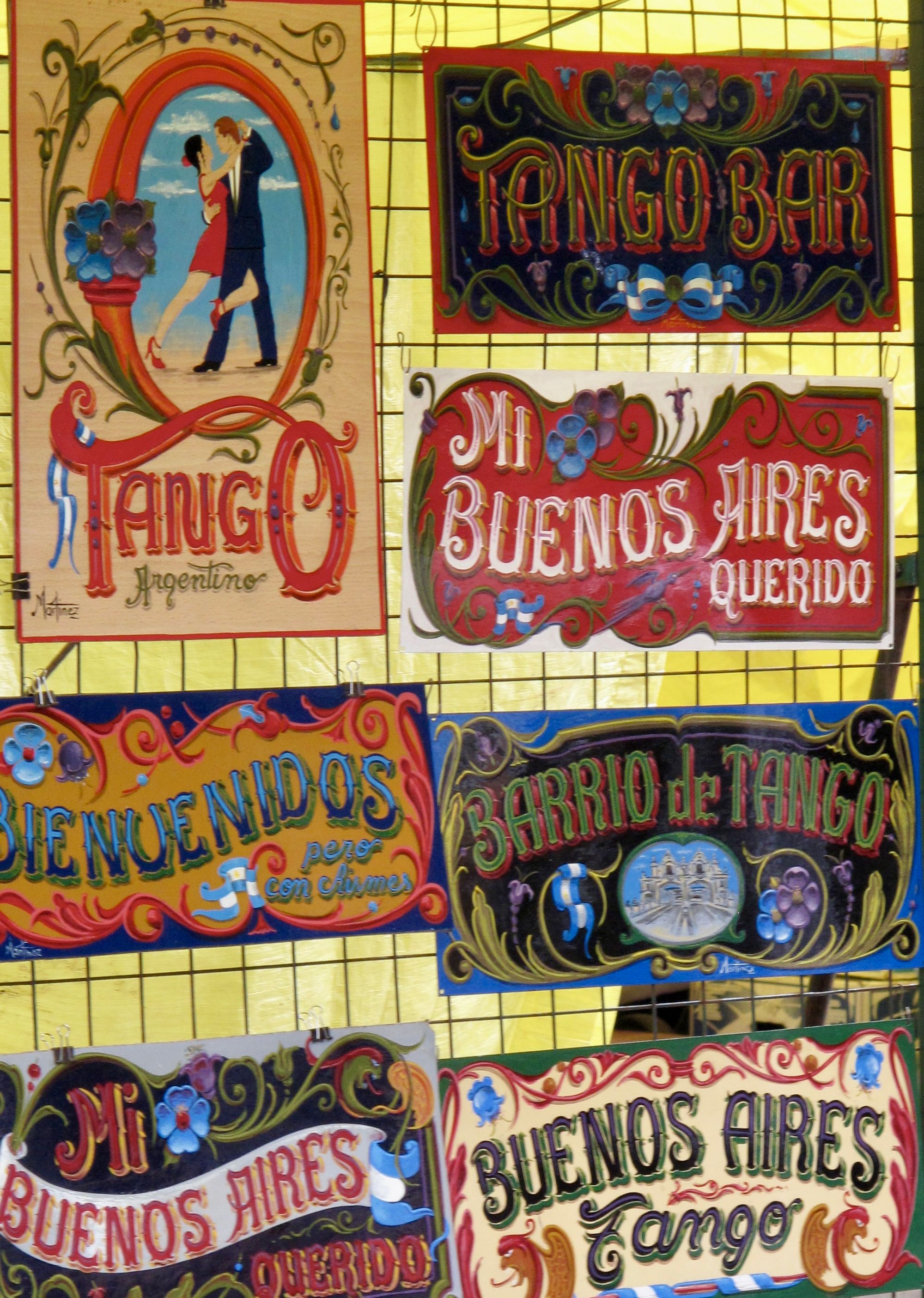
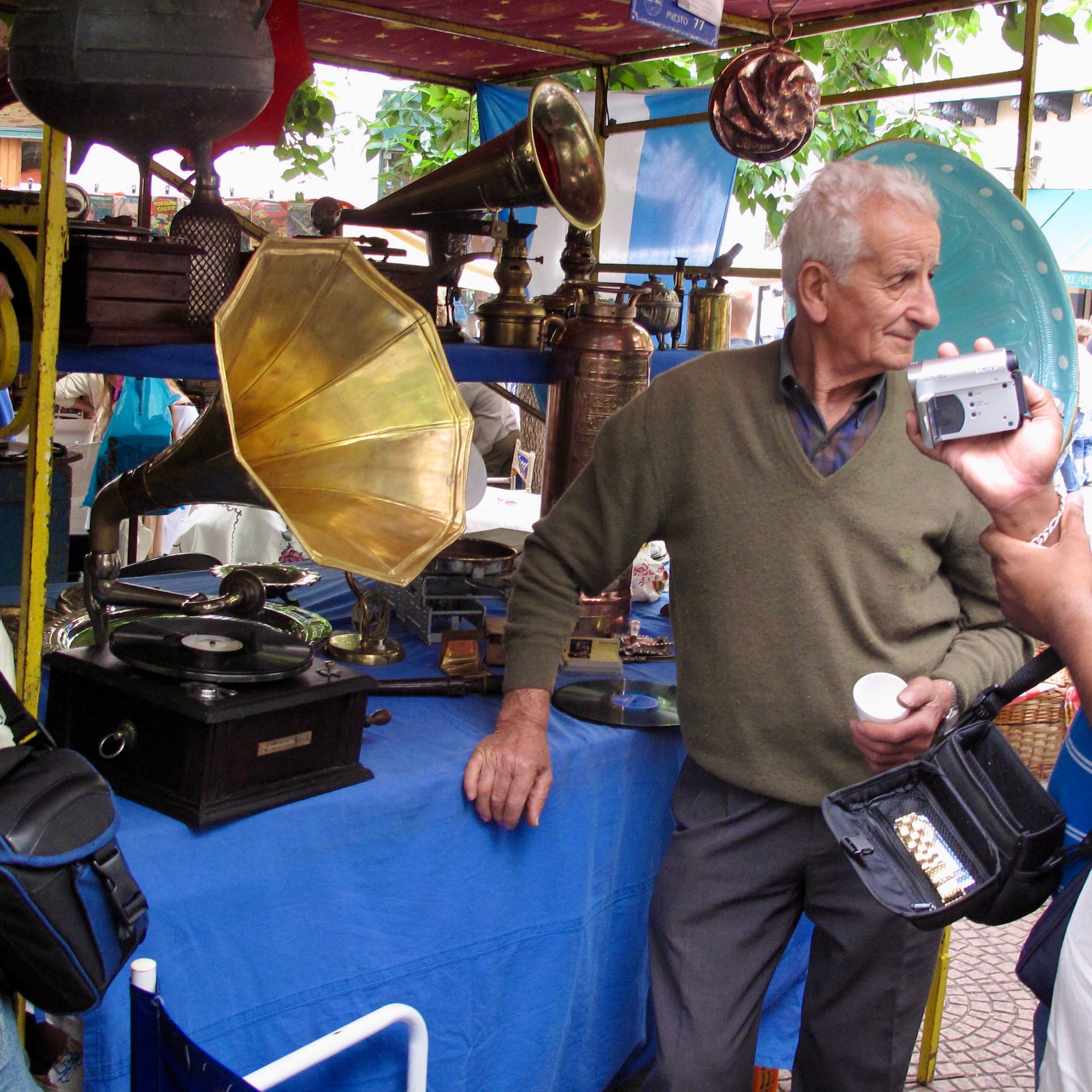
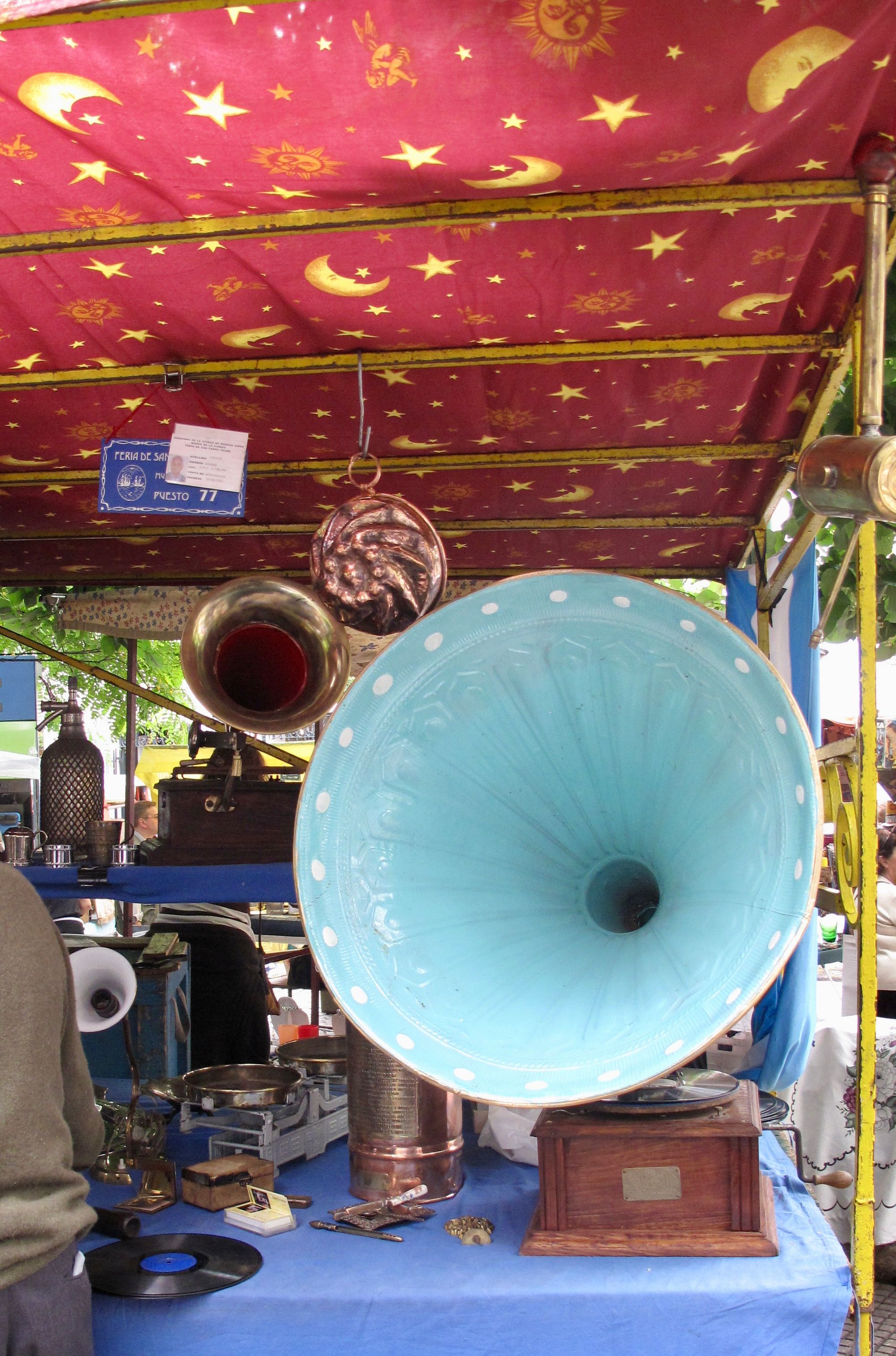
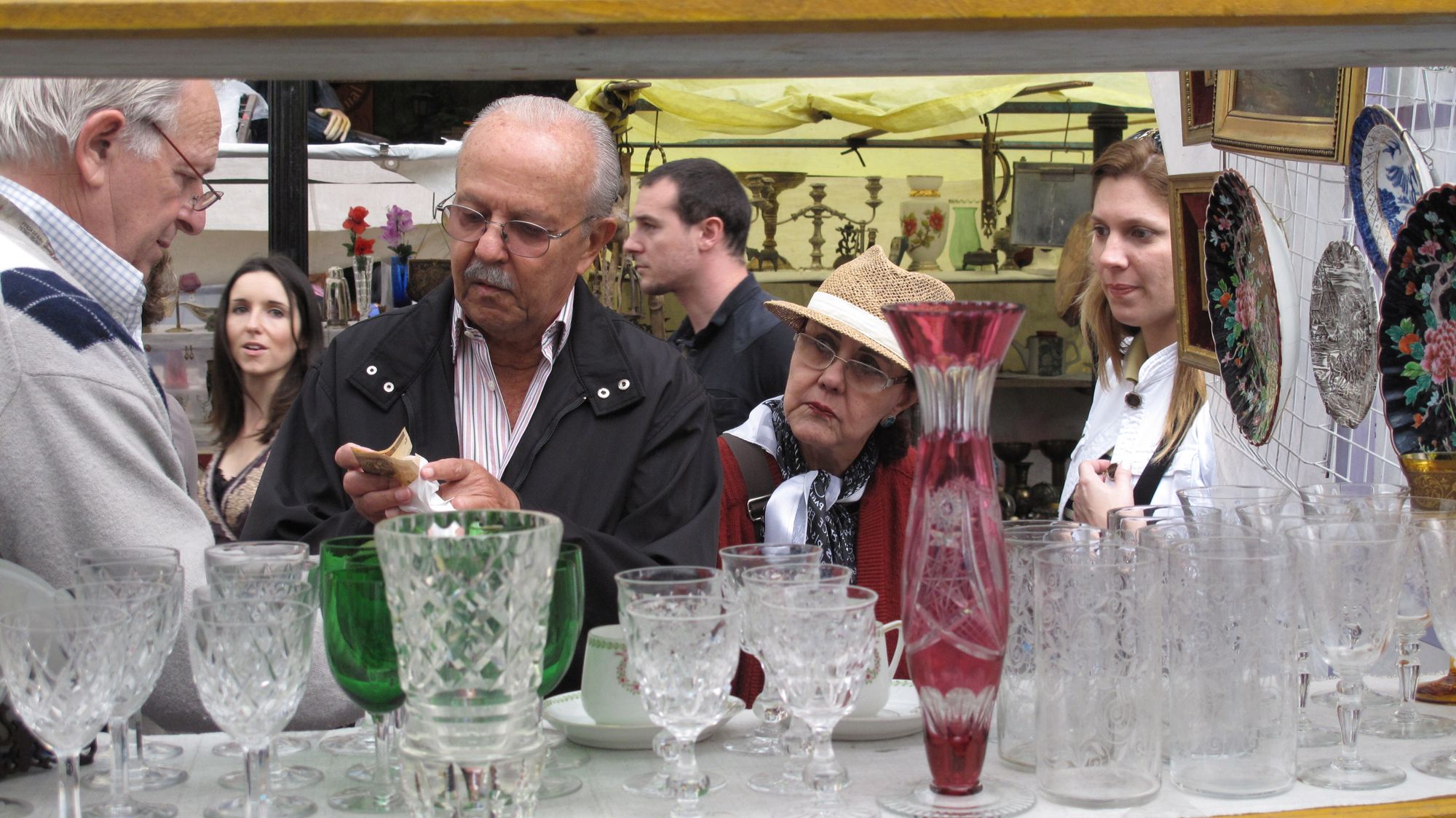
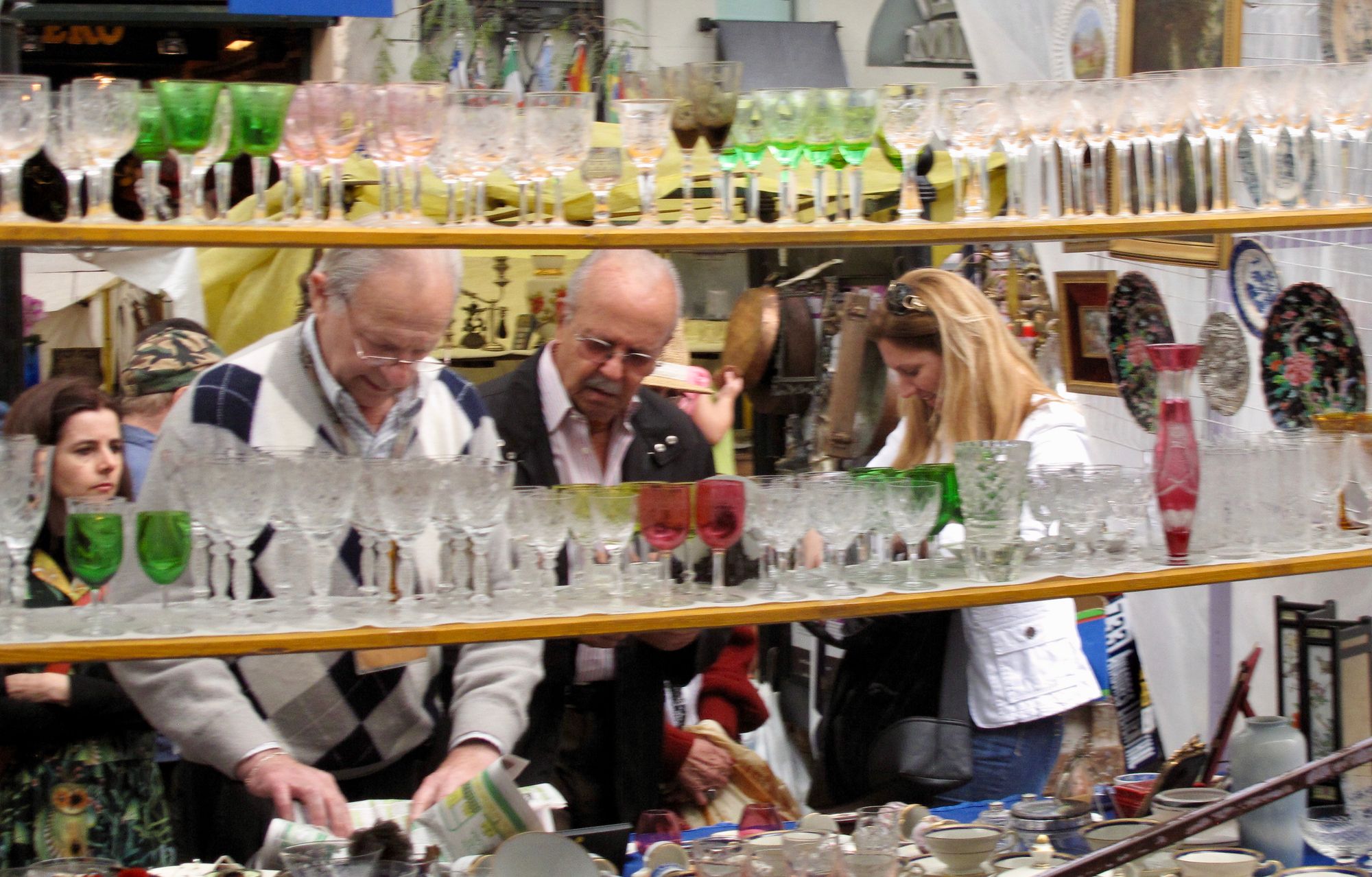
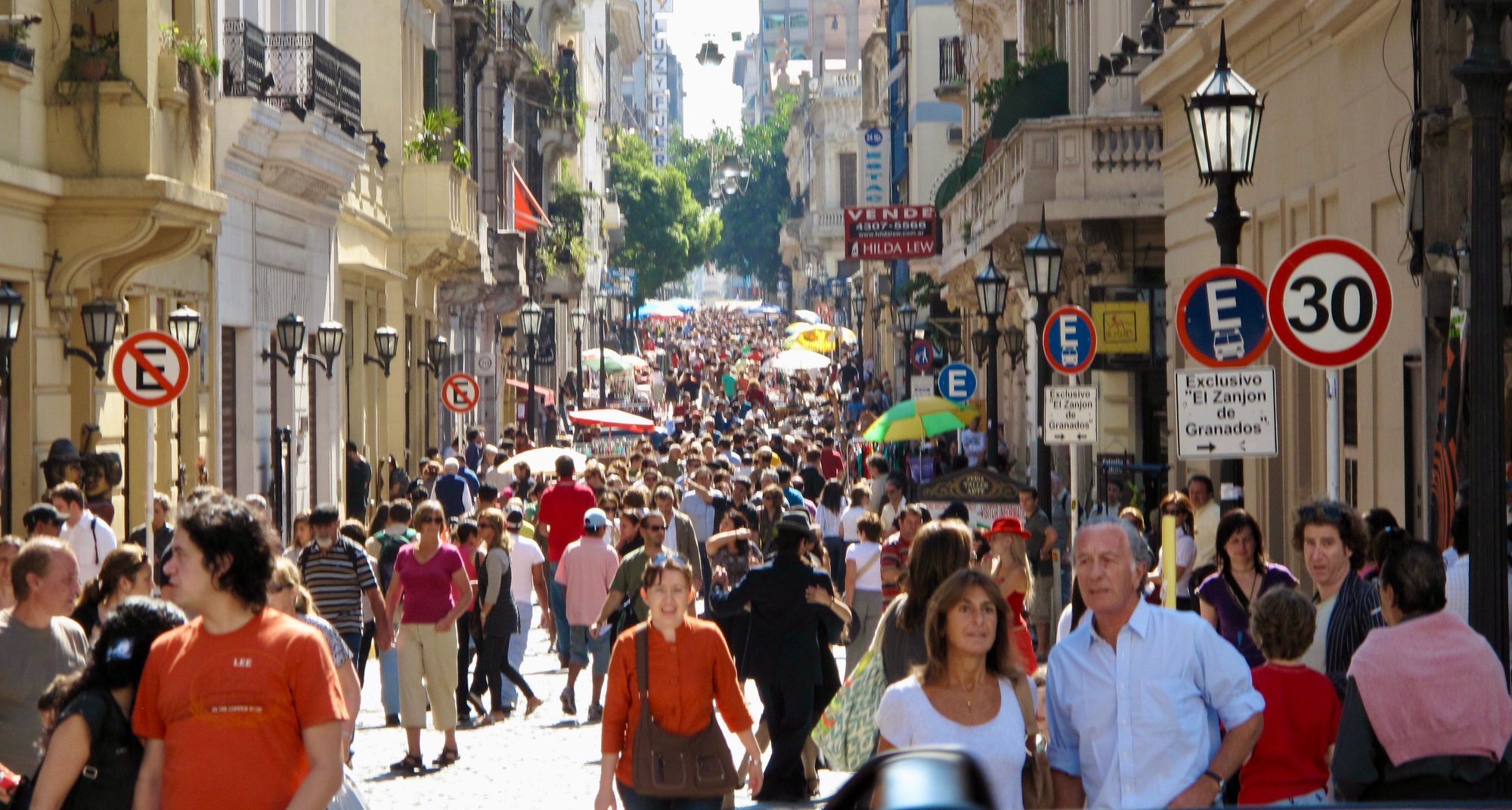
Ithaca, New York
Like Delray's Saturday Market, Ithaca's is a major attraction, but it also has a highly functional, permanent, 500 foot long shed that provides shade and protection from the elements. The vendors and clients gather in its main corridor, creating the meeting place everyone wants to be in every Saturday during the season. We call it the Saturday "Main Street" for the region.
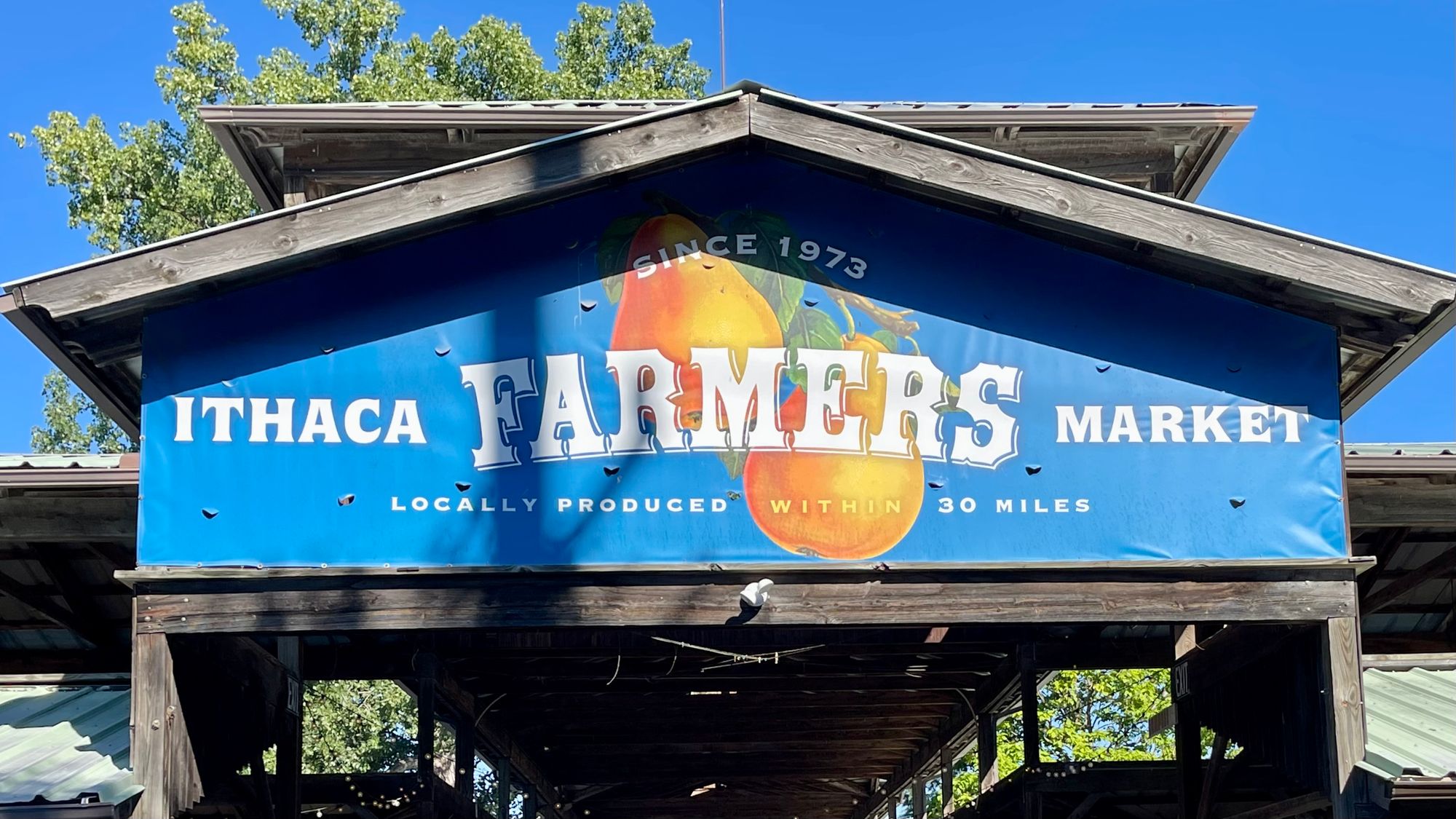
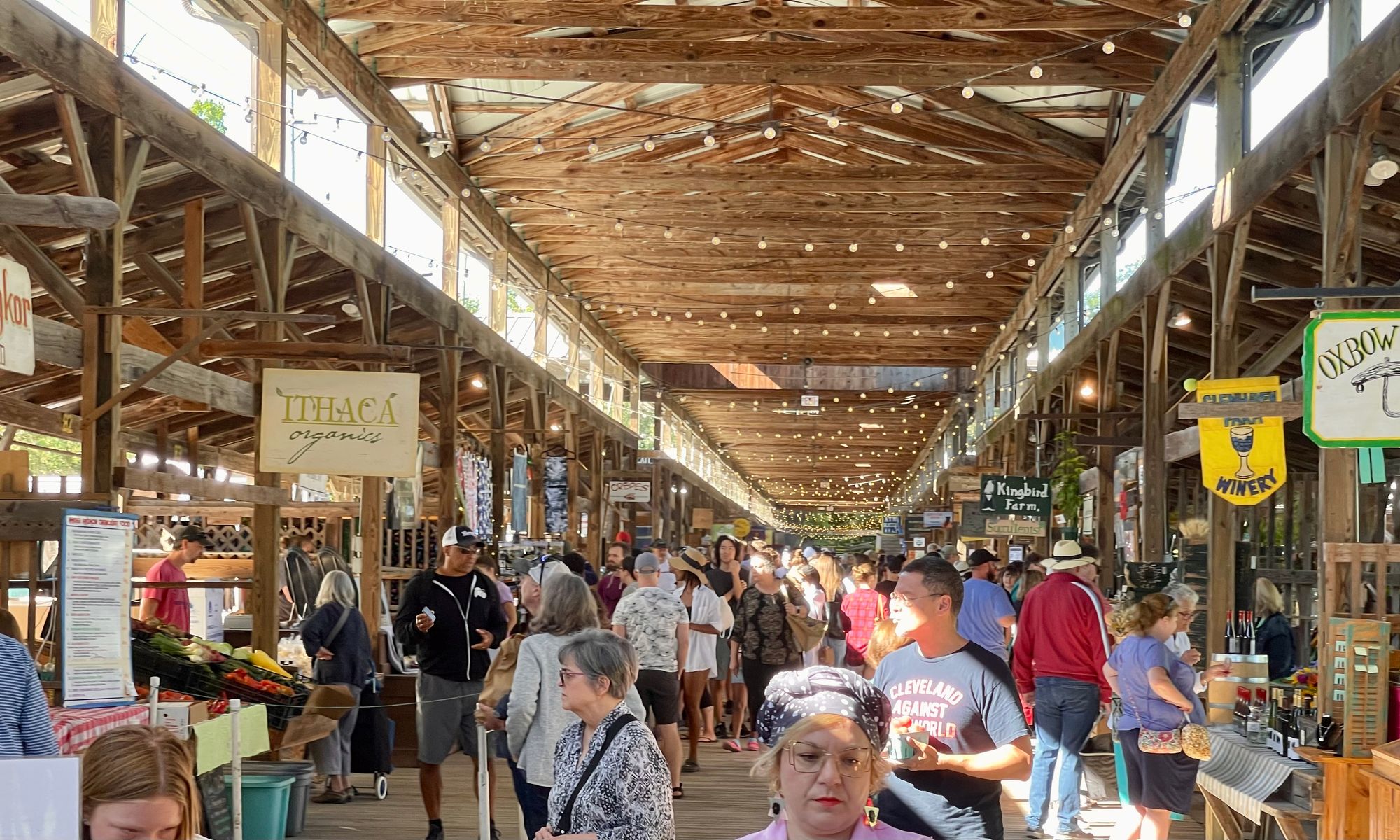
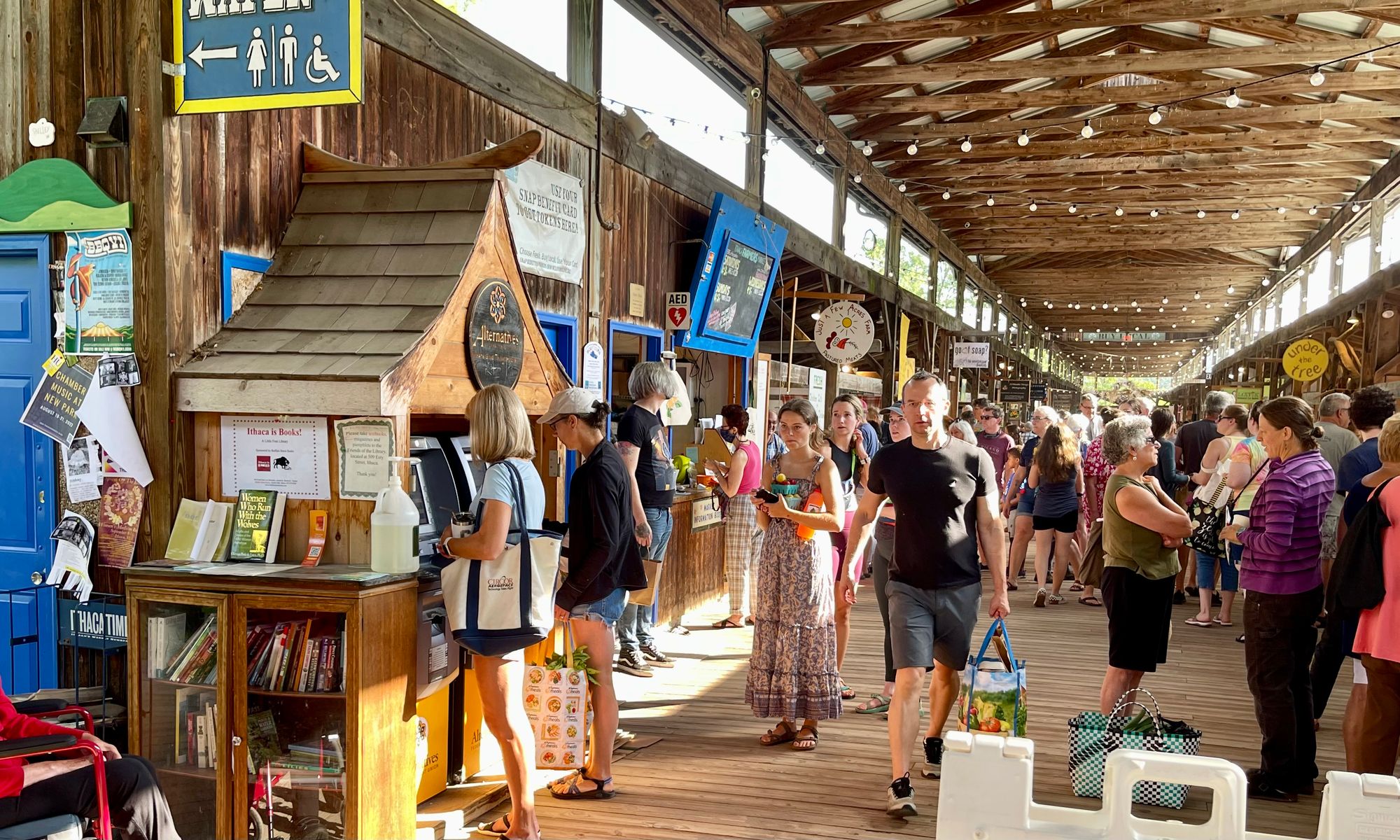
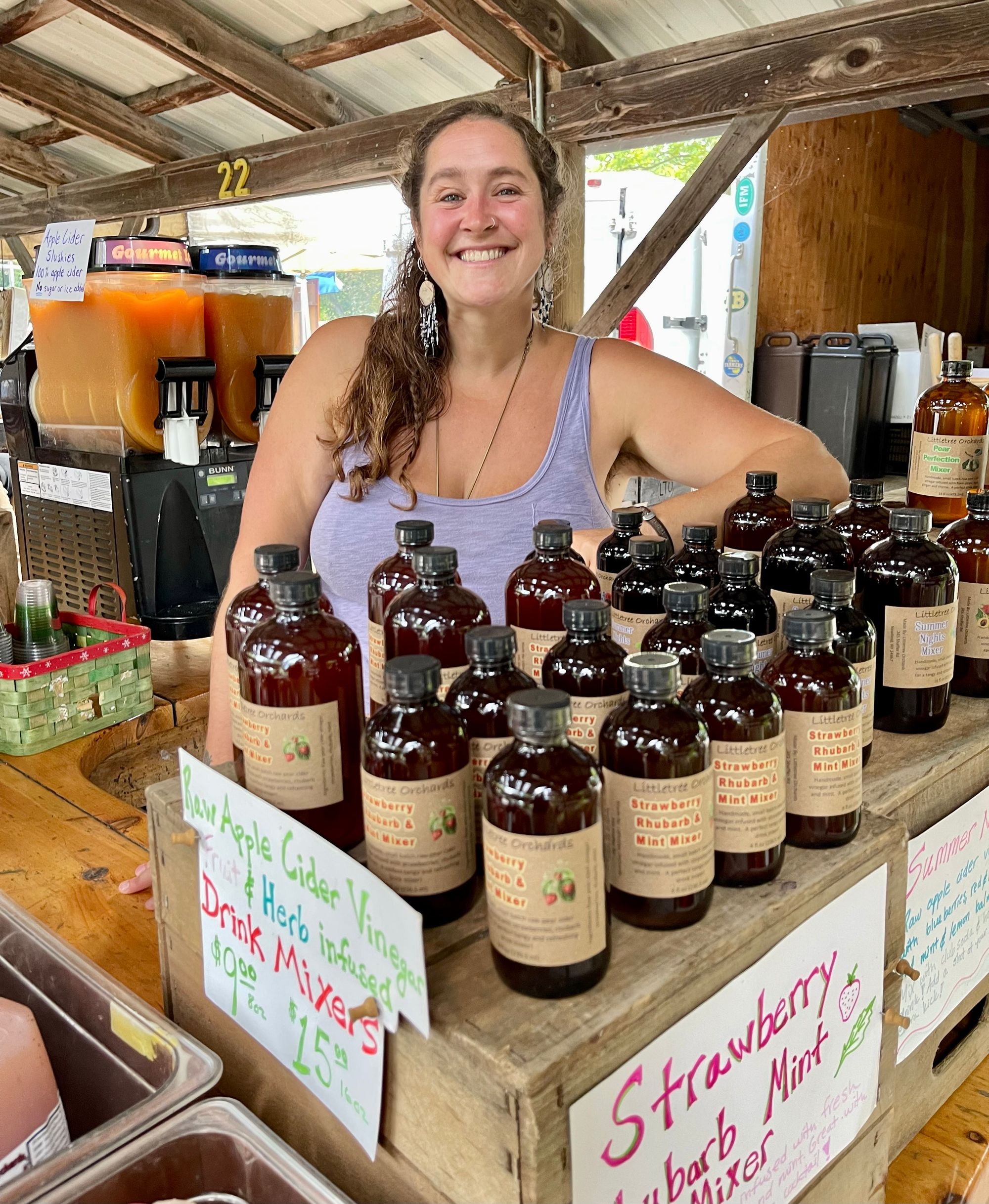
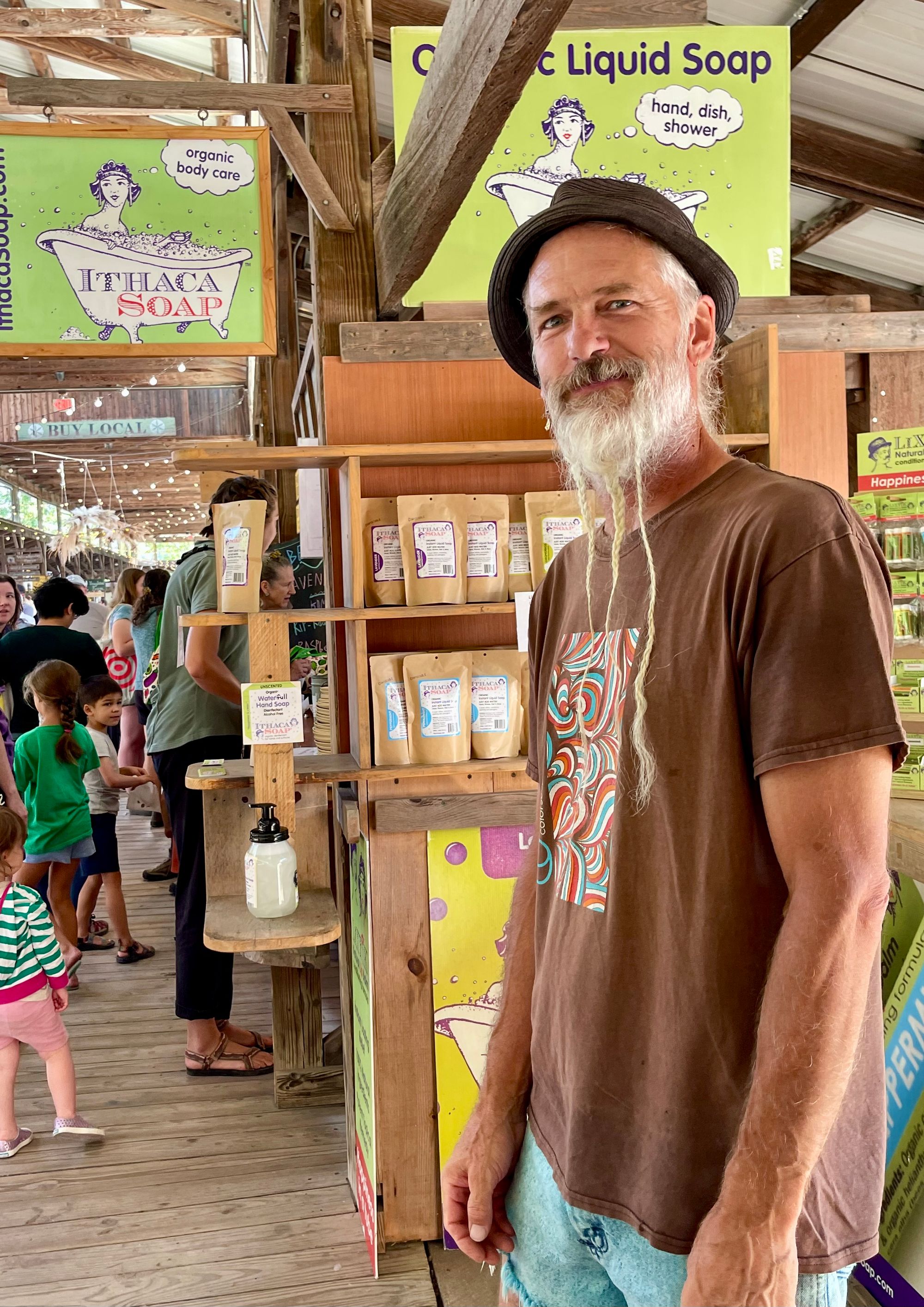
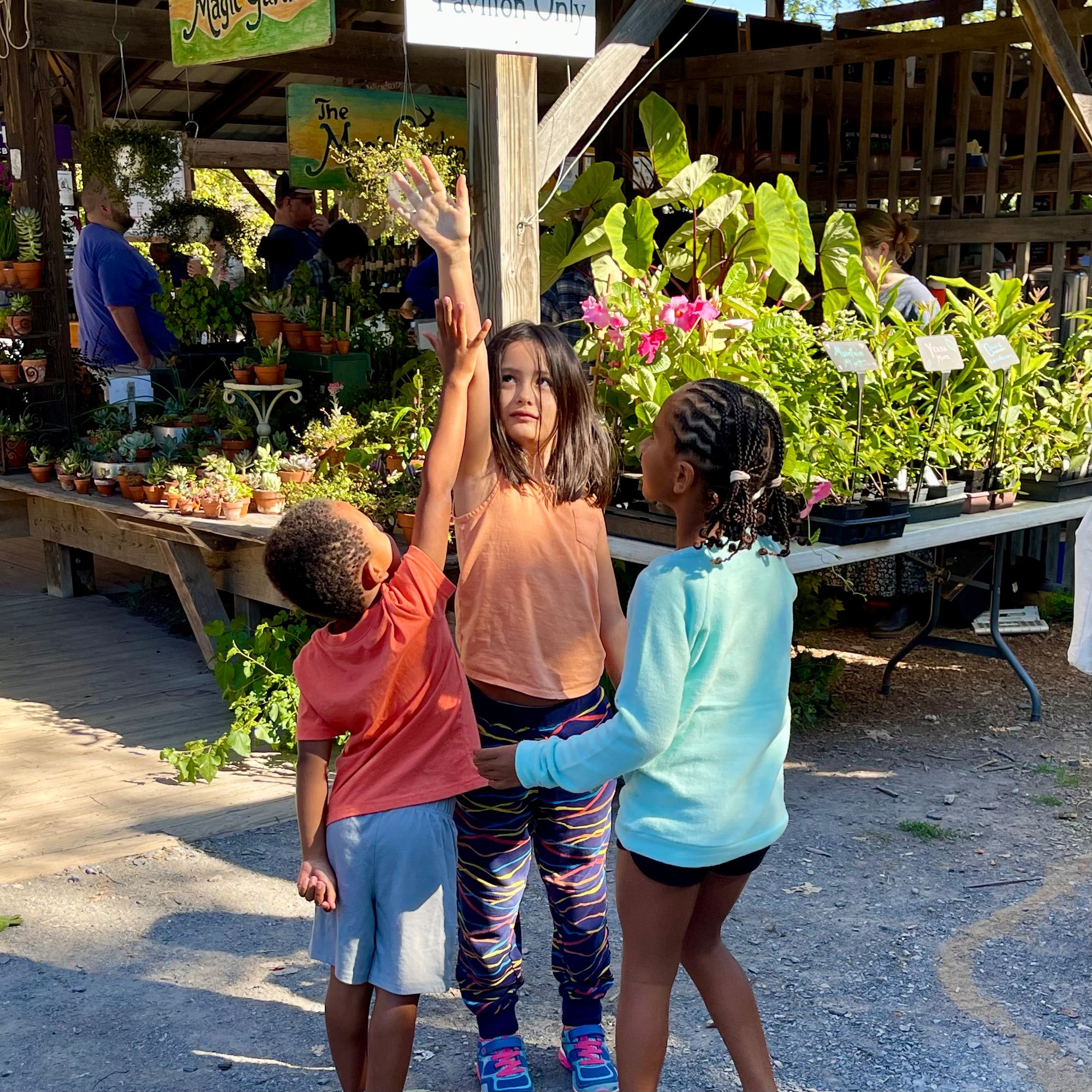
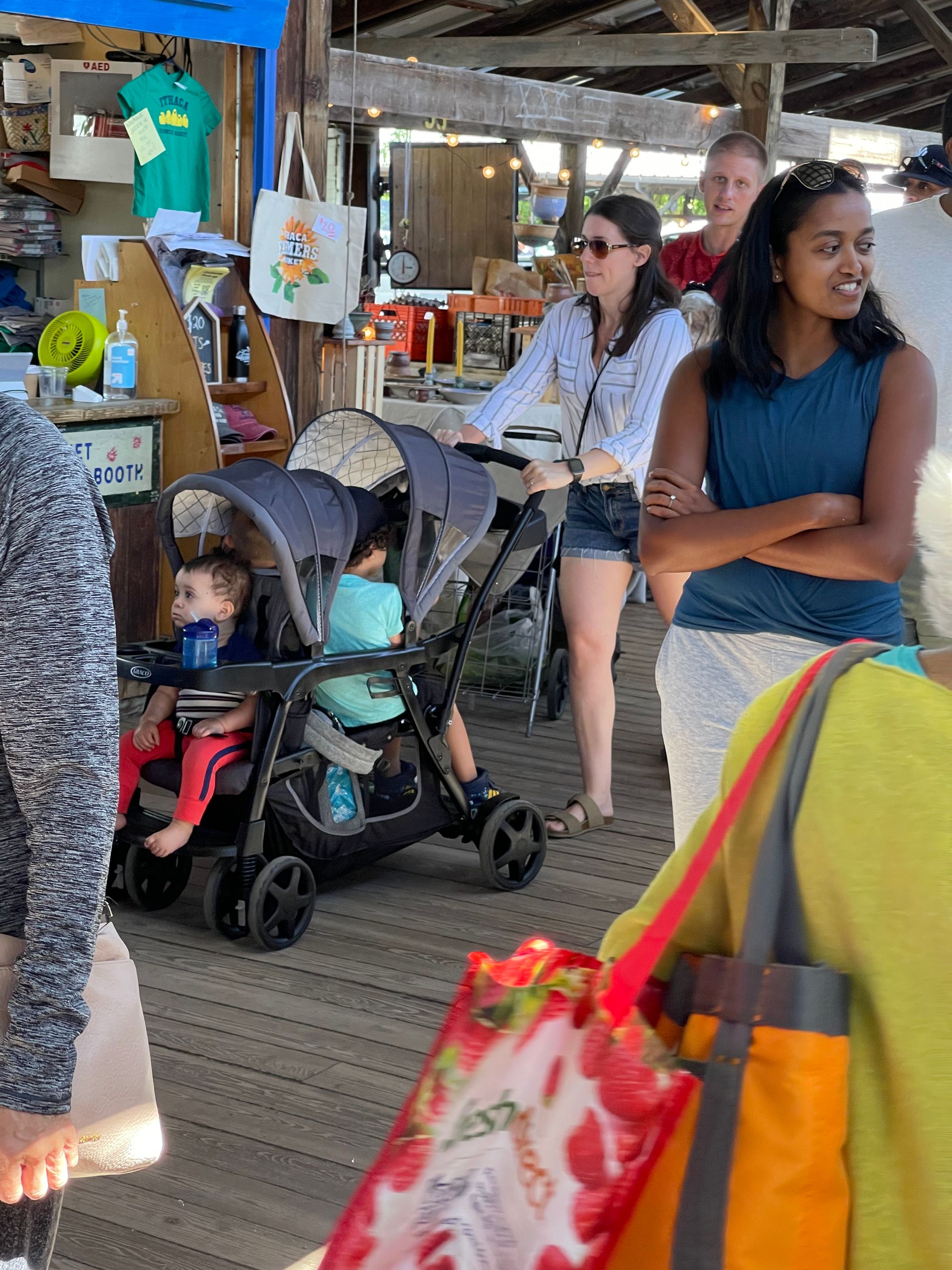
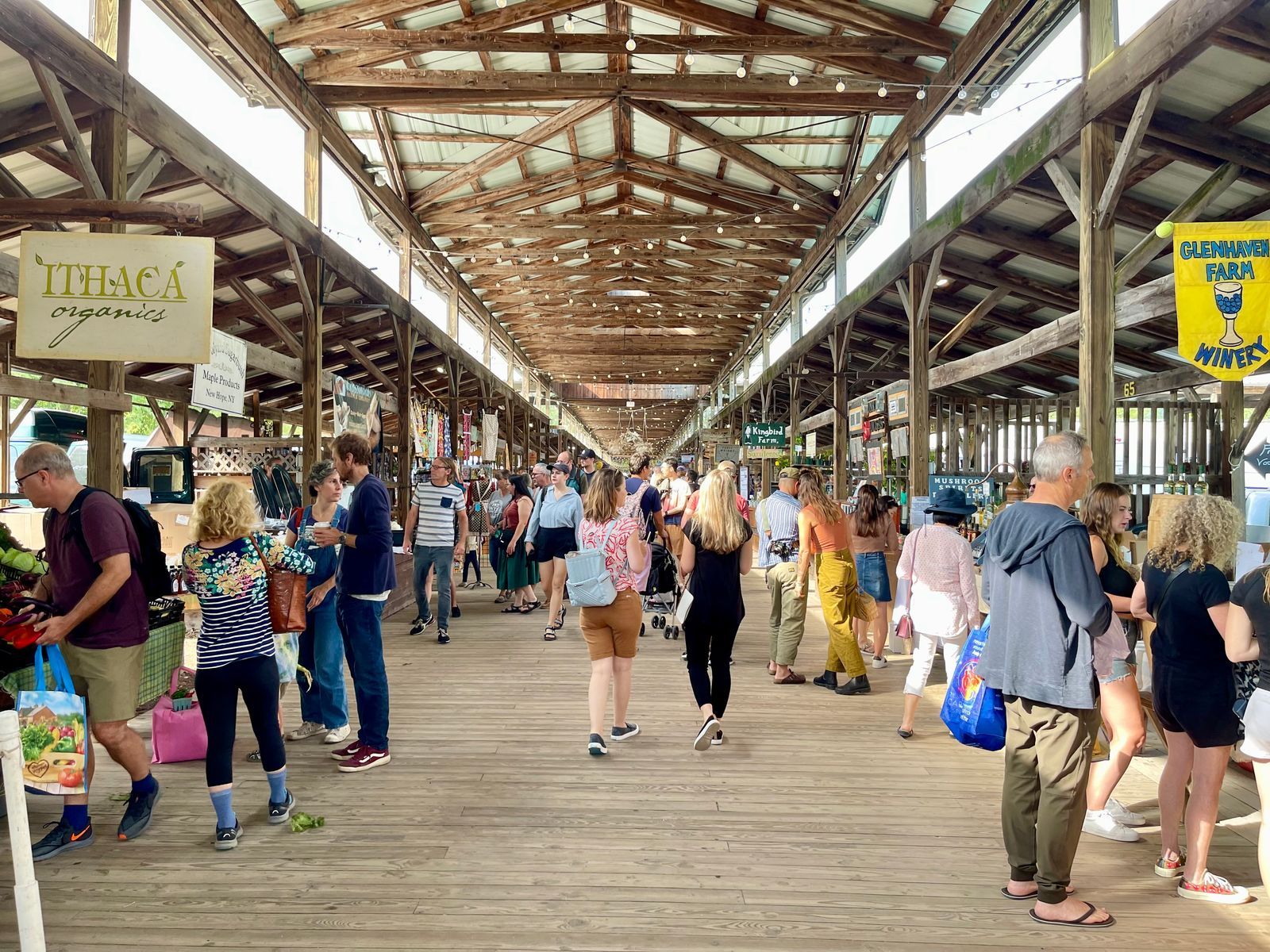
Victuals Market in Munich
The stalls in this, year around, market are unique and "inside out," sheds with displays pouring out into the pathways. Many are completely accessible and open to the outside. Corners are especially prominent here as they sport a variety of goods.
The stalls/sheds represent some of the most accessible ways of presenting large quantities of products in a relatively small area. Each "shed" might have 3 stalls, spilling out in all directions.
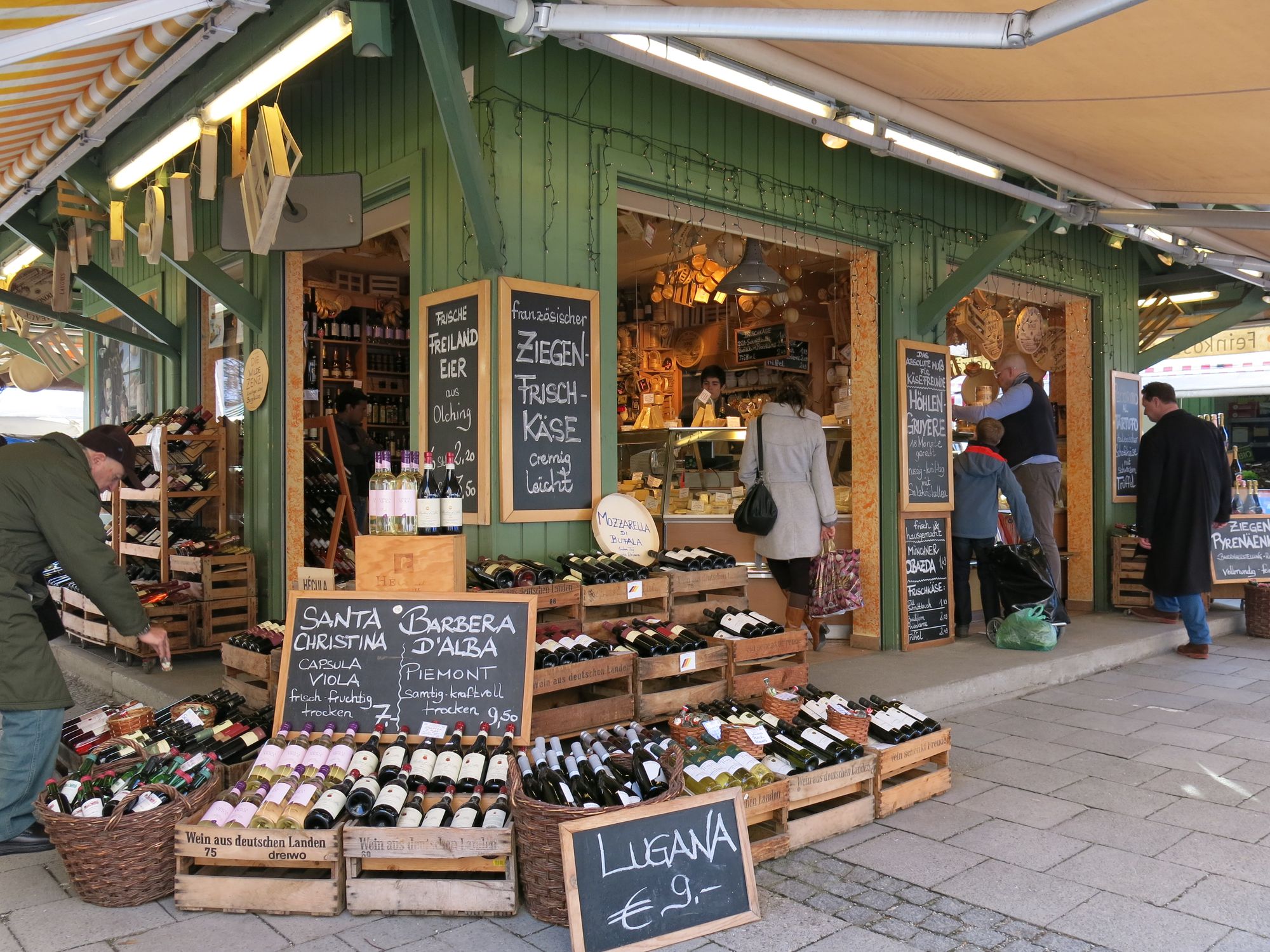
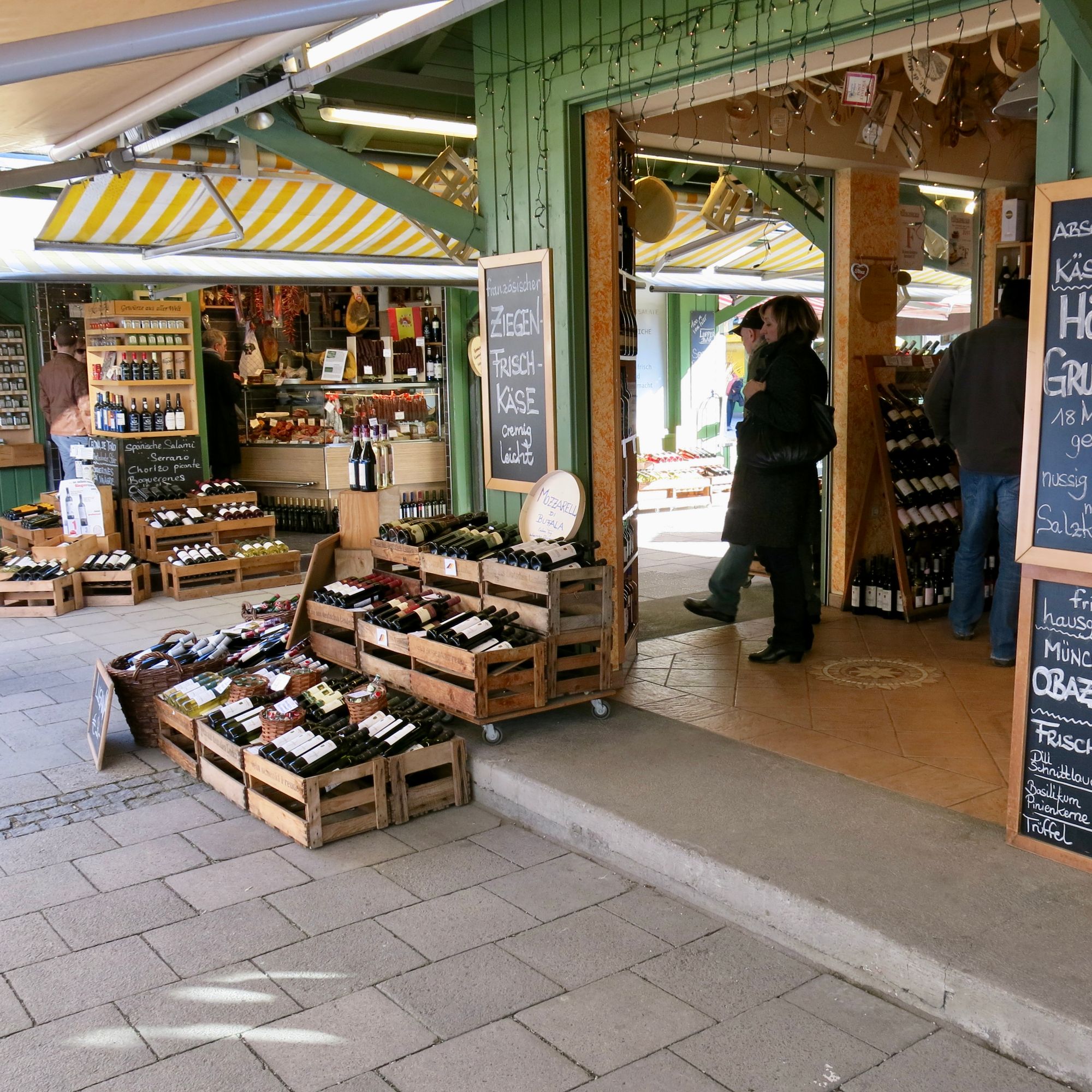
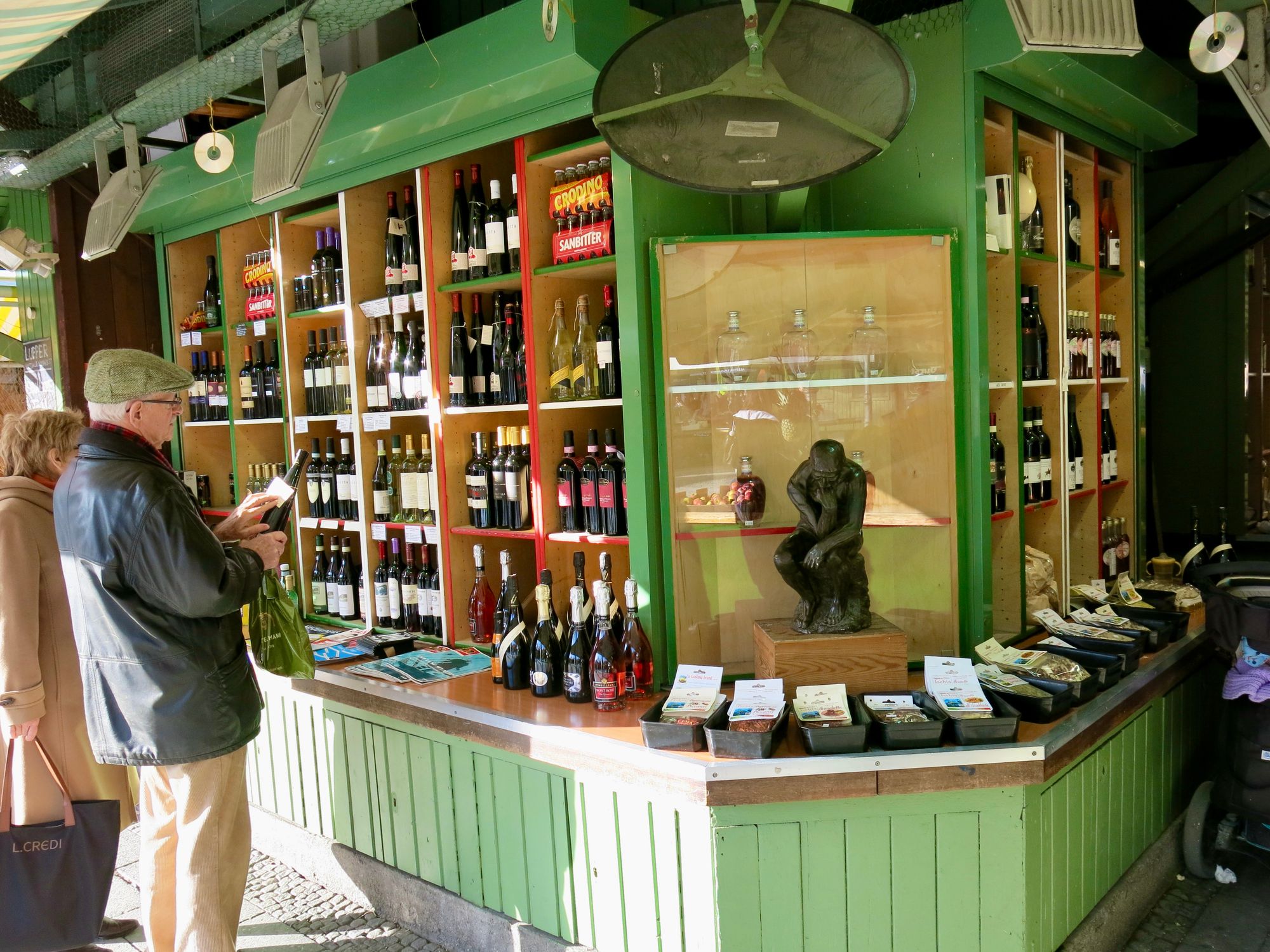

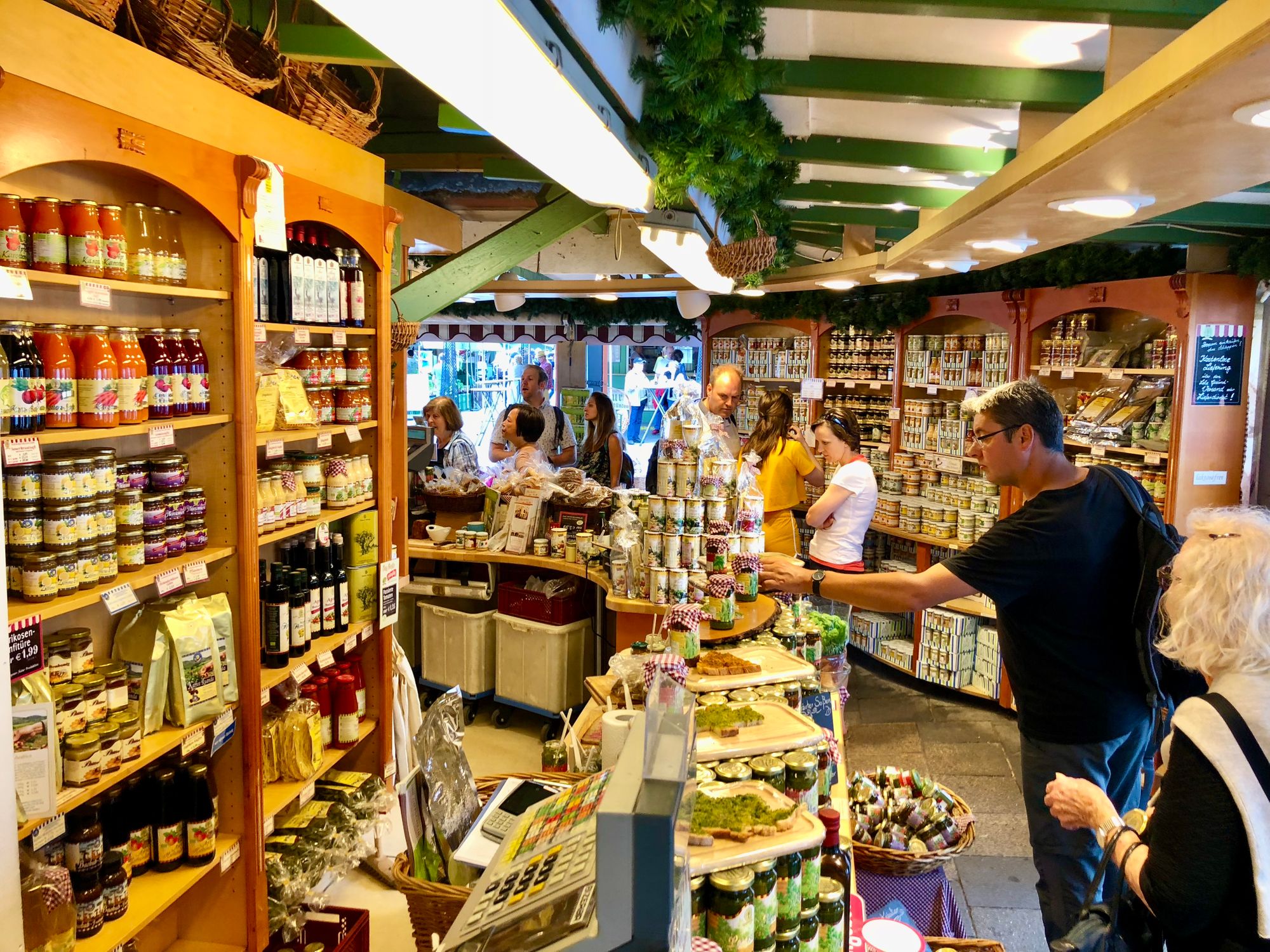
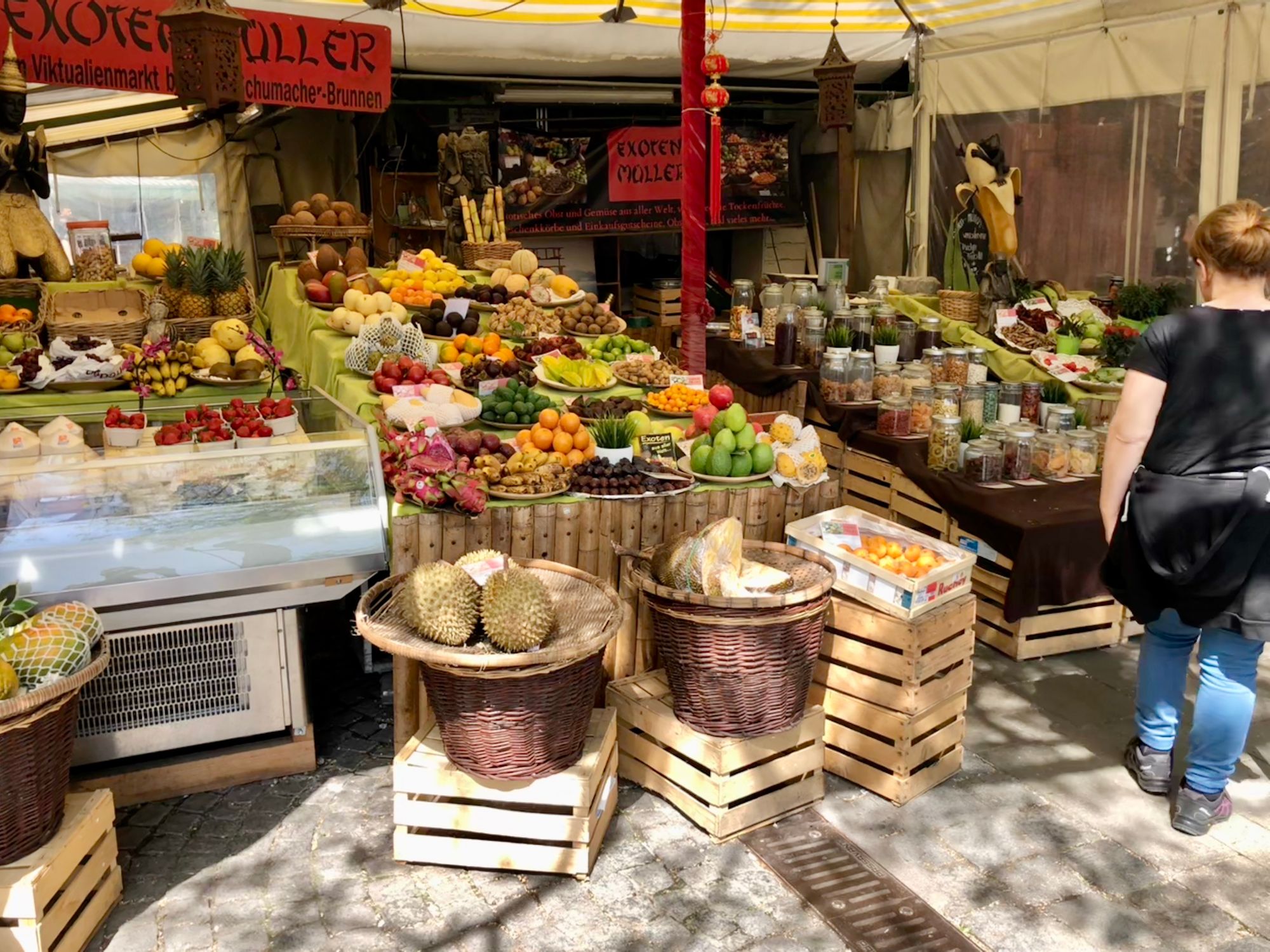
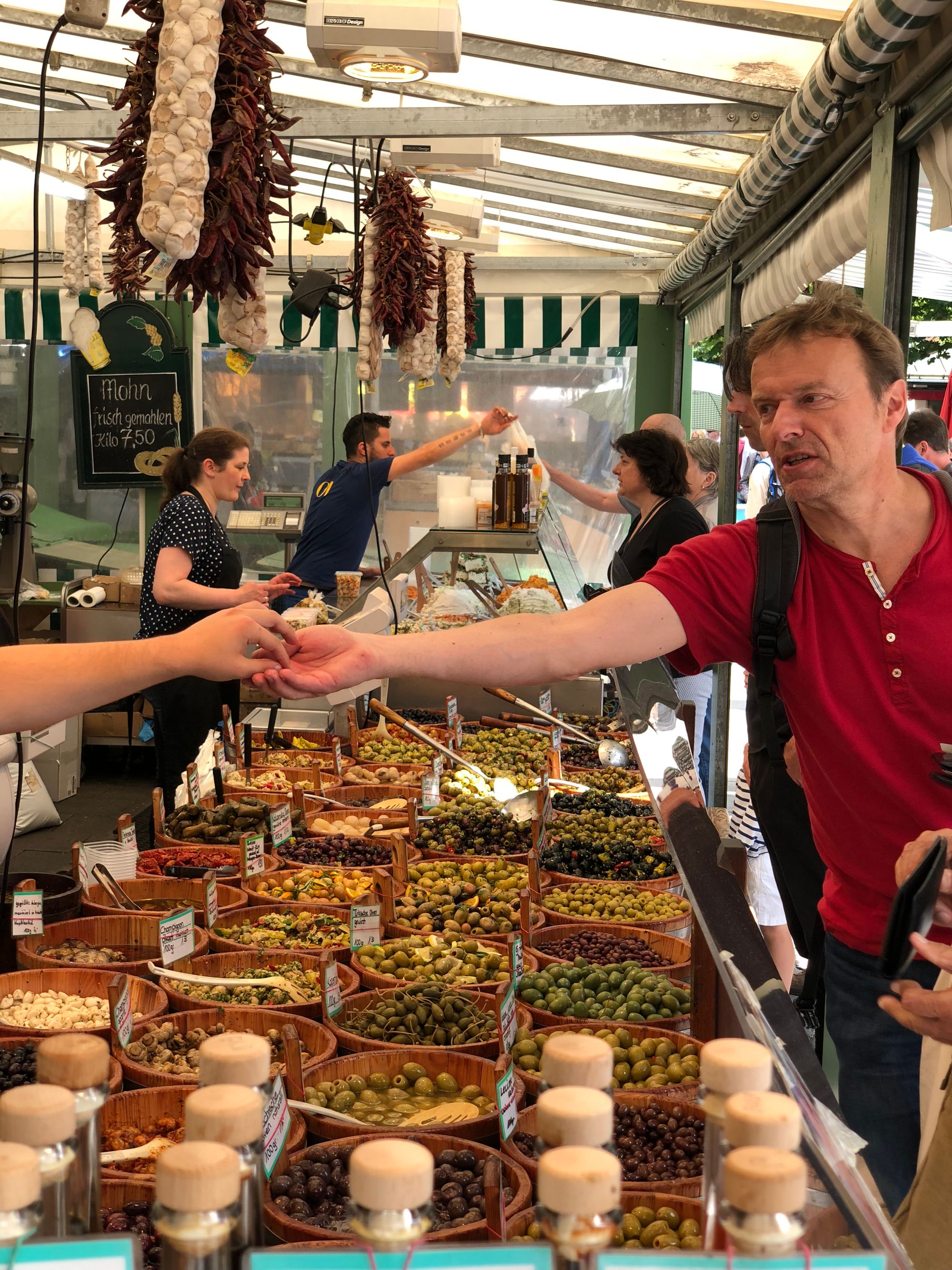
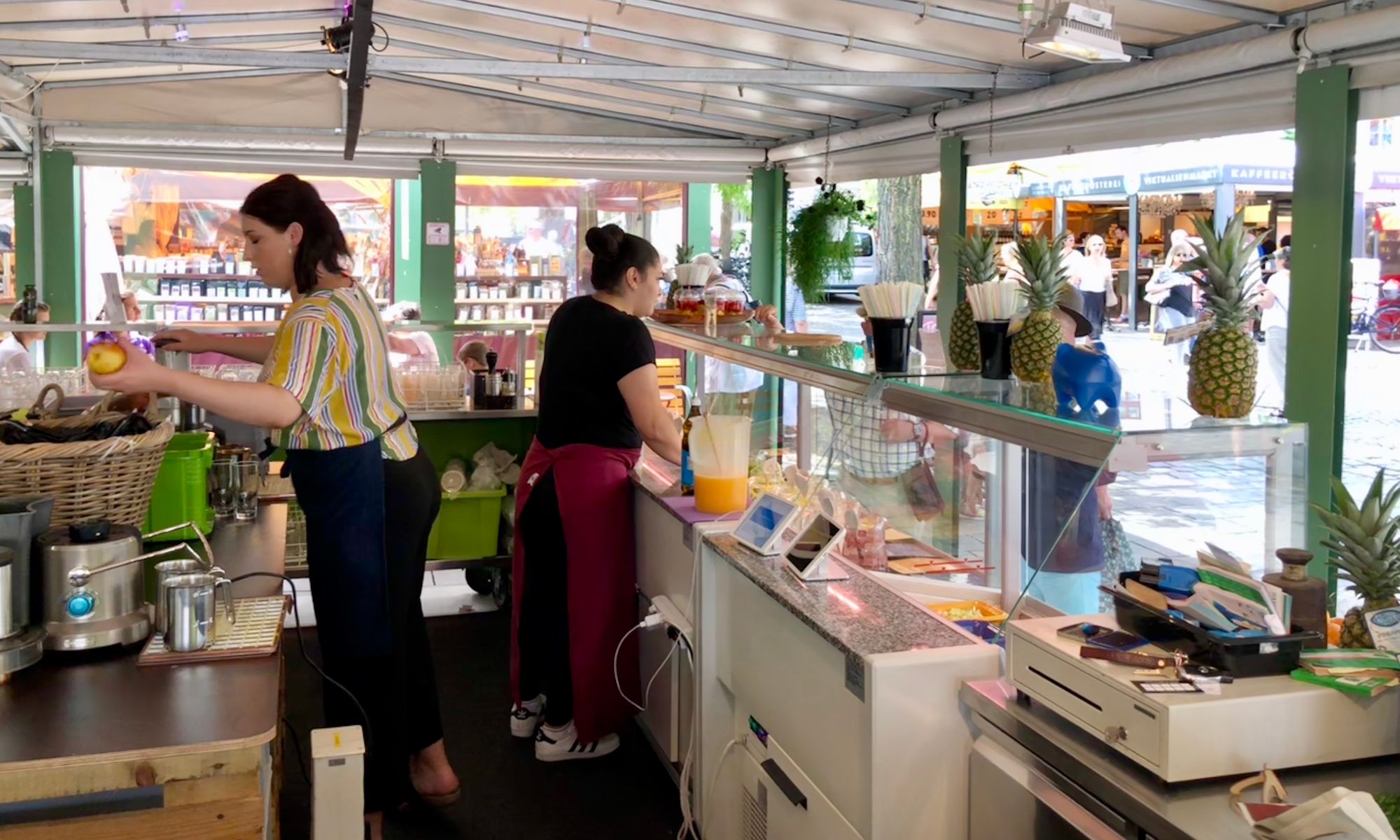
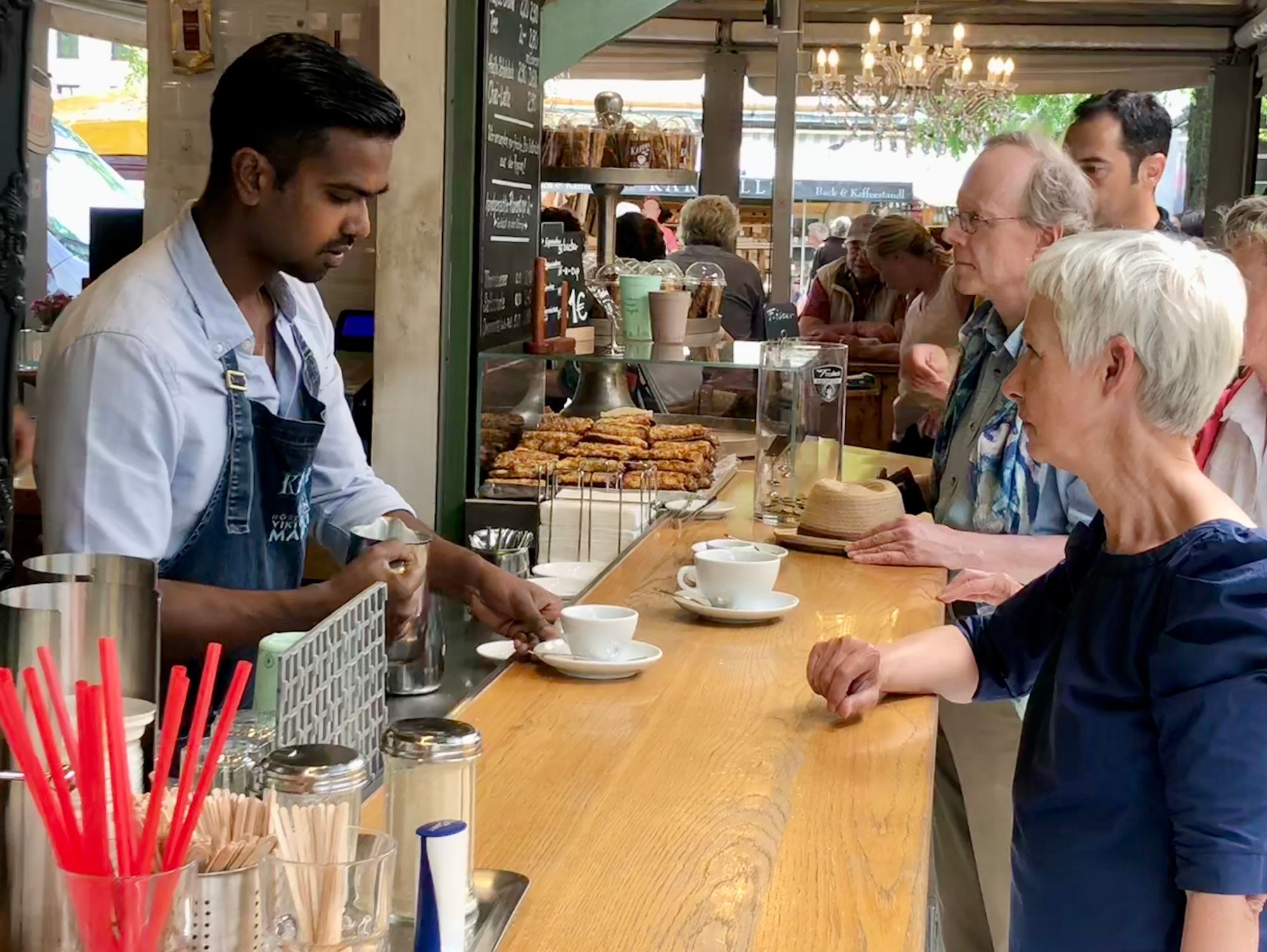
"Inside out" is a key part of each stall in the market
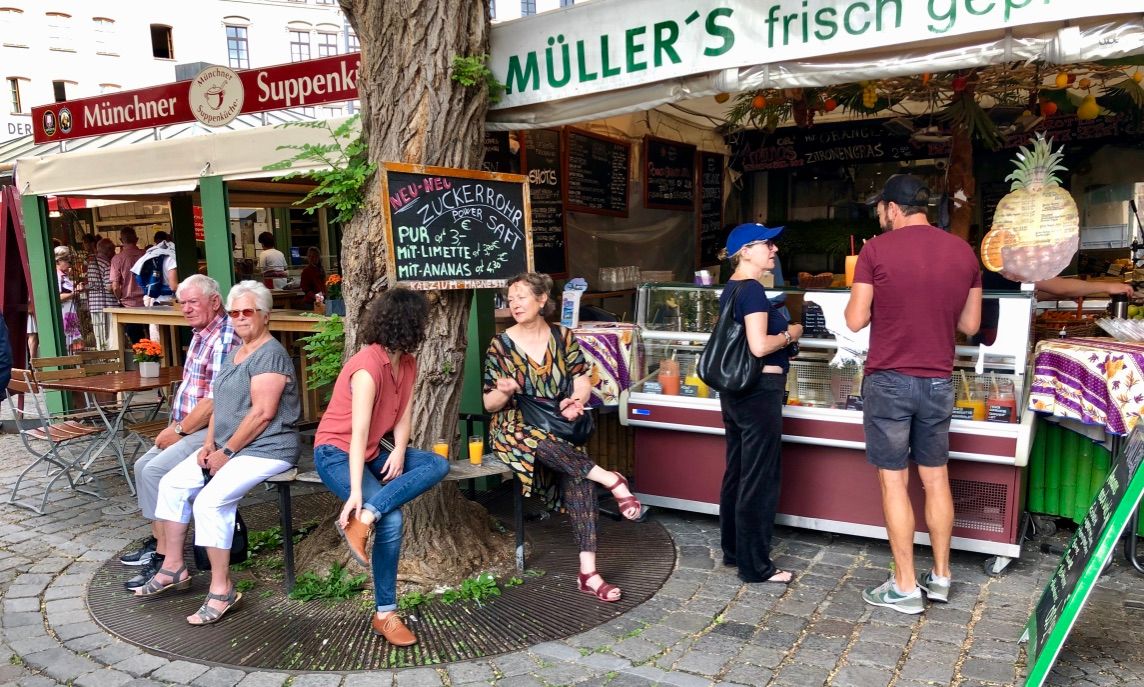
Gabriel's Wharf
Gabriel's Wharf in South Bank, London demonstrates how an under-performing public area lined by a dull building can be revitalized. Once an empty space, Gabriel's Wharf now offers a unique blend of food and retail and supports local businesses and entrepreneurs.
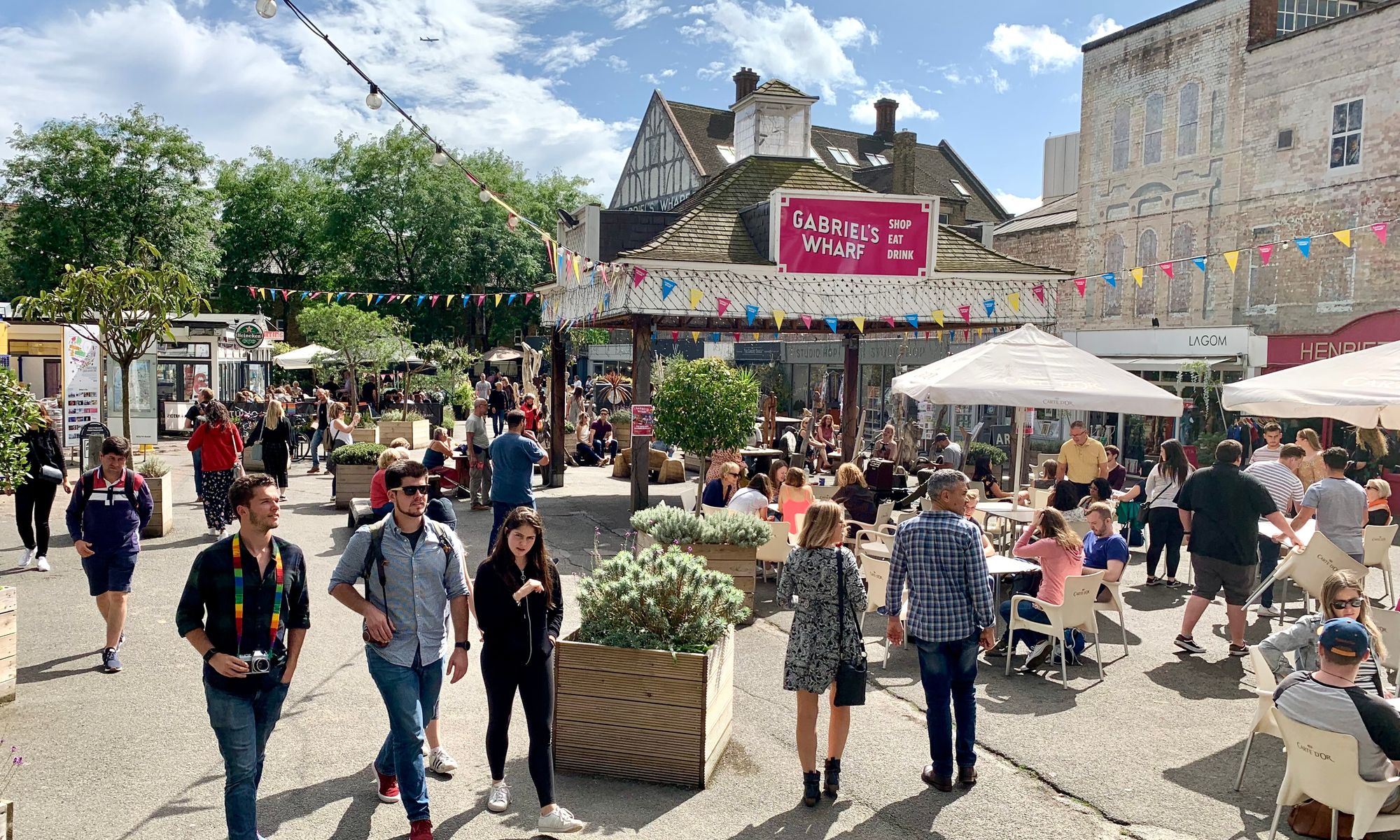
In 1988, a close friend of ours, Eric Reynolds, and his team transformed the big blank wall in this area into something magical with a spectacular mural depicting a Georgian shopping street.
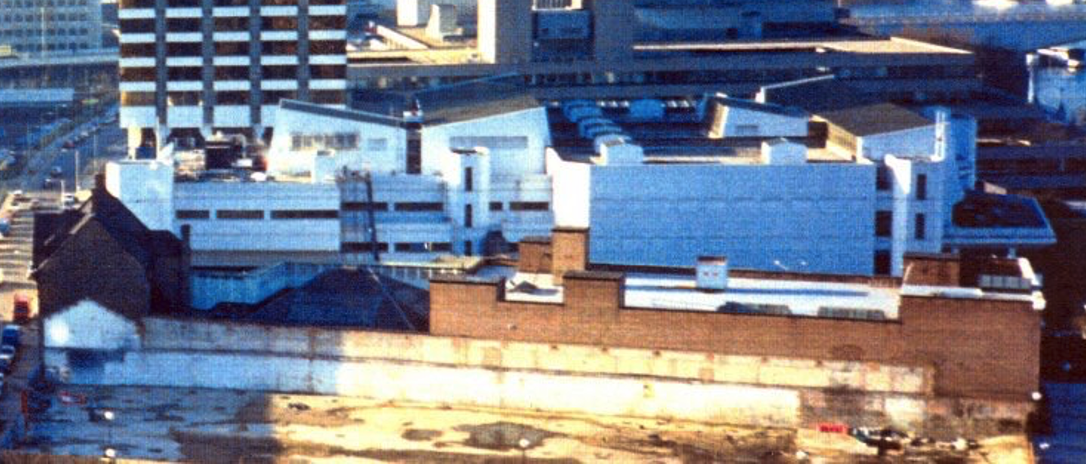
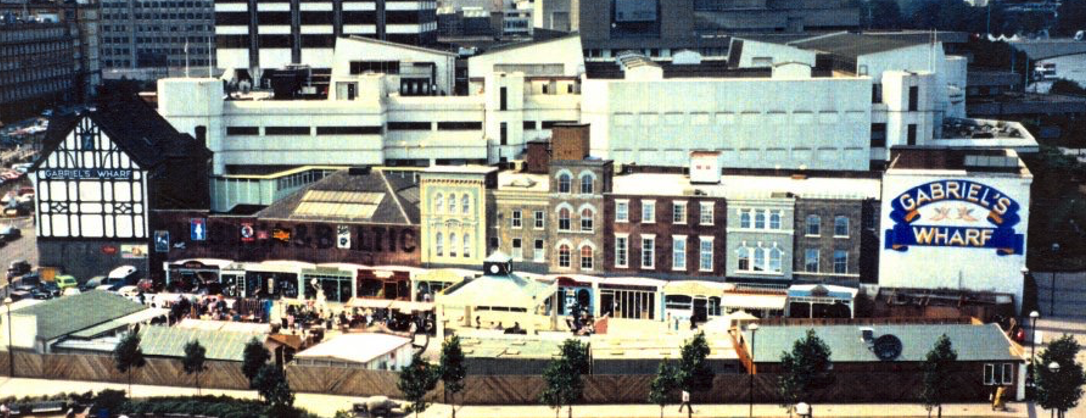
This quickly became the backdrop to a community of retail workshops, stalls, and restaurants built using garage structures with storefronts designed by artists.
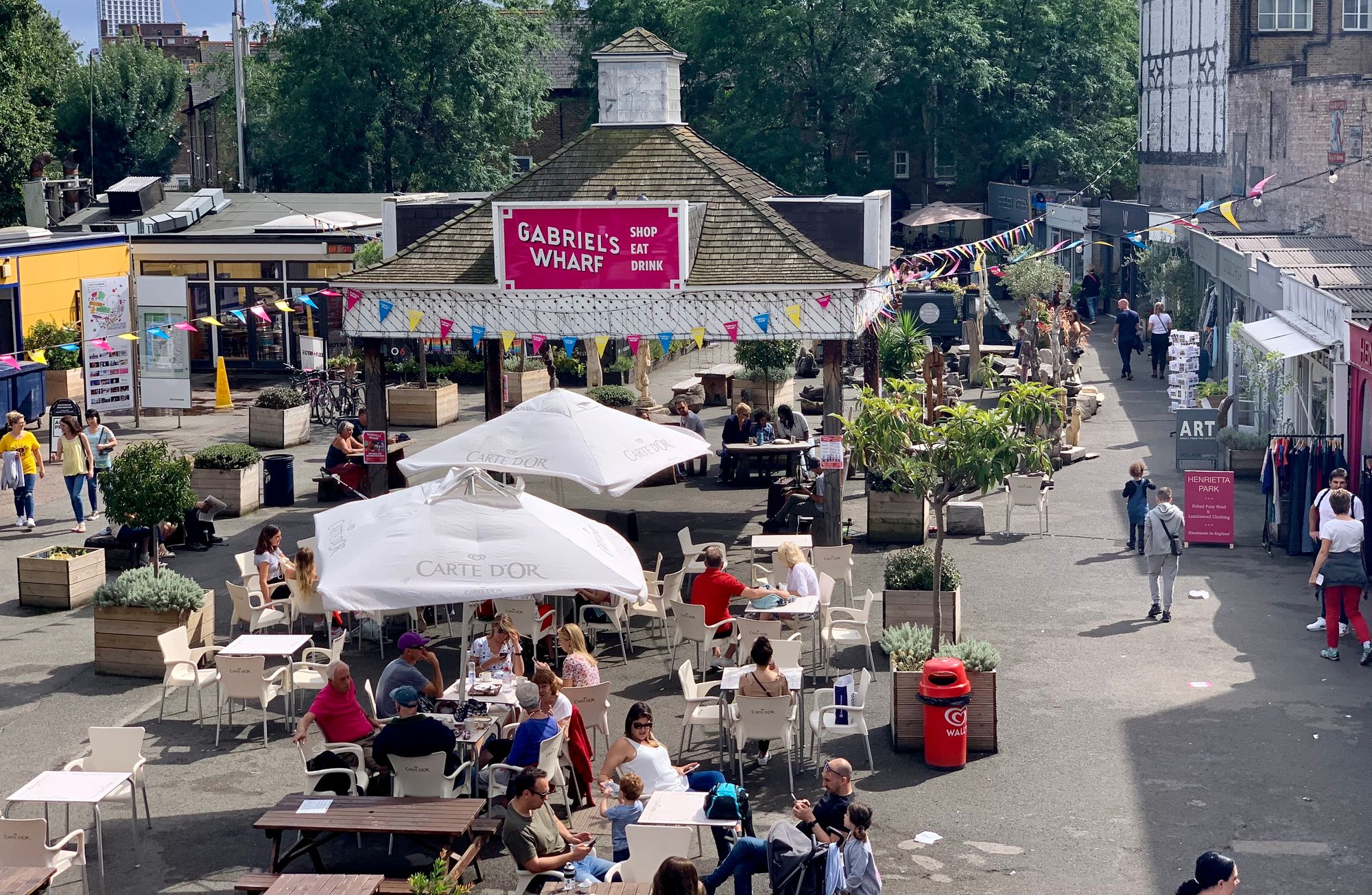
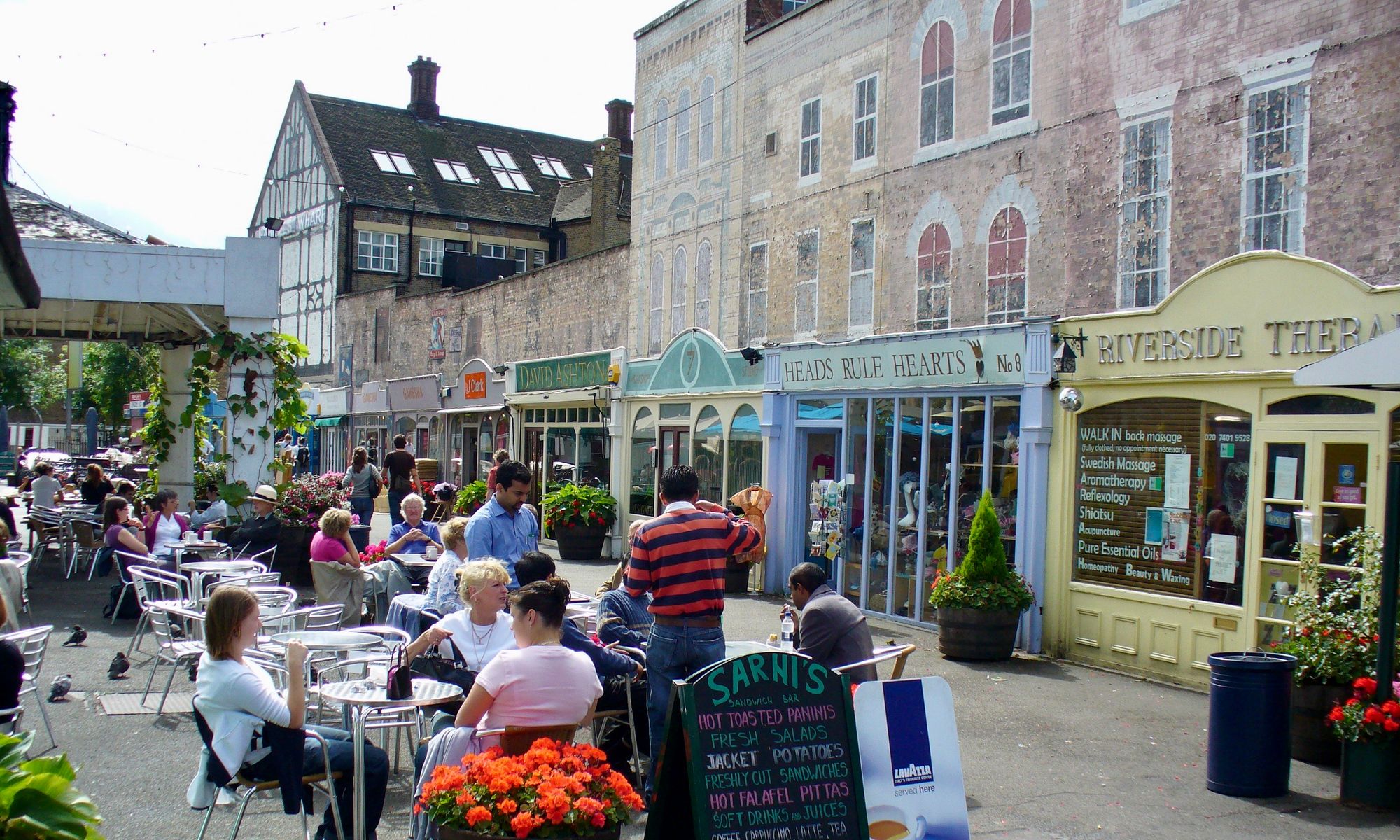
The "lighter, quicker, cheaper" interventions that spurred its transformation were so successful that it still flourishes as a center for shopping and dining more than three decades later.
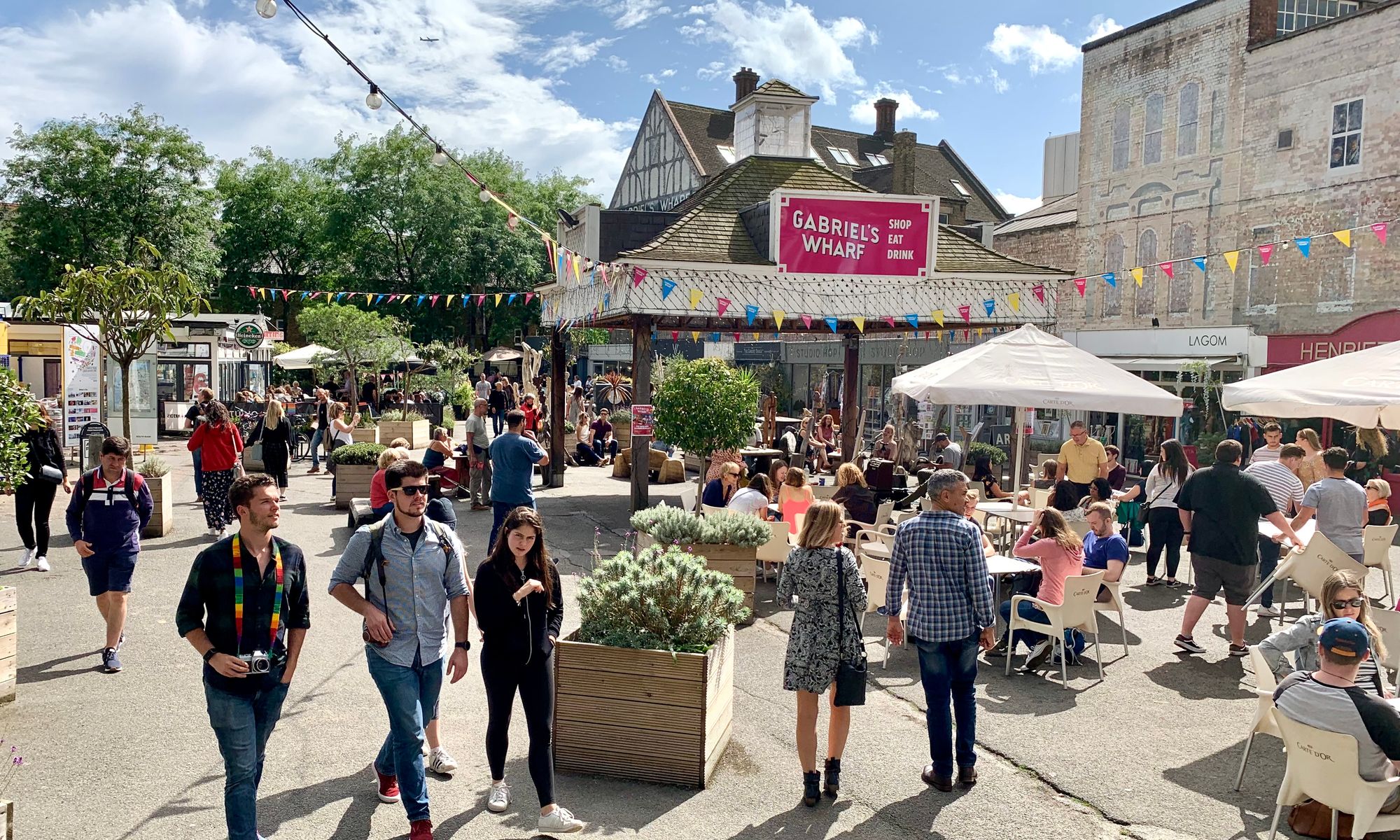
Takeaways
Great markets and squares are made great by dynamic LQC interventions, community involvement, and programming that draws in people from all walks of life. These destinations, often at the center of a city serve as the heart of communities where both residents and visitors thrive:
- Think Lighter, Quicker, Cheaper
- Experiment
- Focus on being multi-use destinations
- Create iconic places that reflect the community
- Bring in pop-up restaurants and cafes
- Incorporate public art
- Create comfortable, flexible seating
- Make the space serve everyone
- Make room to incubate local businesses
- Connect with nearby neighborhoods and other destinations
Making it Happen
There are many parts to the puzzle of making a great public square. It is a challenge that a strong private, non-profit entity in partnership with the city can successfully accomplish. Working together, this partnership can achieve the outcomes that a city needs. It cannot be government led or controlled. Politics change and these types of public spaces need to last for the long term, therefore they should be broadly community owned, managed, and constantly changing and adapting to new circumstances.
That said, making a great square/market happen is actually pretty easy if we understand a few key things:
- It's a gradual process. It won't happen all at once.
- You can't know what you are going to end up with and you shouldn't try to control the final state.
- You need to get all kinds of people involved, not let one person or organization manage it all.
- Offering a variety of activities and programs is key and the essence of a great public place.
- "If you think you're finished...you're done."
Placemaking is a very humbling experience because it is not about any one person, but about a lot of people shaping the future collectively. It involves setting up each space to be the venue for the community's creativity and innovation. Patience and respect are qualities that are important to convey as the effort evolves. Strong leadership is essential.
It could take five years to get a square to the level that it needs to become but it will never happen if we don't start now. A five year challenge should focus around doing short-term experiments (Lighter, Quicker, Cheaper activations). This process would be a watershed moment for any town trying to take their square to the next level because it would reveal what people truly want for the space. It would draw out the talent that is so present all around, just waiting to be involved. With strong leadership and sufficient funds to get started, you can get on a trajectory where in five years you will look back and ask, "How on earth did we get this far this quick?"
The best squares and markets focus on people. They provide a mix of spontaneity and programming, and become everyday urban stages where passersby are actors in a never-ending theater of life.
More on Squares:
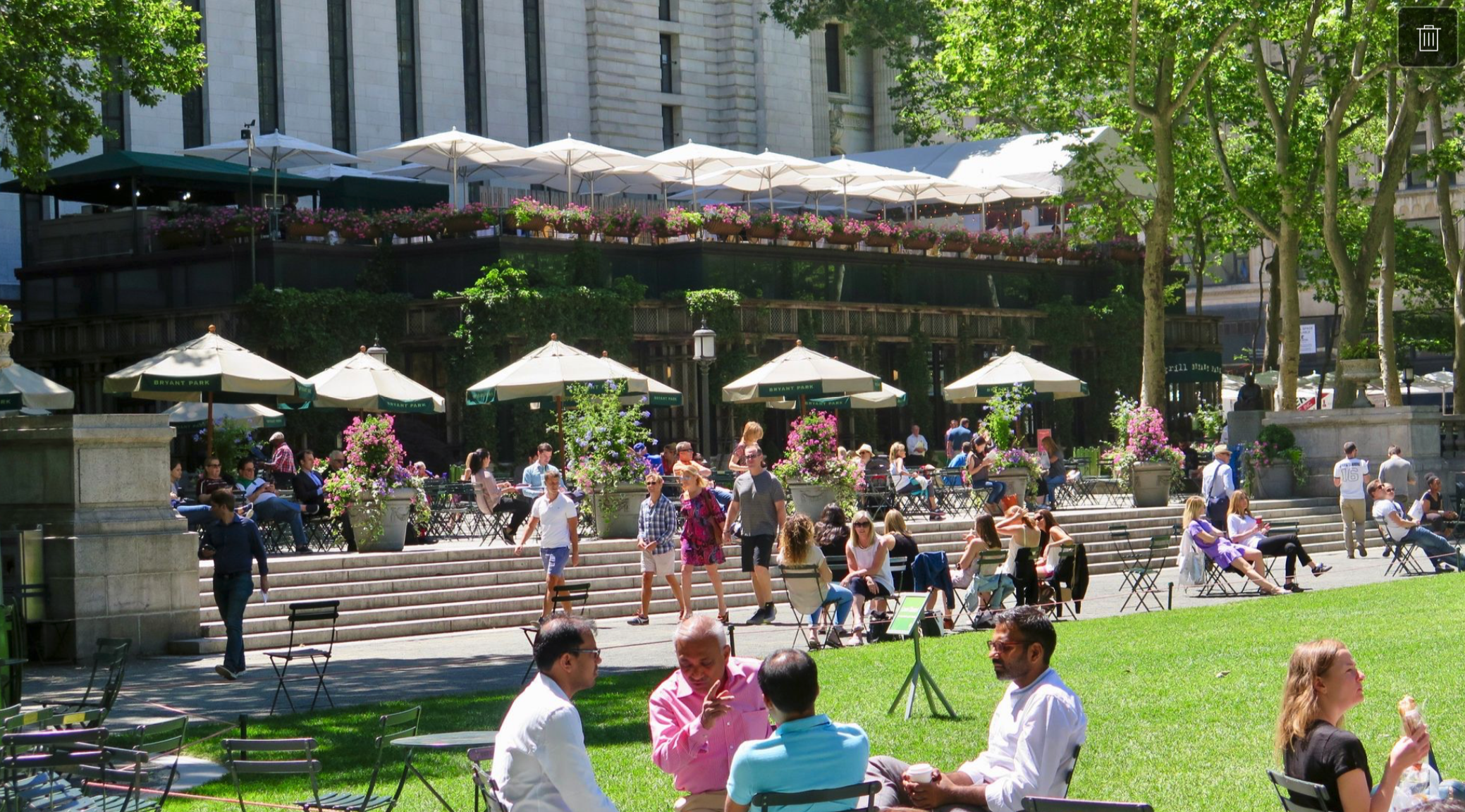
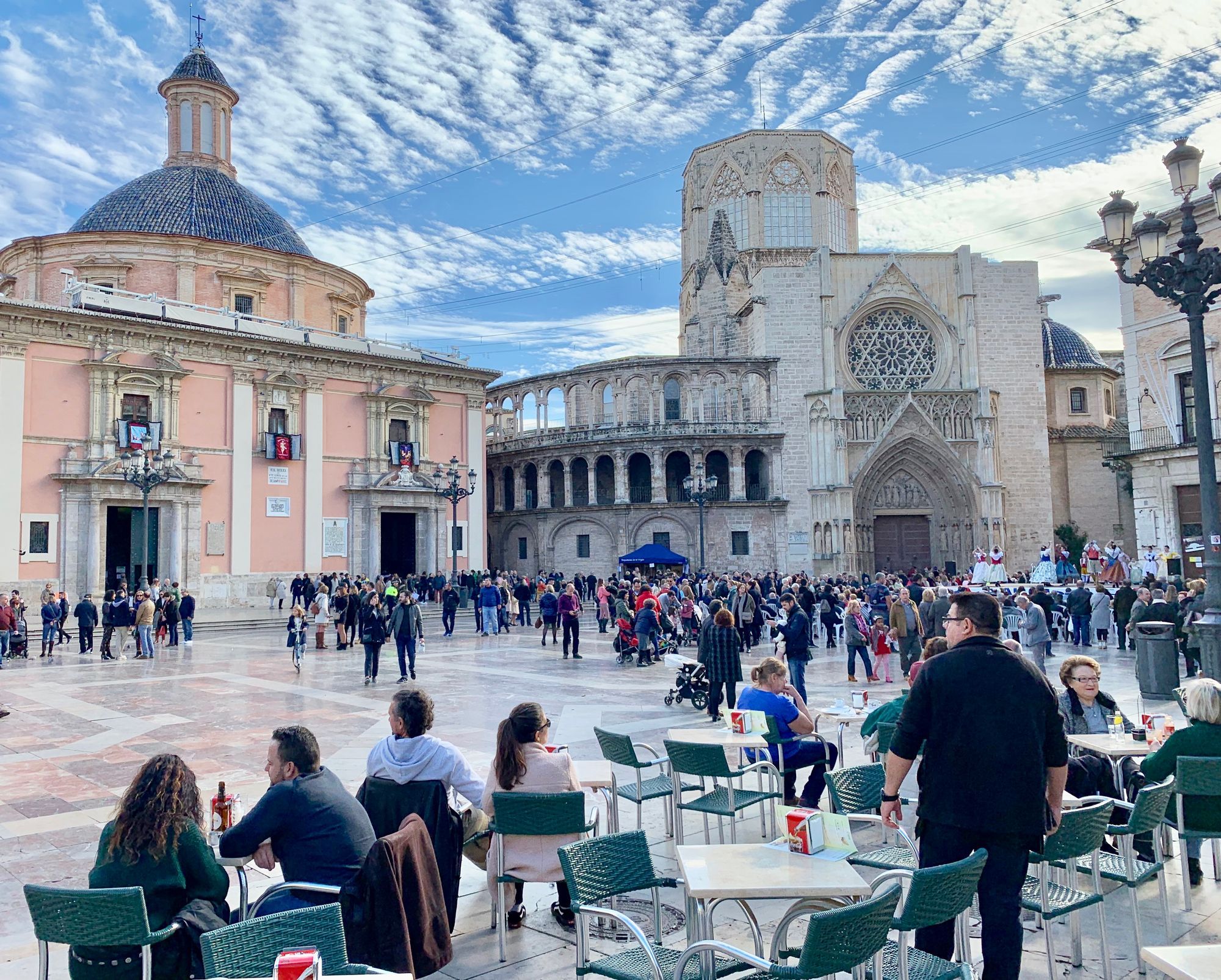
More on Markets:
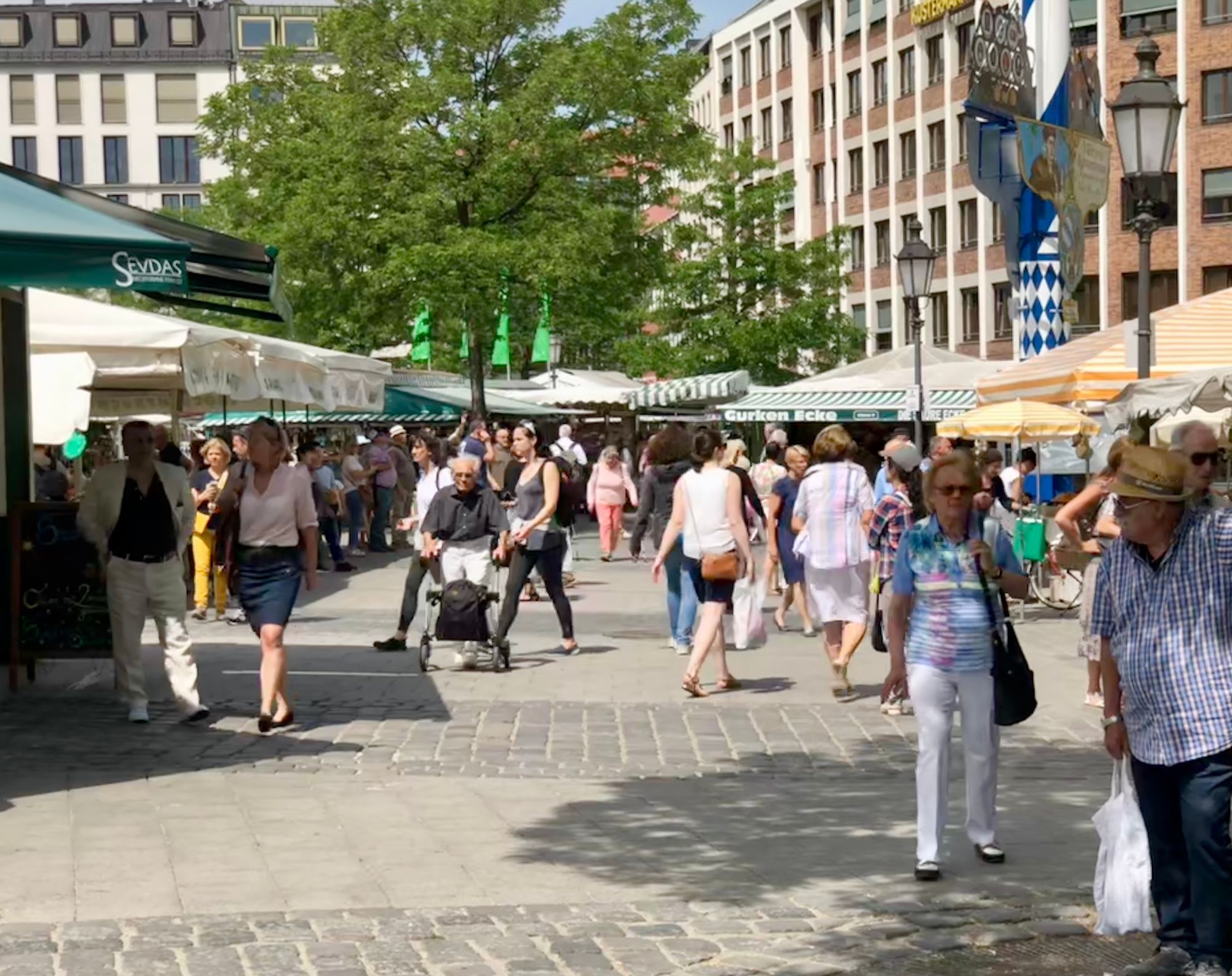
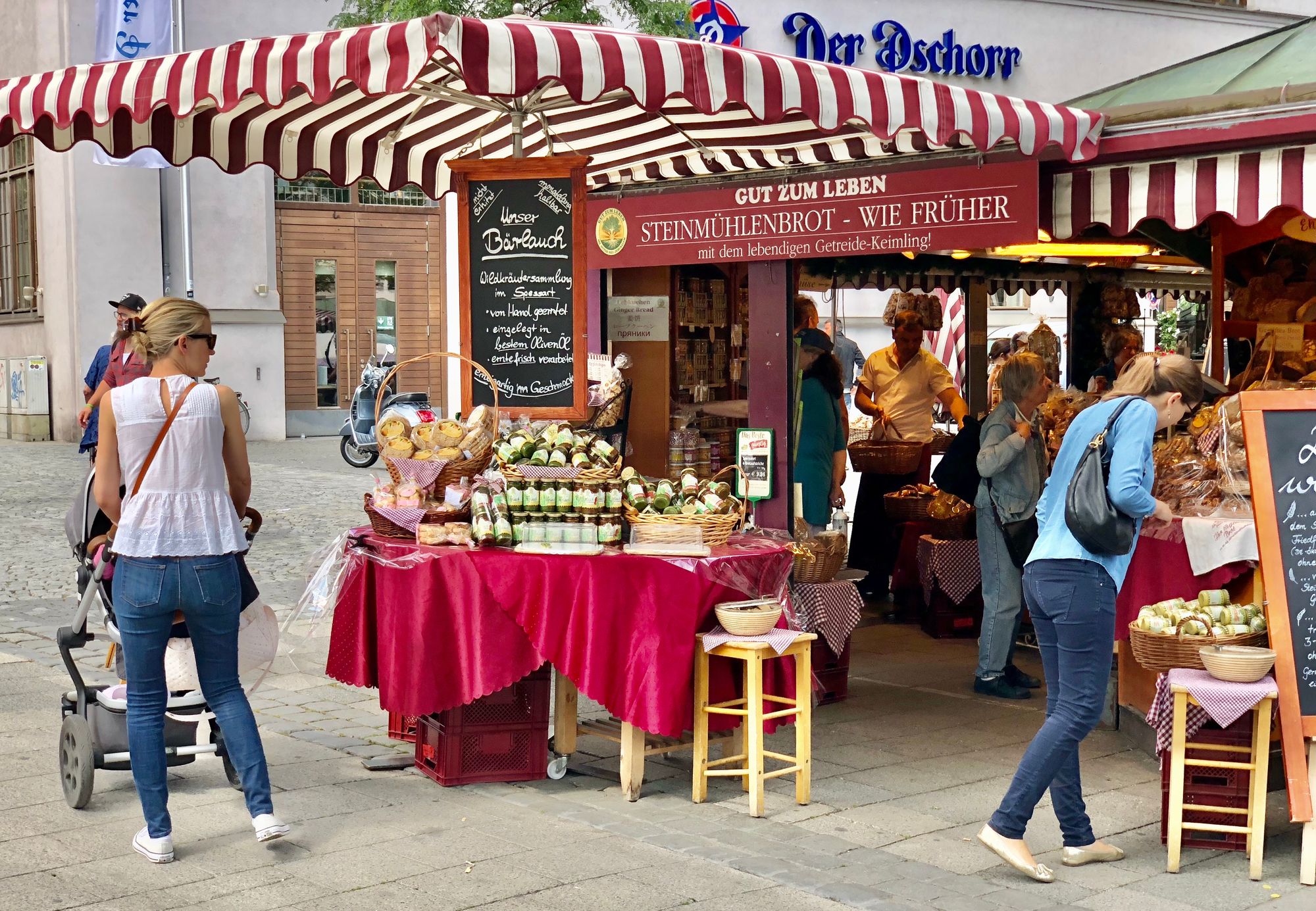

Who We Are
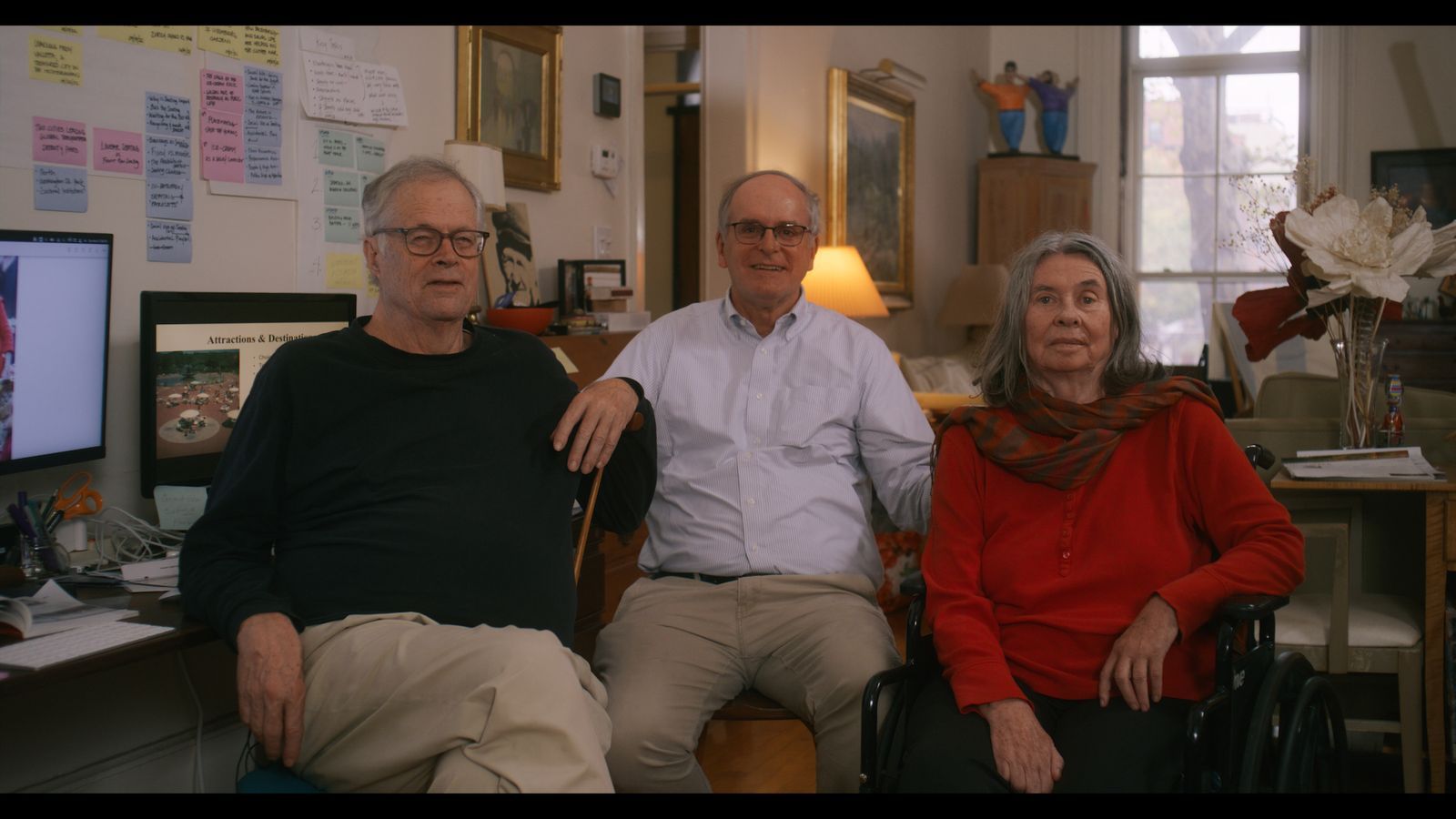
The Foundation and Future of the Placemaking Movement
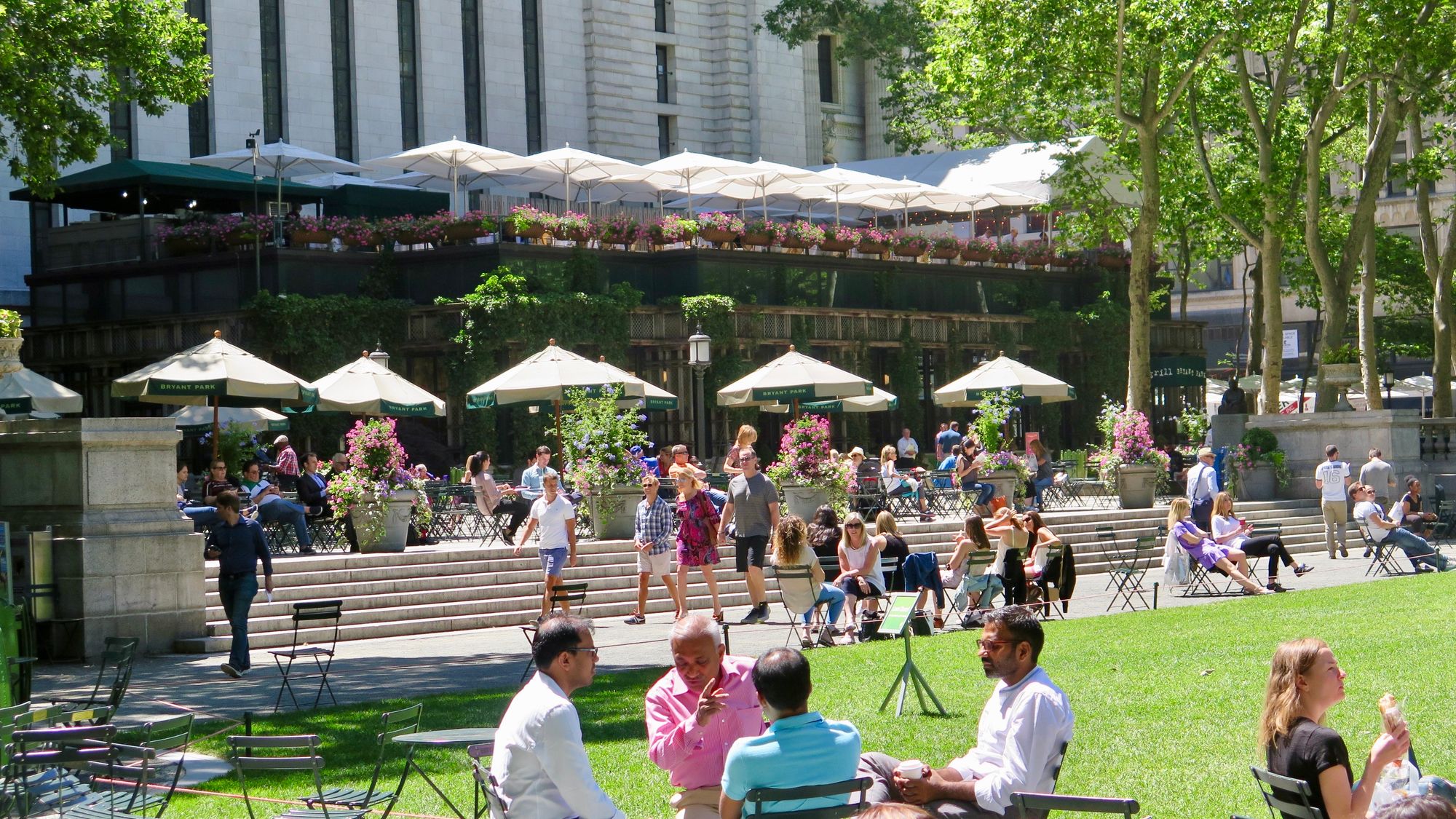
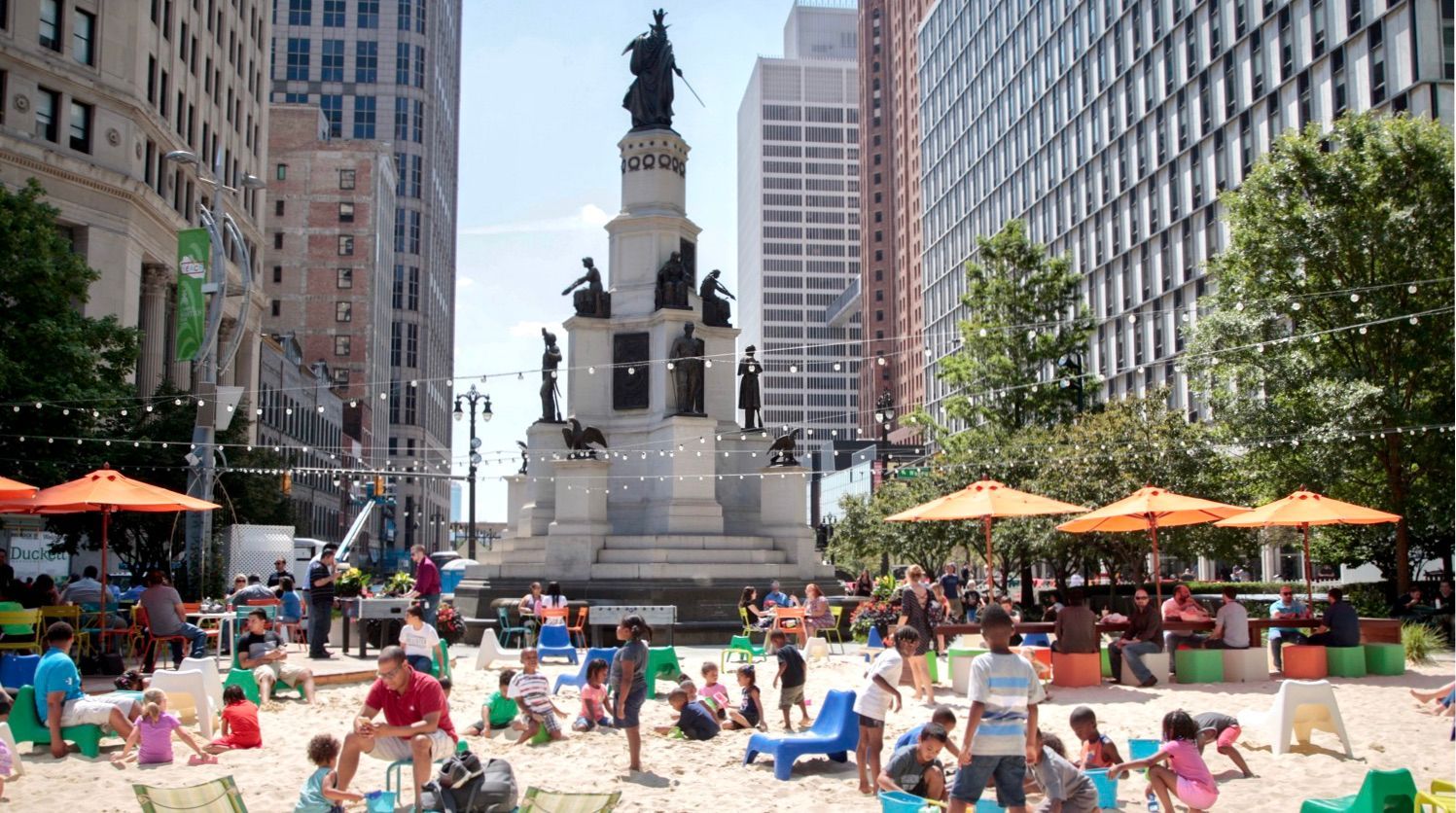
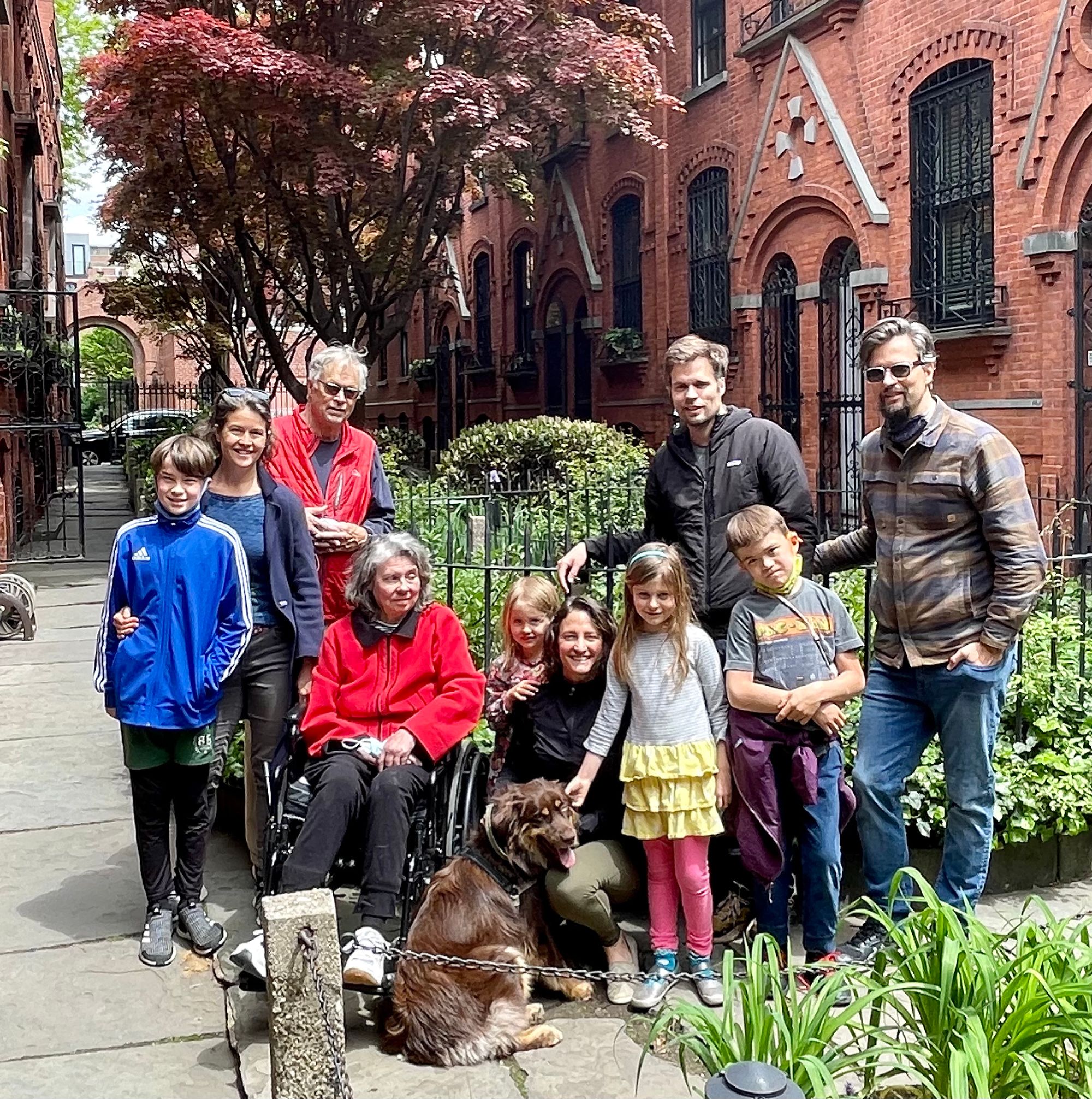
If you are interested in creating changes in your community, we can help put together campaigns to get started as a first step. We can also provide support for a larger effort including a resource team to help shape ideas to get started. We are also seeking funding to help start these local campaigns, including a placemaking resource center.






